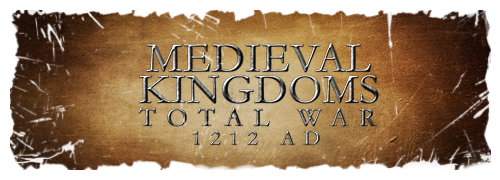
Credit to The Byzantine for the Logo and Signatures.
British Isles:
Kingdom of England
English Earldoms
Kingdom of Scotland
Kingdom of Gwynedd
Kingdom of Ireland
France:
Kingdom of France
Duchy of Burgundy
Provence
County of Toulouse
County of Flanders
Holy Roman Empire:
Holy Roman Empire
Duchy of Bavaria
Duchy of Saxony
Duchy of Lorraine
March of Brandenburg
Duchy of Savory
Duchy of Austria
Kingdom of Bohemia
Schwyz
Friesland
Italy:
Republic of Venice
Republic of Genoa
Republic of Pisa
Duchy of Lombardy
The Papacy
Kingdom of Sicily
Spain:
Kingdom of Aragon
Kingdom of Castile
Kingdom of Leon
Kingdom of Navarre
Kingdom of Portugal
Almohad Caliphate
Central Europe:
Kingdom of Hungary
Second Bulgarian Tsardom
Grand Principality of Serbia
Banate of Croatia
Banate of Bosnia
Scandinavia:
Kingdom of Denmark
Kingdom of Sweden
Eastern Europe:
Greater Poland
Lesser Poland
Duchy of Silesia
Duchy of Pomerania
Teutonic Order
Kingdom of Lithuania
Kievan Rus
Galicia-Volhynia
Cuman Khanate
Ryazan-Murom
Volga Bulgars
Byzantine Successor States:
Empire of Nicaea
Latin Empire
Empire of Trebizond
Despotate of Eprius
Anatolia and the Middle East:
Sultanate of Rum
Cilician Armenia
Crusader States
Ayyubid Sultunate
Kingdom of Makuria
Hafsids
Banu Ghaniya
Rasulids
Oman
Zengid Dynasty
Kingdom of Georgia
Shirvan
Kingdom of Abkhazia
Abbasid Caliphate
Khwarezmian Empire:
Khwarezm
Ahmadilis
Bavandids
Hazaraspids
Salghurids
Now if there were factions you wanted to see that didn't make it on this list, it was either due to constraints from the city limit.... or we have them for emergents! I also put the Mongols here as well since they kind of straddle the line.
Emergents:
Mongol Horde
Moldavia
Transylvania
Wallachia
Ottomans
Dauphine
Brabant
Tungul
Nogais
Armenia
Gascony
Tuscany
Verona
Aquitaine
Thuringia
Obortrites
Prussians
Circassians
Kurds
Sardinia
Valencia
Murcia
Granada
Cordoba
Morea
Khazaria
Lettgians
Ragusa
and more...
Religion List:
Catholicism
Orthodoxy
Sunni Islam
Shia Islam
Tengri
Paganism
Bogomiliism
Nestorianism
Catharism
Agents: TBD
Release Date: TBD
Links:
Total War Center:
Twcenter.net(MKTW)
Ayyubid Sultanate and The Mamluk Sultanate
(Provisional Unit Roster)
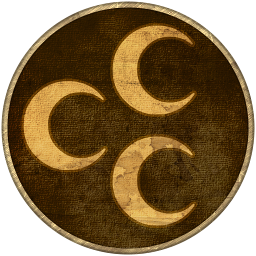
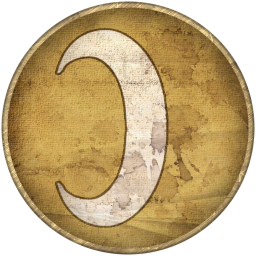
Note that unlike the usual unit roster development in MK1212, where the developer creates and requests a large number of new assets specifically for its development; The unit roster as shown mainly uses already-existing assets. This is done with the consideration that it is better to whip up a competitive and functional roster for factions quickly with what we have in hand. This is a much better option rather than leaving factions not having units or their own, missing entire tiers of units, or having their unit rosters barebones across tiers.
Therefore, we choose to create a unit roster framework that can be easily updated over time. After all, it is easier to update the visuals of the unit than updating the database and startpos dependencies of the mod. I understand that the models used in the current Ayyubid and Mamluk roster are not necessarily the most accurate nor suitable. Or, there are specific equipment and attire which the units should have, but don't. When time allows, we shall update the variantmeshdefinitions of the units with new models whenever possible.
Renowned royal Mamluk cavalry core and Amir's Mamluk cavalry, supported by decent but weakening infantry, disdained and considered as an afterthought
Strength: The best-trained Military Slave Cavalry of the Islamic World.
Weakness: Need for Slaves to unlock Mamluk units. Mamluk Domination came at the expense of other units. Weak Infantry outside of the elites.
Elite Bodyguards
Halqa al-Khassah
Halqa means Ring or Circle, and Al-Halqa al-Khassah were the Ayyubid Sultan's elite inner circle guard. They were composed of knights with small fiefs and free small landholders serving the central administration, although sometimes a Mamluk can be a member of the Halqa. The Halqa al-Khassah holds a prestigious position, especially in Salahuddin's reign, and even in the early Mamluk era, where they occupied the same place side-by-side with the Bahriyya Mamluks. This was not to last, however, as the Mamluks in their land redistribution in order to centralise power rendered the Halqa powerless.
Tier 1
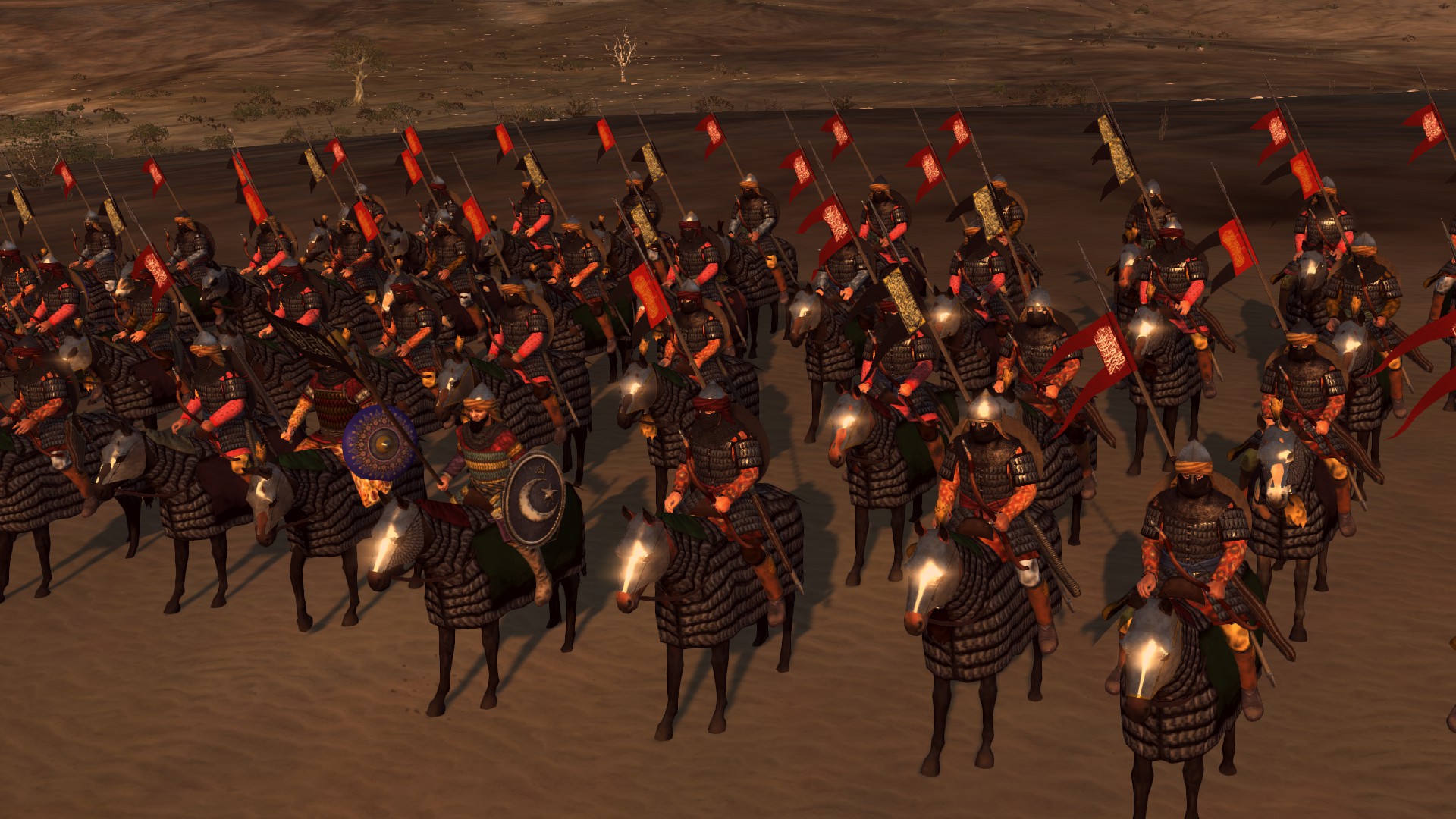
Mamalik al-Bahriyyah
Sultan As-Salih Al-Ayyubi (rules 1240-1249) in his rise to power transformed the Ayyubid Sultanate in several ways. First, he attempted to change the Sultanate from a confederation of principalities where the Ayyubid Sultan was the primus inter pares, into a centralized autocratic state. Second, to centralize the military power, he recruited Mamluk in en-masse. These changes led to the foundation of the later Mamluk sultanate. Amongst the purchased Mamluks he trained to be the new core of the army, he organized into two units: The 200-men strong Jamdariyyah and the 800-men strong Bahriyyah. The Bahriyyah namesake was the river island barrack they were based in. It was the Bahriyyah Mamluks who in the end toppled the Ayyubid Dynasty's rule over Egypt and Syria, forming the first dynasty of The Mamluk Sultanate.
Tier 1
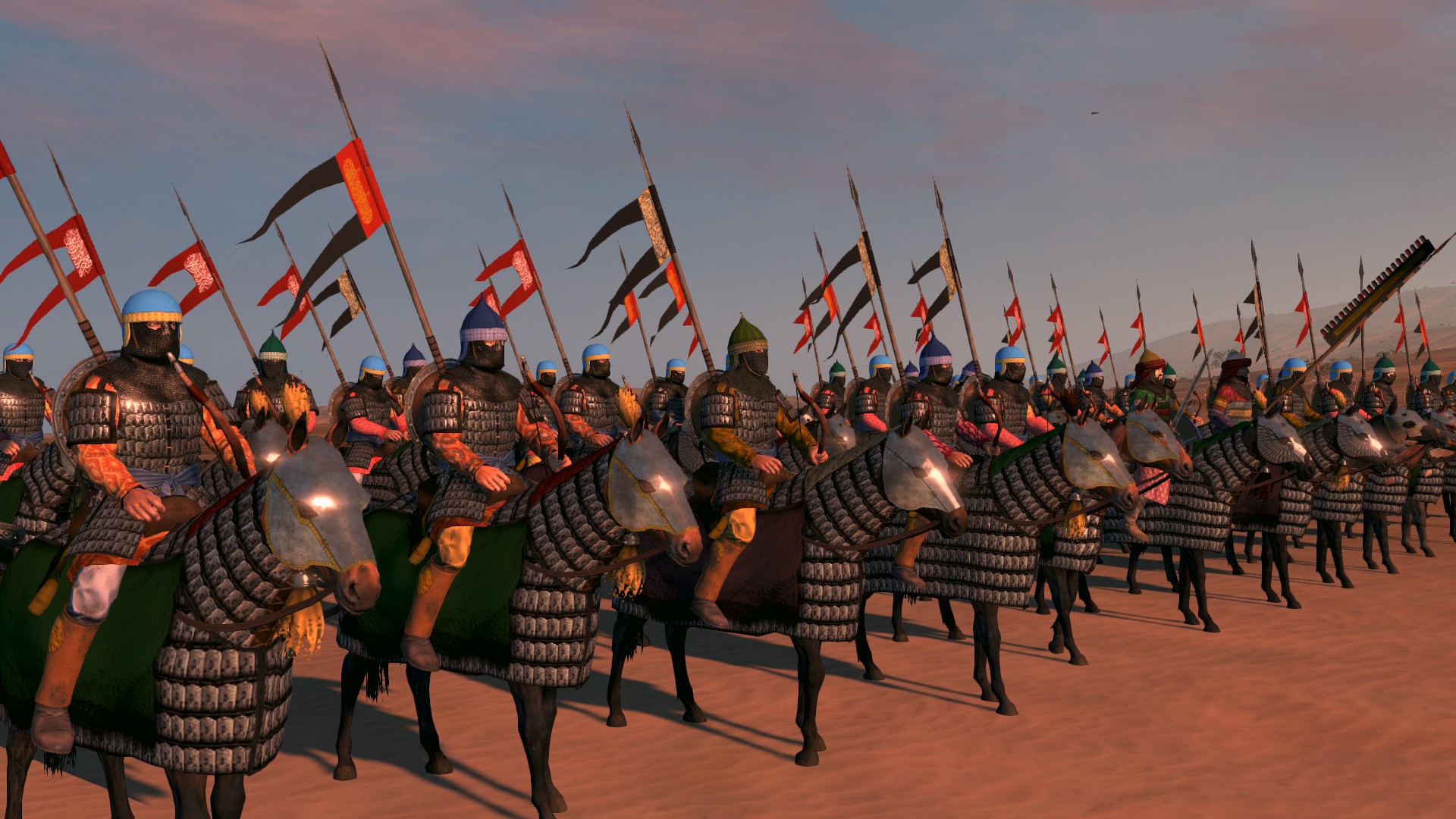
Mamalik al-Jamdariyyah
Tier 1
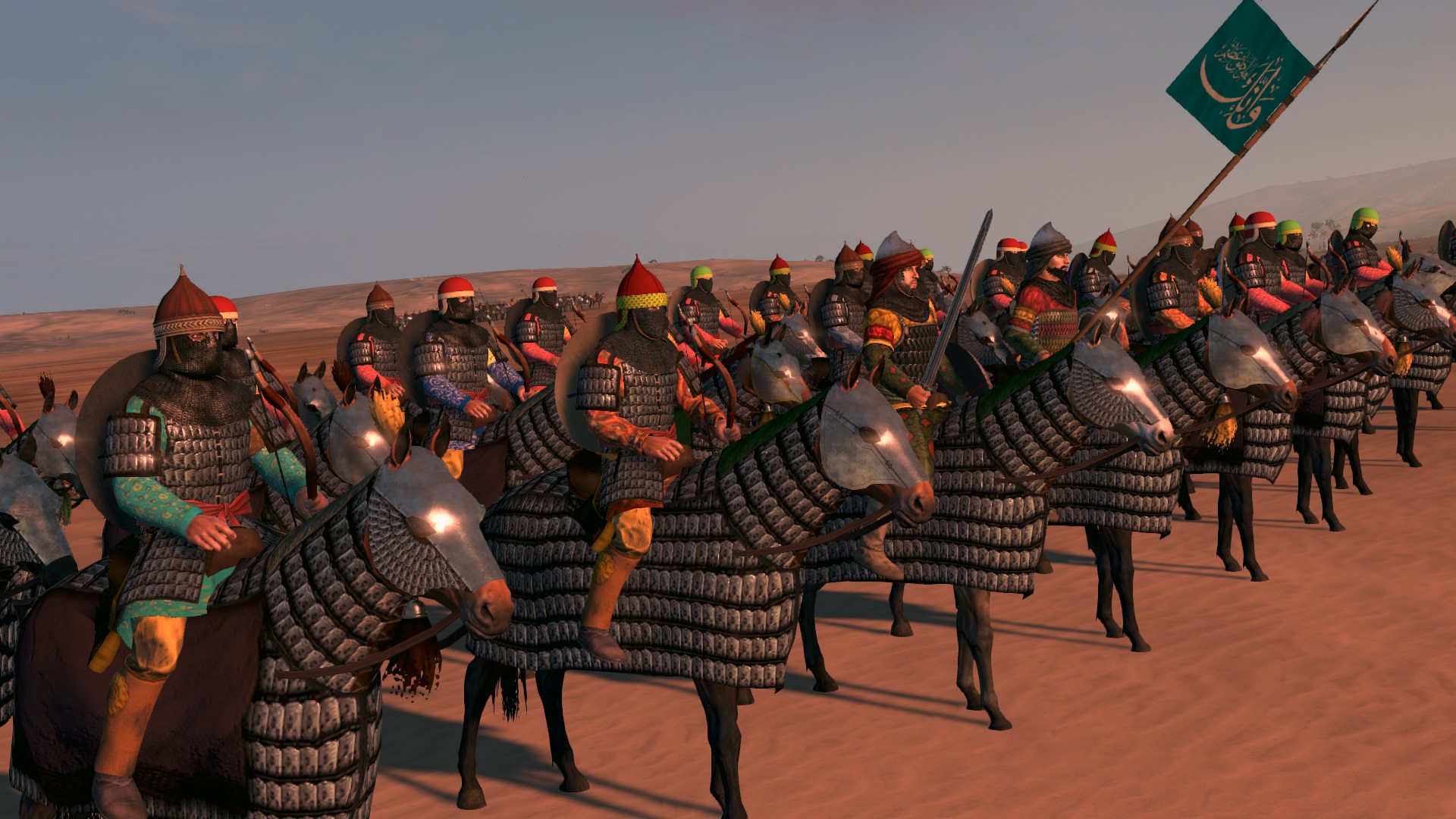
Mamalik al-Khassakiyyah
The Khassakiyya Mamluk were the Sultan’s Elite Corps of Bodyguards and select retinue. Most Mamluk Amirs reached their position via membership in the Khassakiyya corps. Al-Qalqashandi adds that they are differentiated by their brocaded tiraz band given to them, and they are admitted to bear their swords in the sultan’s presence, even privately. To be a Khassakiyya, one must be a Mushtarawat or Mamluk bought and freed by the reigning Sultan, and distinguishes himself from the ranks of the Julban. Their number fluctuate over time. At first, they numbered 24 to 40 men, then 80, then increased to 400. One source even claims that they were increased to 1000 during the rule of an-Nasir Faraj in the early 15th Century. His successors scaled them down to 80, then 40 again. During the reign of al-Qansuh Ghawri they have increased again to 800 in 1503, and later to 1200 around the Mamluk defeat to the Ottomans in 1517.
Tier 2
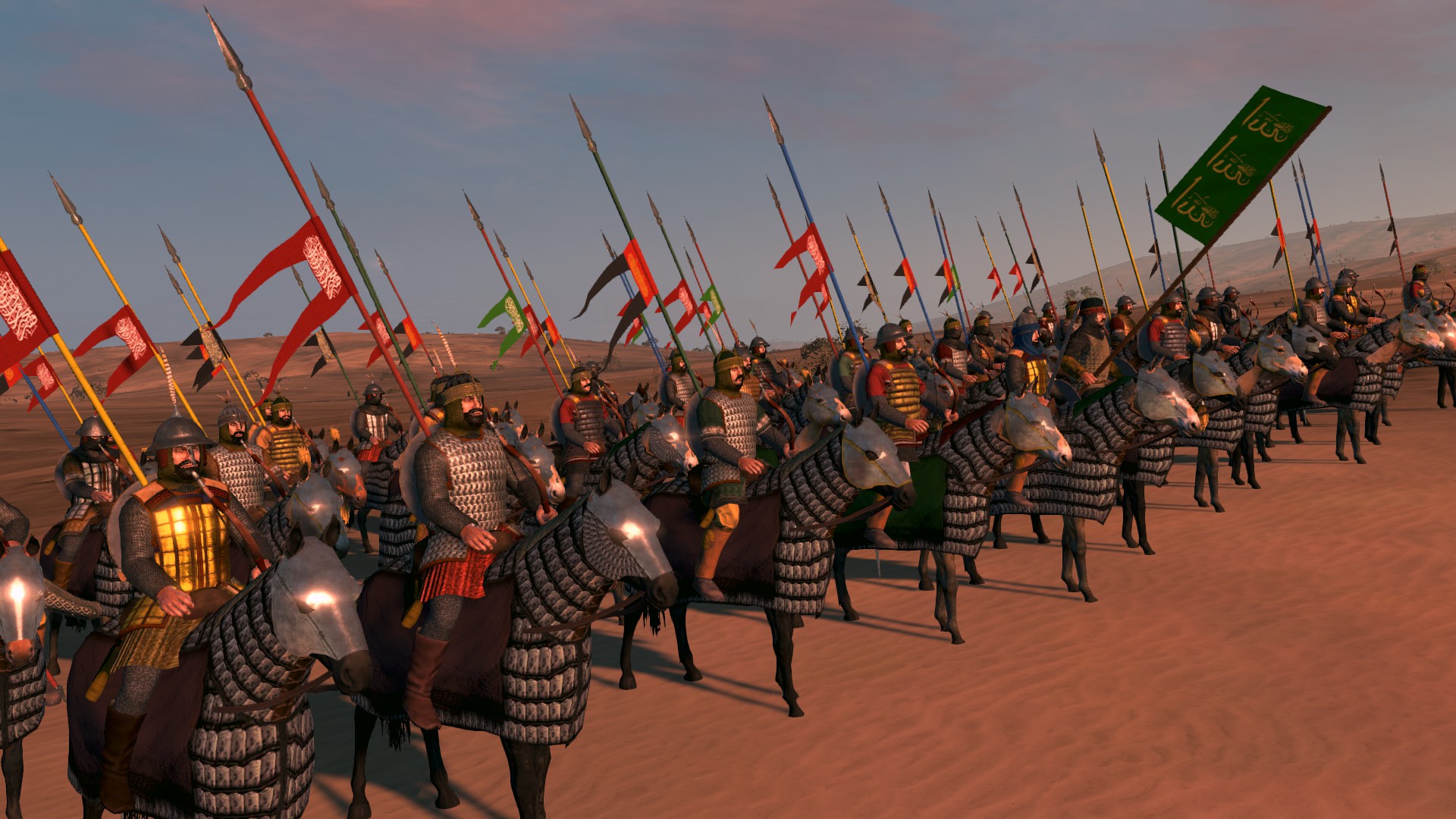
Tier 3
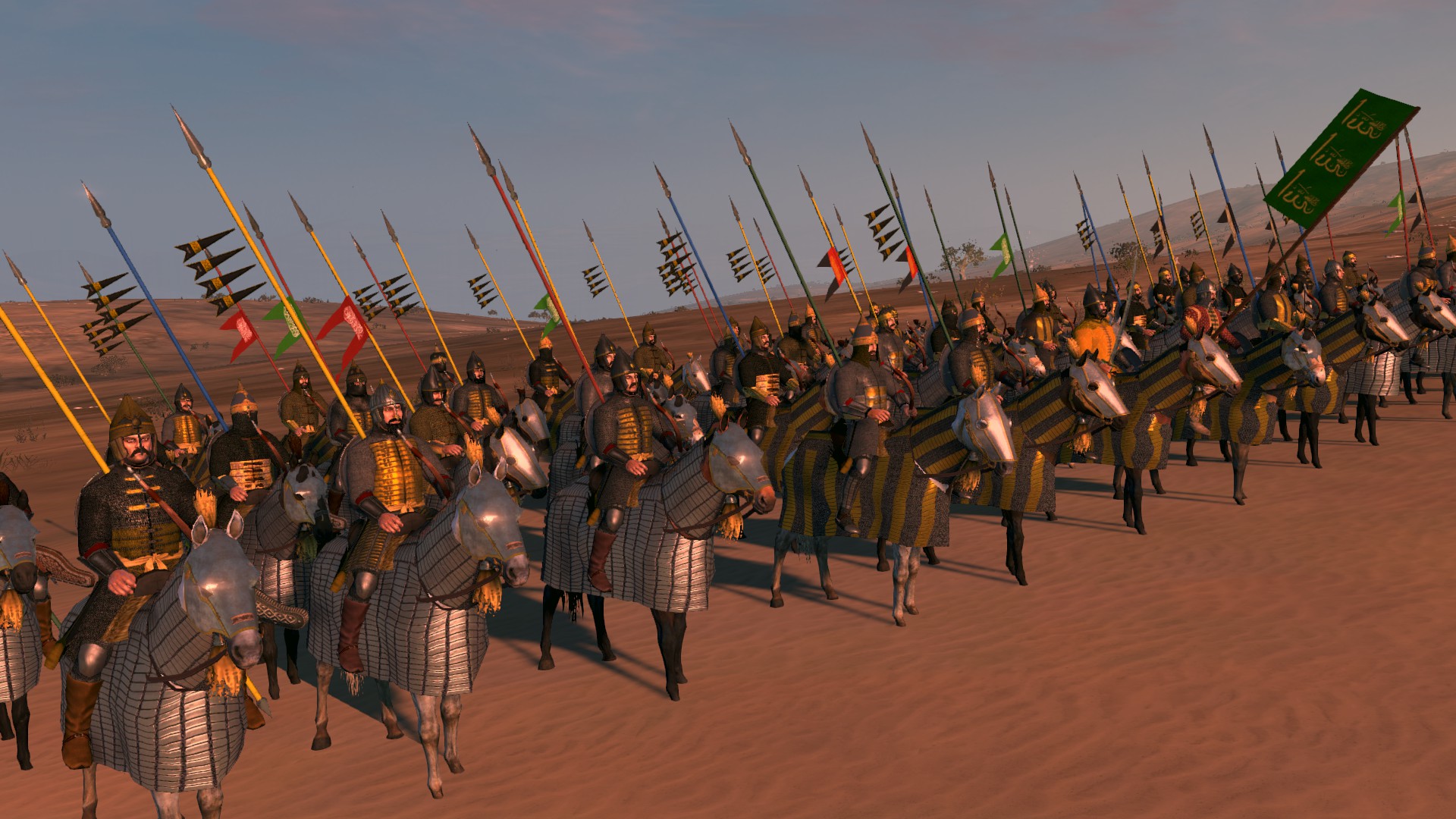
Tabardariyyah al-Khassah
Axe-bearing Royal Guards were a common symbol of a Sultan's power in the Middle East. It is quite unclear, however, whether these axe-bearers were a battlefield unit, or merely ceremonial guards fo similar to Roman Lictors. Jean de Joinville described 30 Halqa members in 1250 carrying dane-axes hung on their necks. In Mamluk era, Sultan al-Näsir Muhammad Qaläwün used to go to the hippodrome in an impressive procession, with a group of Kurdish axe-bearers going on foot in front of him with their axes drawn.
Tier 1
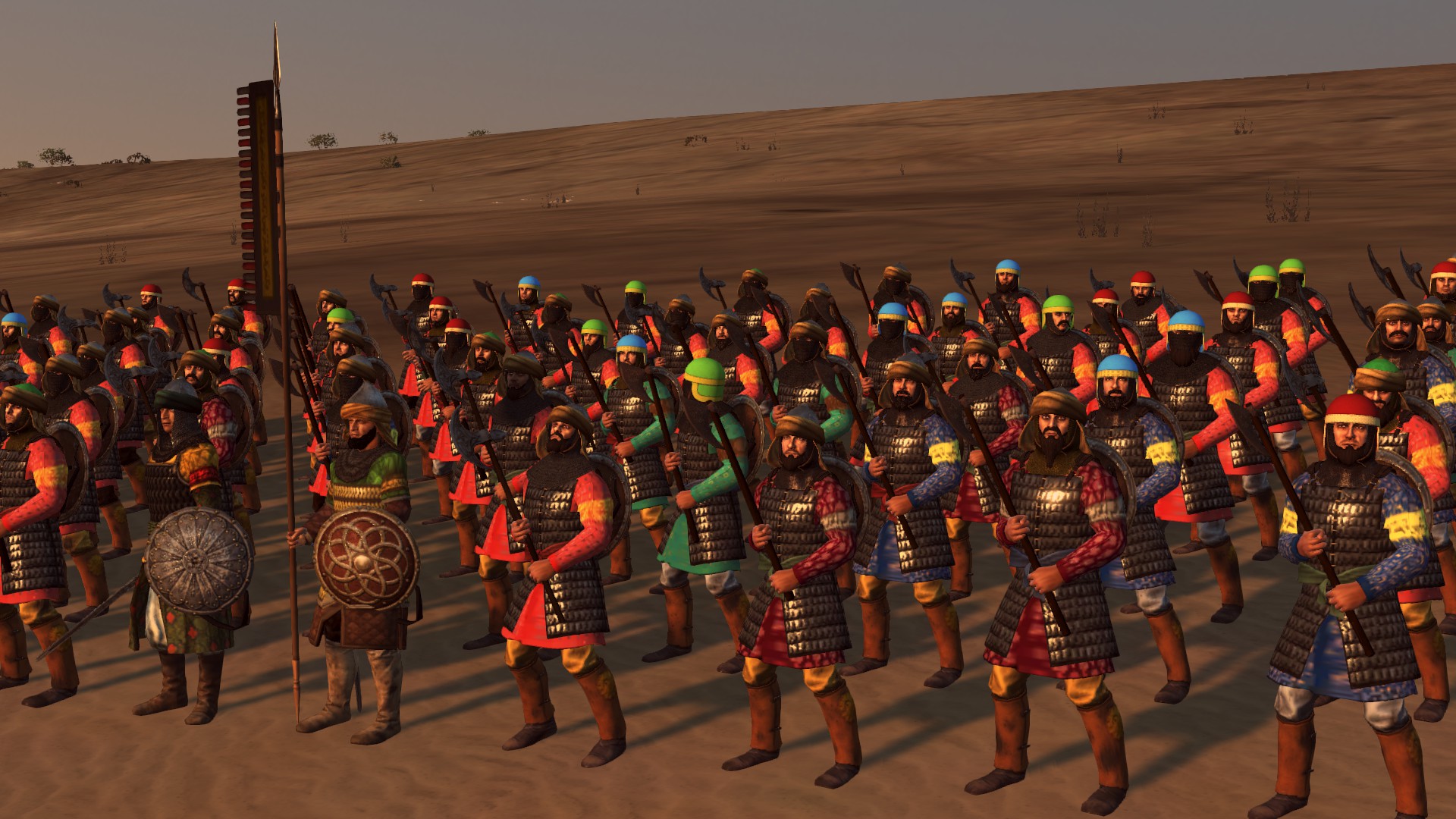
Tier 2
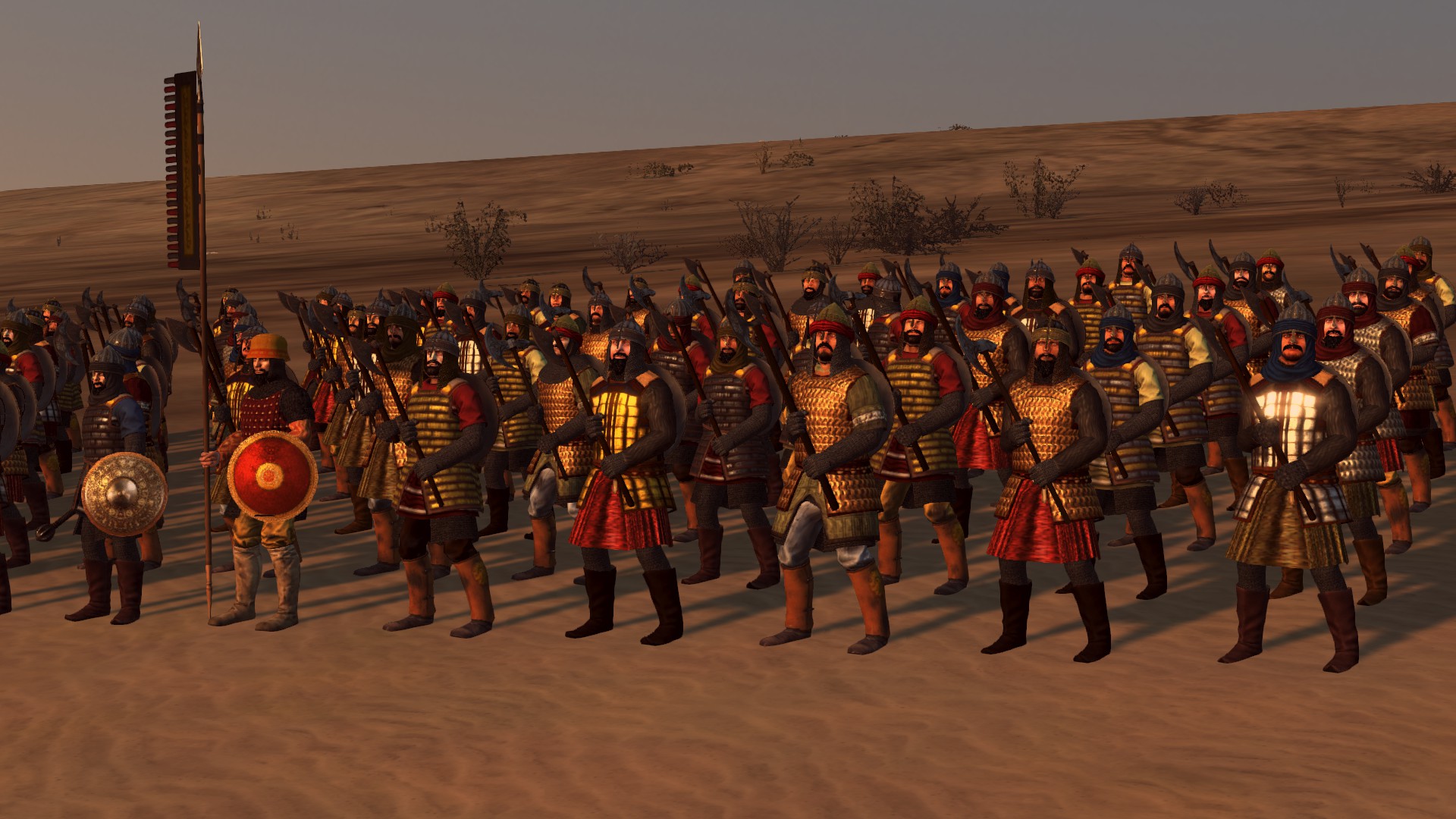
Tier 3
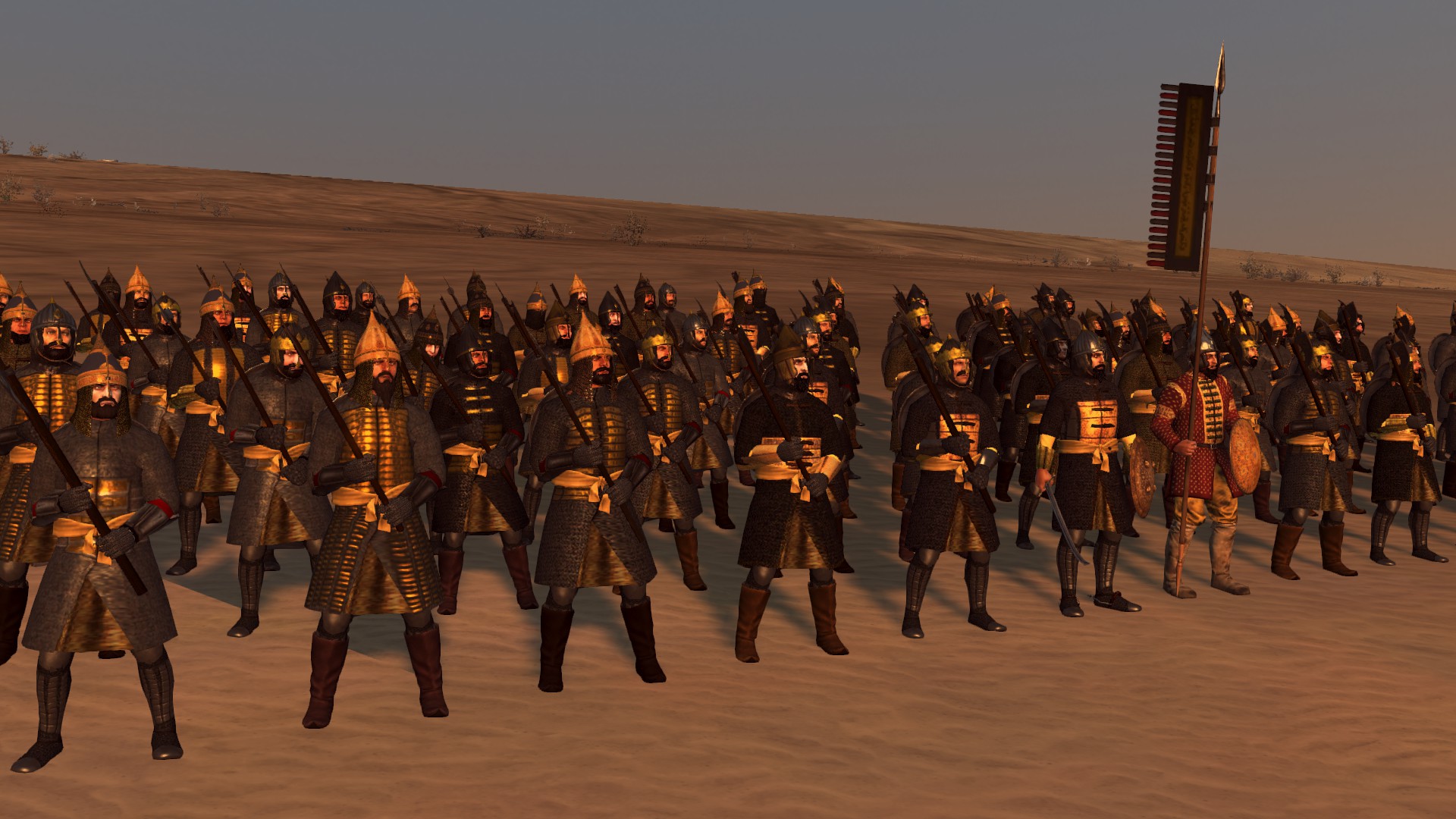
Central Army Mamluk Units
Mamalik al-Julban
The Mushtarawat, or Ajlab or Julban in the Circassian Mamluk era, these “Recruits” were the Mamluks who were bought and freed by the reigning Sultan. Therefore, they have a tighter knit of solidarity than the other Sultan’s Mamluks originating from the previous Sultan nor those taken from the Amirs. As such, the Sultans show heavy favouritism towards them, as they form the main support base of the current Sultan. Therefore the newly ruling Sultan will gradually replace the position of the Qaranisa Mamluk with his own Mushtarawat to secure his power. They even often held back in battles to preserve their numbers compared to the Qaranisa. Due to their newly recruited status, the Julban lack experience compared to the other Mamluks, but their privileged position means infractions are merely punished lightly. This lead them in the later era to be known as corrupt bullies.
Tier 2
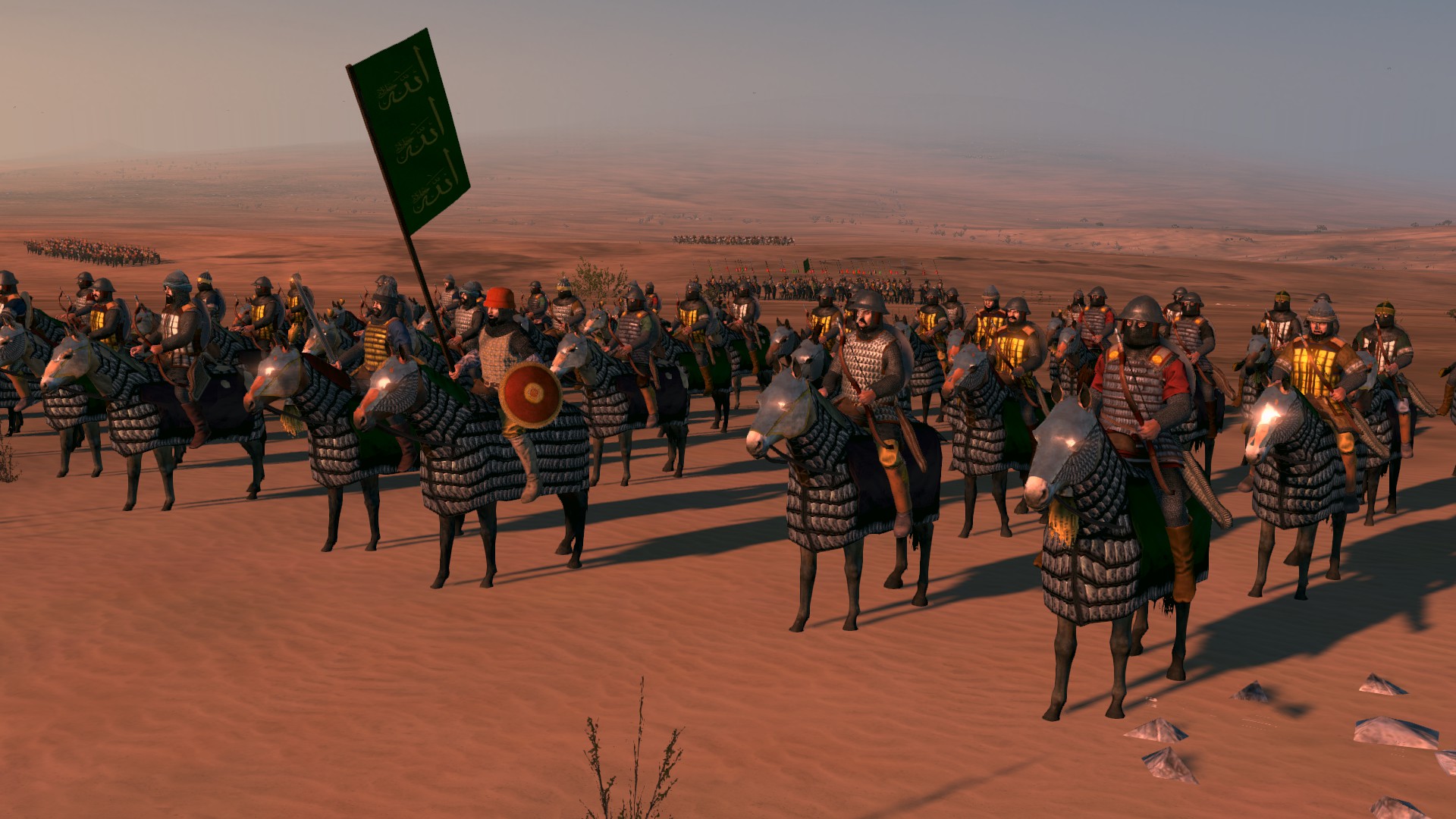
Tier 3
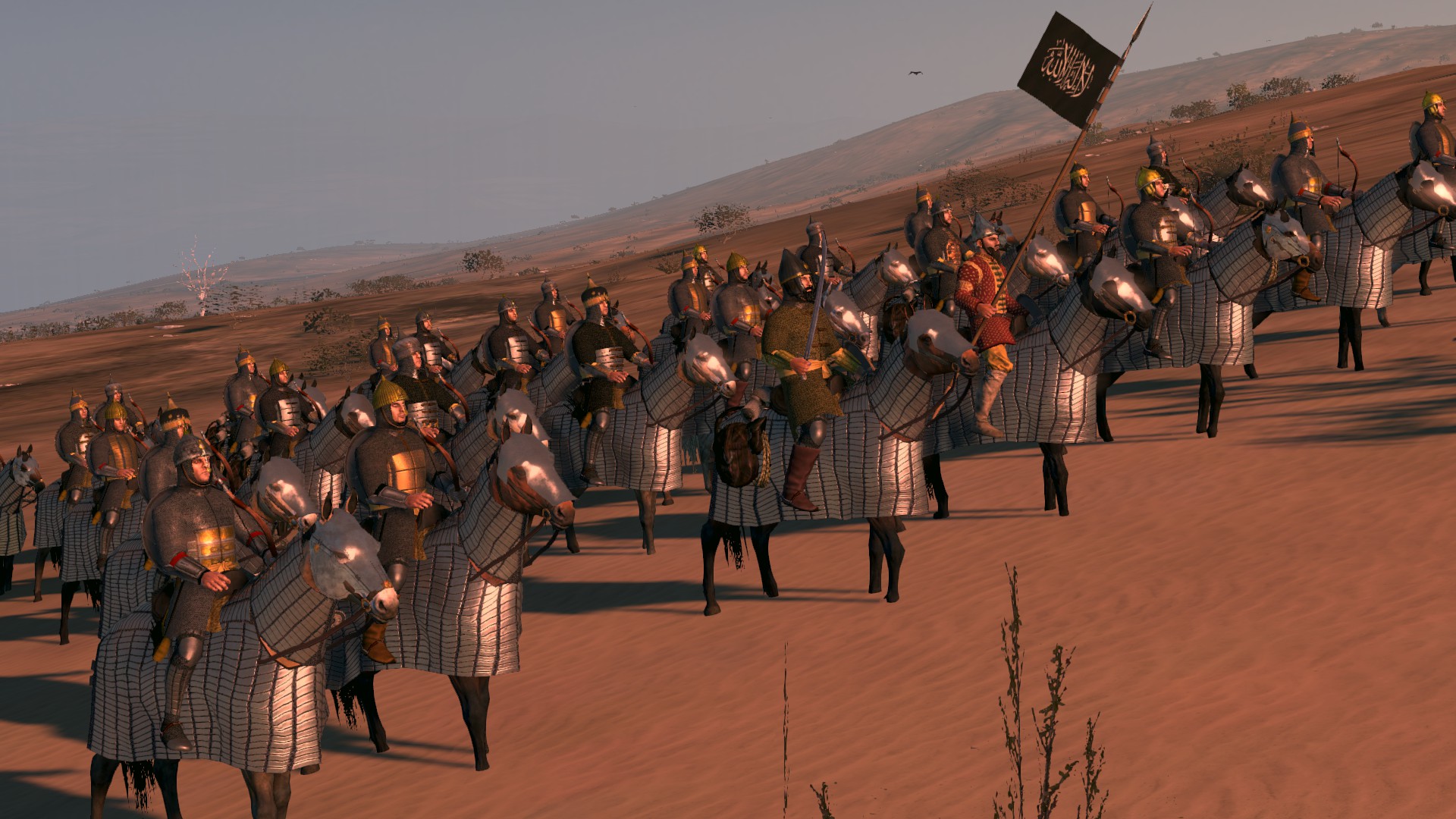
Mamalik al-Qaranisa
On the accession of a new Sultan, the Mushtarawat Mamluk of the previous sultan become a Mustadakhamun, then are thrown out from Mushtarawat barracks, and their posts stripped to be given to the new Sultan’s new Mushtarawat. This kind of Mustadakhamun Mamluk were called the Qaranisa. Therefore they get no such treatment the Julbans received from the current ruling Sultan, often sidelined and sometimes antagonized if there are grudges between the previous and current ruling Sultan. However, due to their seniority, they are long-standing veterans - which is the original definition of the term; and were battle-hardened precisely because ruling Sultans would rather spend them in the field instead of the Sultan's precious Julban.
Tier 2
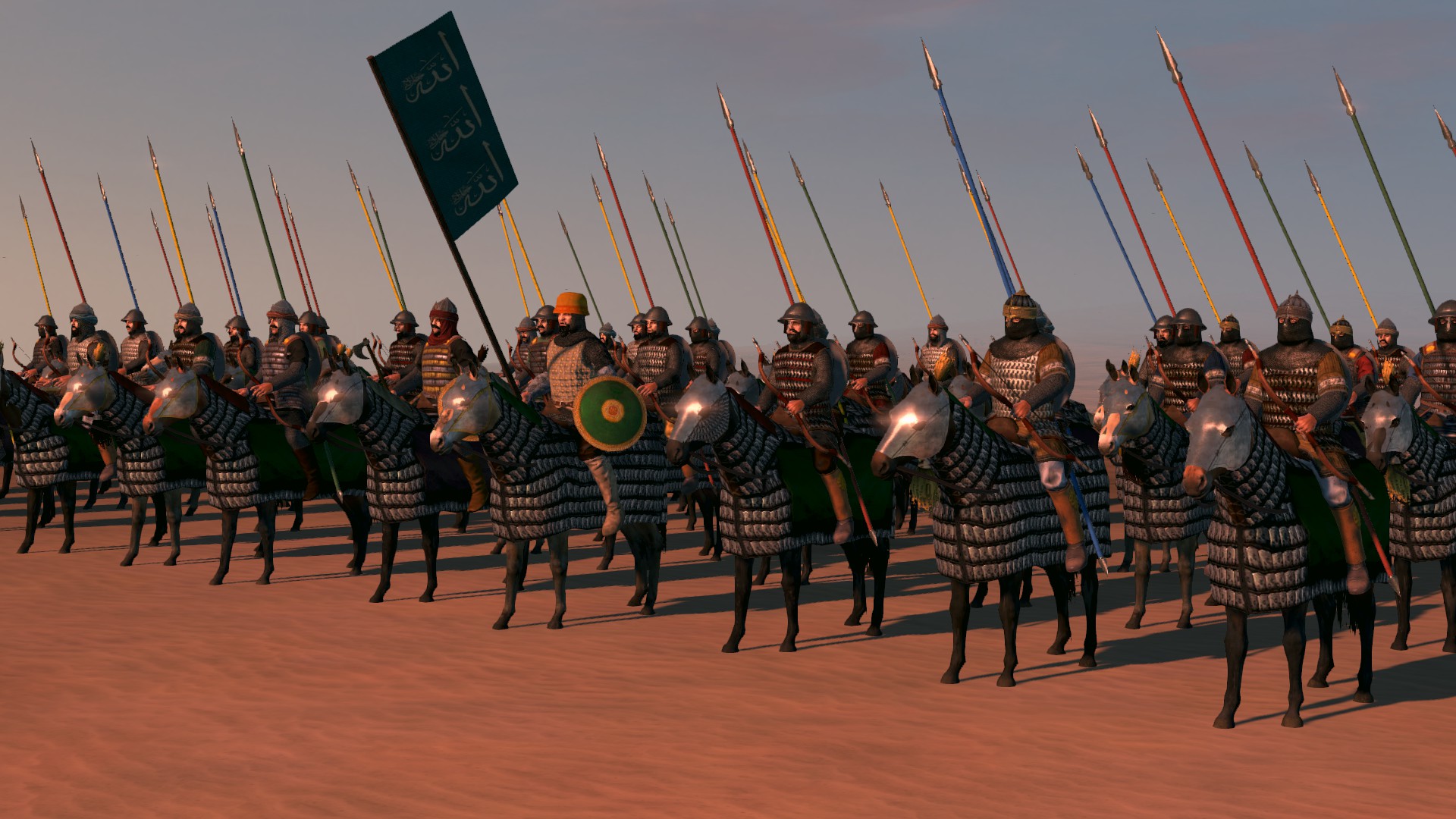
Tier 3
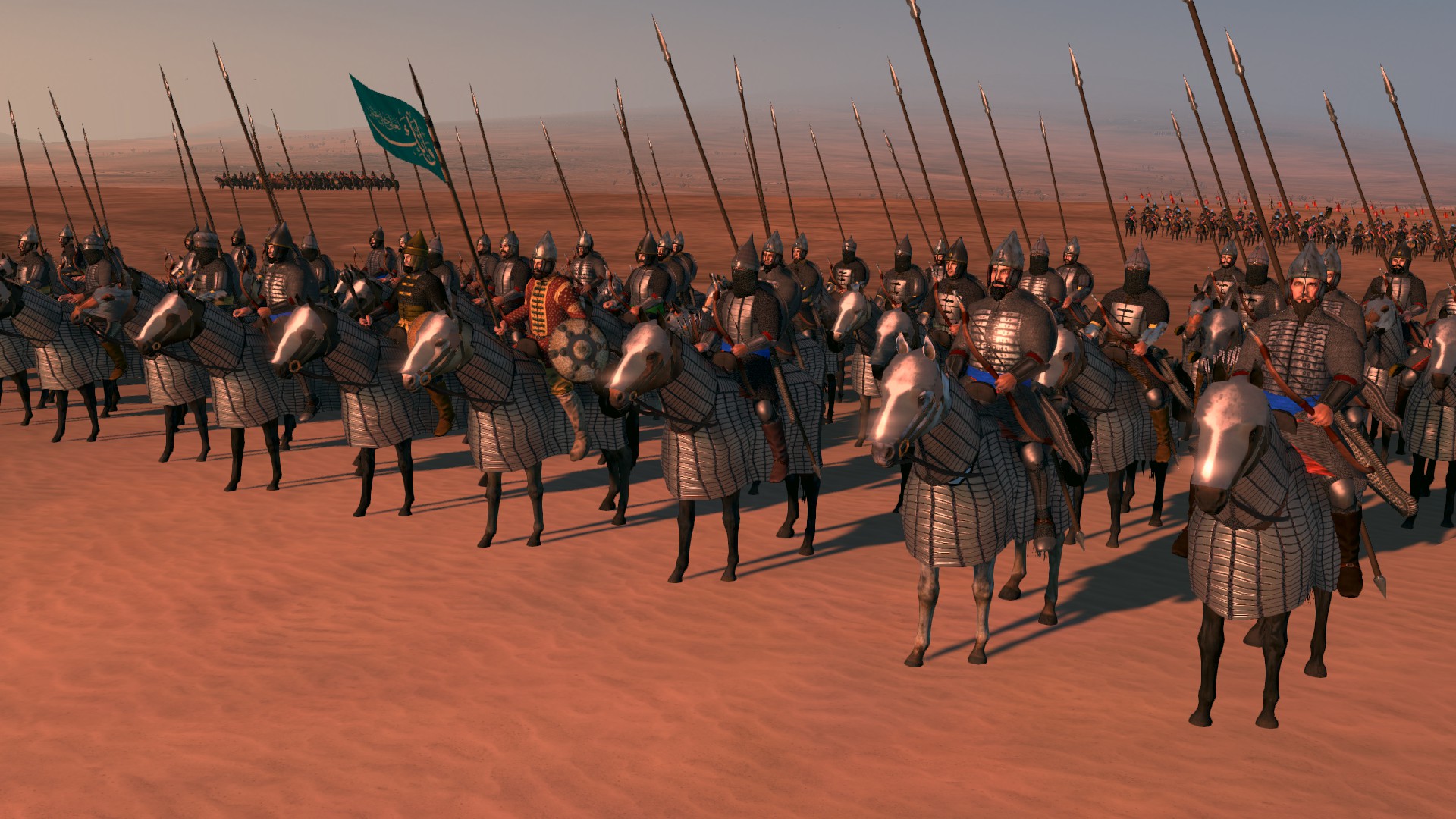
Mushat al-Mamalik
Even though Mamluks in general look at footmen with disdain, they were trained in combat both mounted and dismounted, willing to fight on foot when needed.
Tier 1
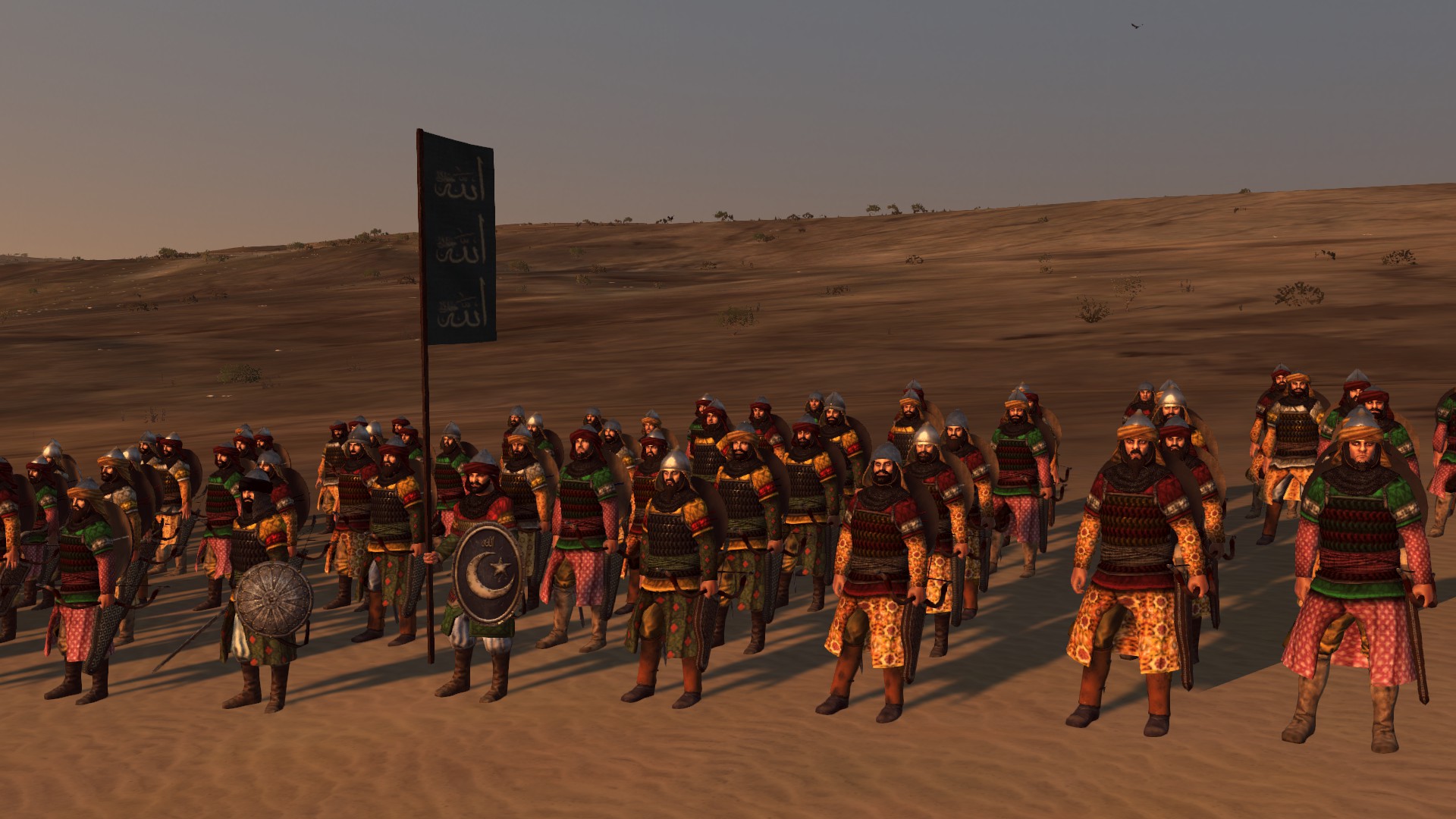
Mamalik as-Sayfiyya
The Sayfiyya were Mustadakhamun Mamluk of ex-Amir Mamluks transferred to the Sultan’s service after their Amir’s death or dismissal. In the Sultaniyya Mamluk pecking order, they’re at the bottom. Unlike Qaranisa Mamluks, they came from many Amir backgrounds instead from a single Sultan’s Julban, hence they have no single clique to bond into. In effect politically they are rather indifferent. Lannoy in the 15th Century reported that they were armed with swords as their namesake, serving on foot.
Tier 2
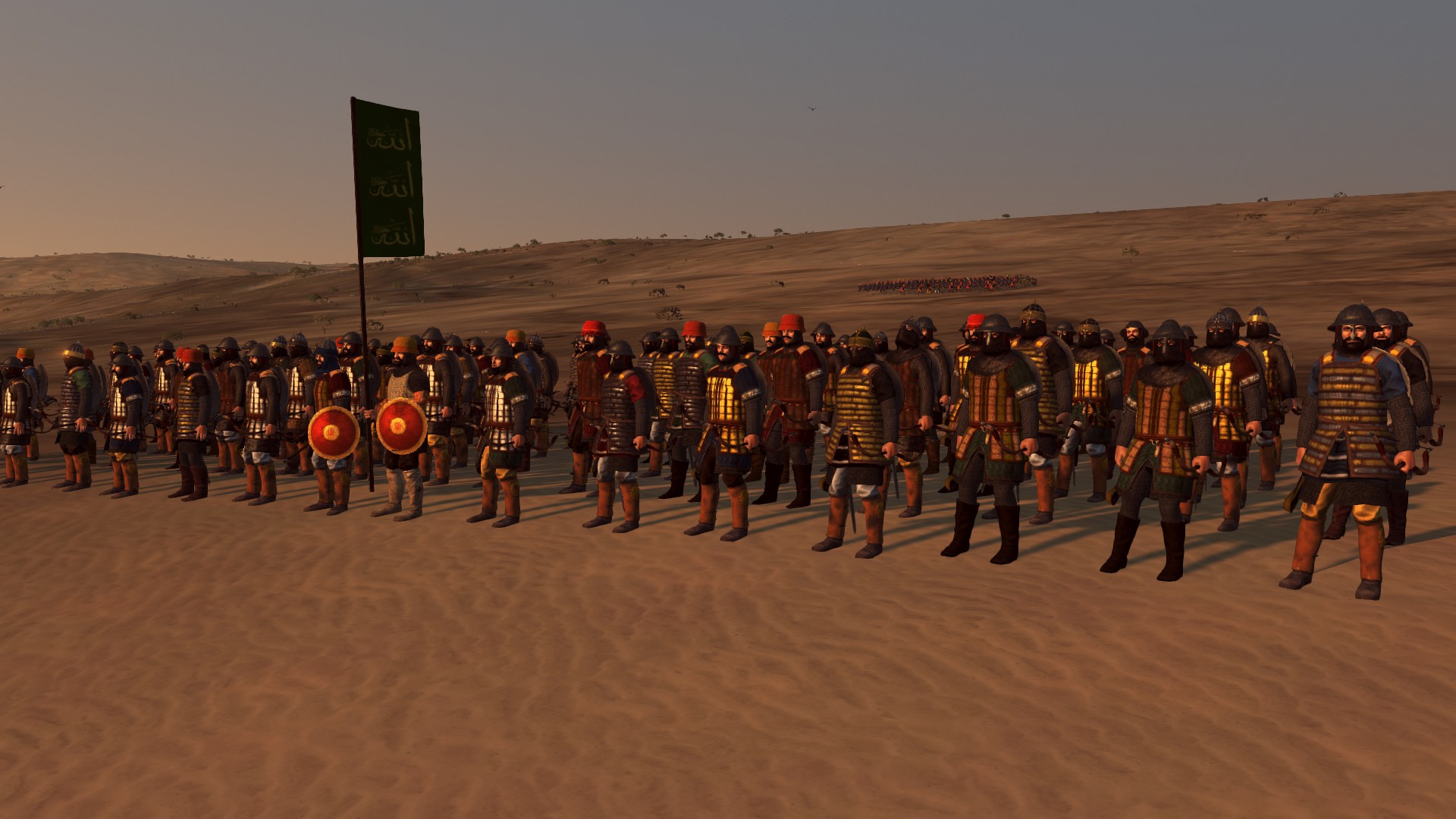
Tier 3
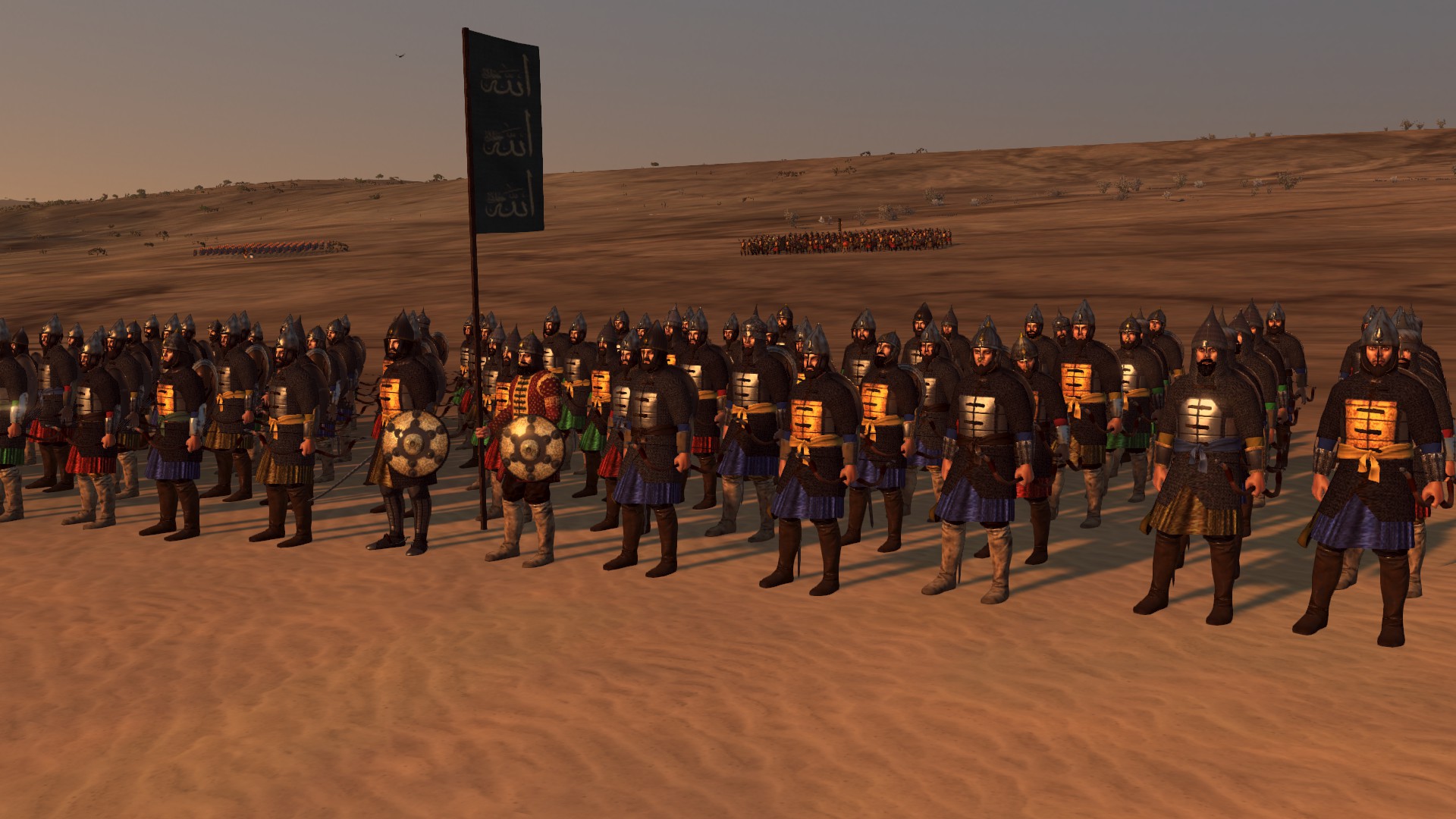
Halqa and Provincial Units
Tawashiyya al-Halqa
Kitāb al-Khiṭaṭ al-Maqrīzīyah defined the Tawashiyya as an holder of an income ranging from 700 and 1,000 and 1,200 dinars; which has a baggage train (barak) composed of ten or less heads of animals, including pure-bred horses, ordinary horses, mules, and camels; and has a page who carries his arms. In the year 1181 Salahuddin reorganised the regular forces in Egypt. The number of the troops amounted to 8.640 - 6876 of them were Tawashiyya. From their names, the Tawashiyya were Arabs, possibly also Kurds, and not Mamluks. Amirs of the Ayyubid era brought Tawashiyya in their retinues instead of Mamluks, up to early Mamluk era.
Tier 1
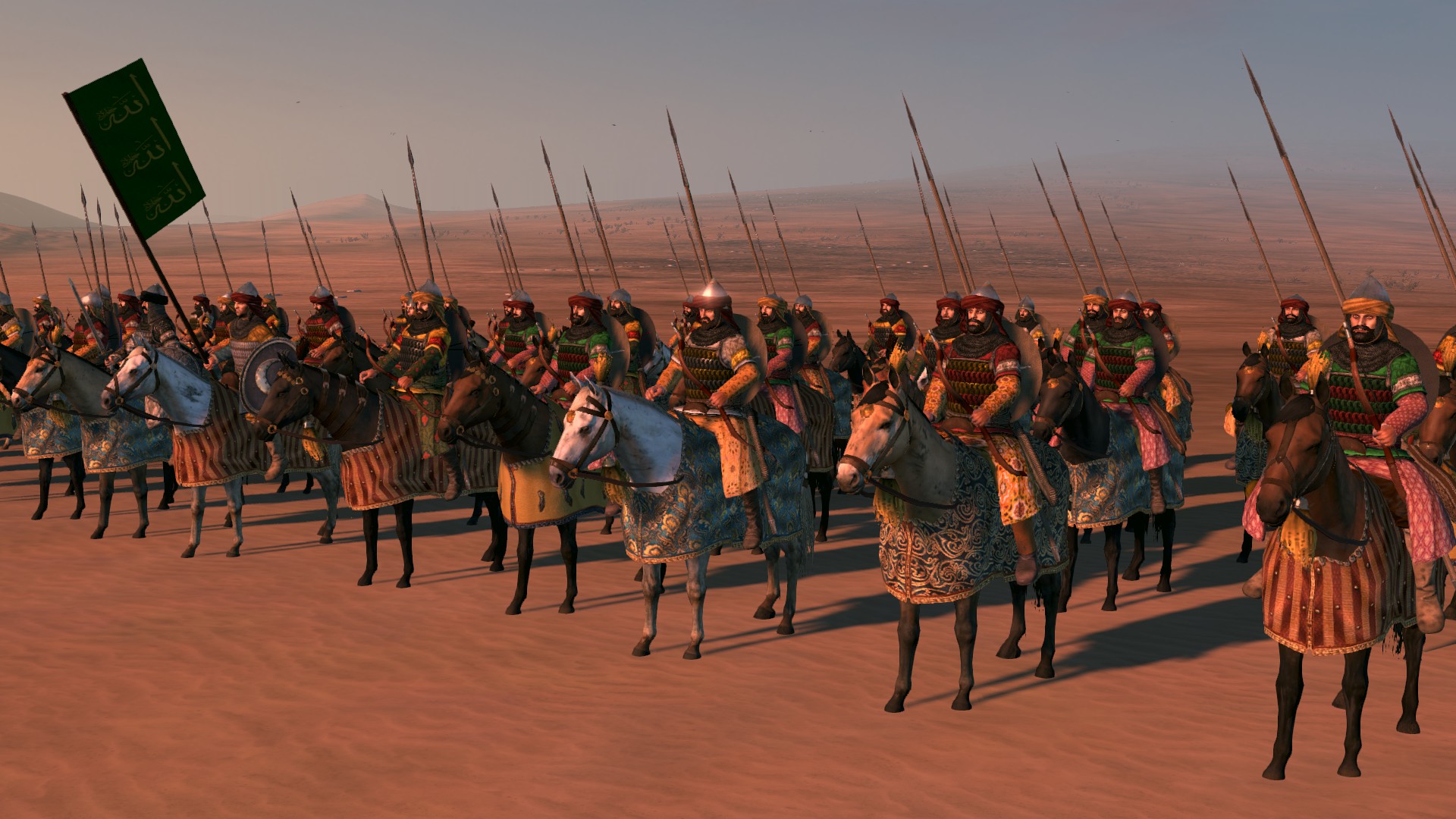
Tawashiyya al-Umara
Under the later Fatimids and Ayyubids the system of land tenure in Egypt had become similar to a feudal regime. In Salahuddin's time all the cultivated lands were assigned as Iqta to army, especially to upkeep the Turkish and Kurdish horsemen.
Tier 1
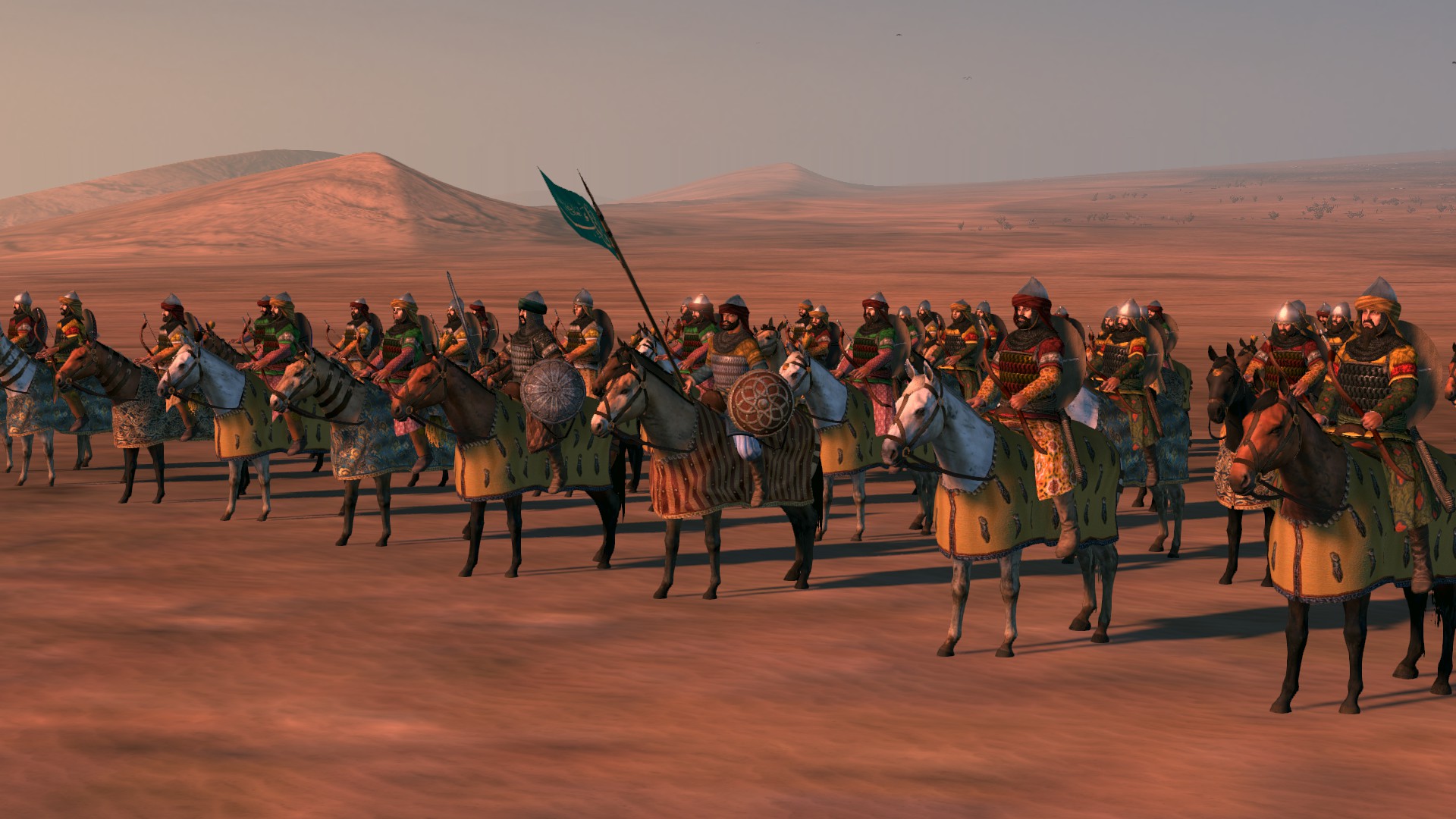
Wafidiyya
Wafidiyya, or "Refugees" is the unit formed from people displaced by the Mongol Invasion. They especially include Mongol defectors and Muslim soldiers from destroyed realms - Persians, Turkomans, Kurds; excellent horsemen from the get-go which the Mamluks need not provide training. In the Mamluk Sultanate, they enter the ranks of the Sultan's Halqa, or as Tawashiyya under the Amirs. Later on, as the Wafidiyya influx dwindled, Amirs no longer has a cheap source of experienced troops; therefore it forces the Amirs to buy an all-Mamluk retinue if he wants his personal troops to have any value at all at the battlefield, no matter the high expenses.
Tier 1
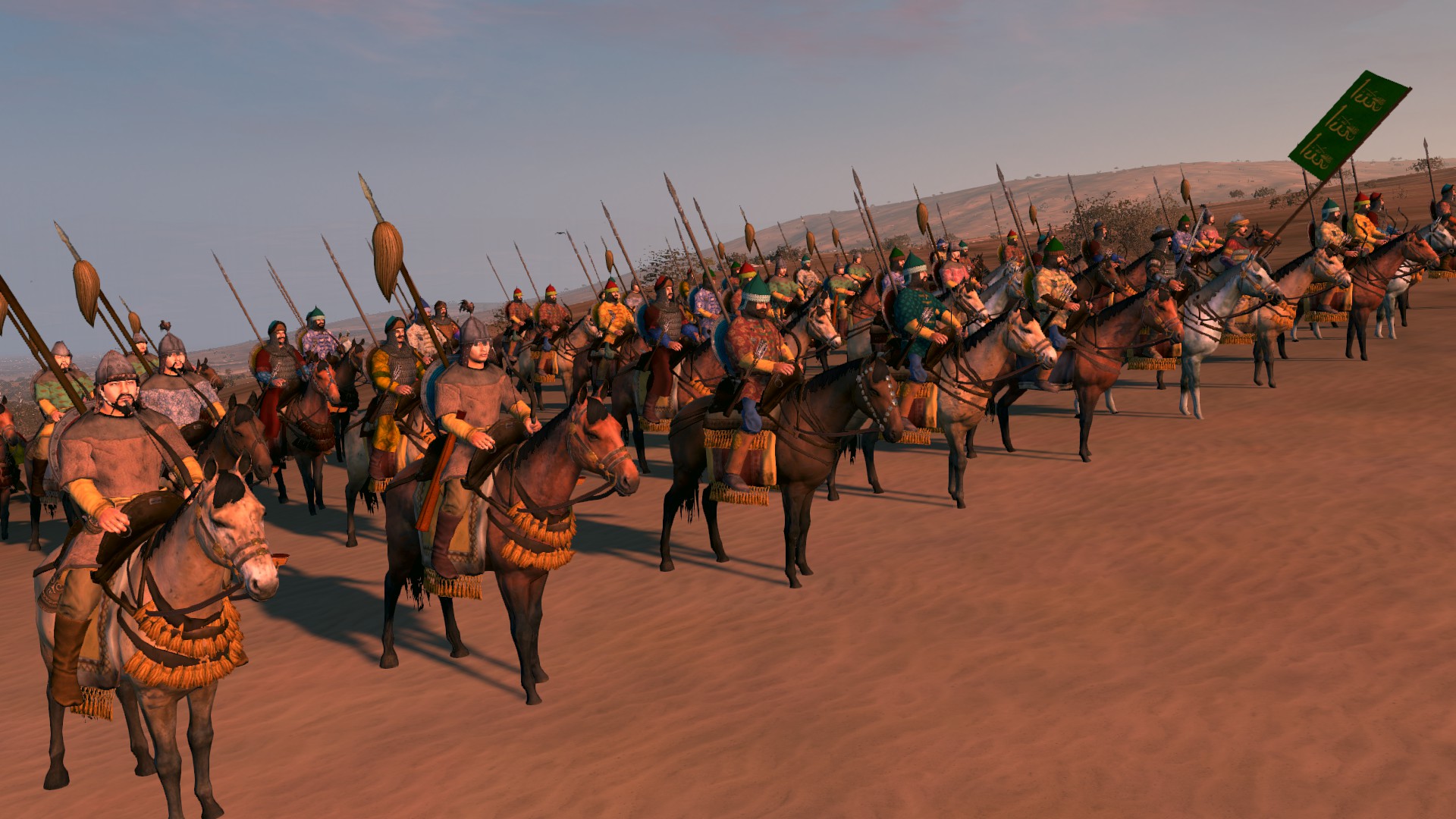
Tier 2
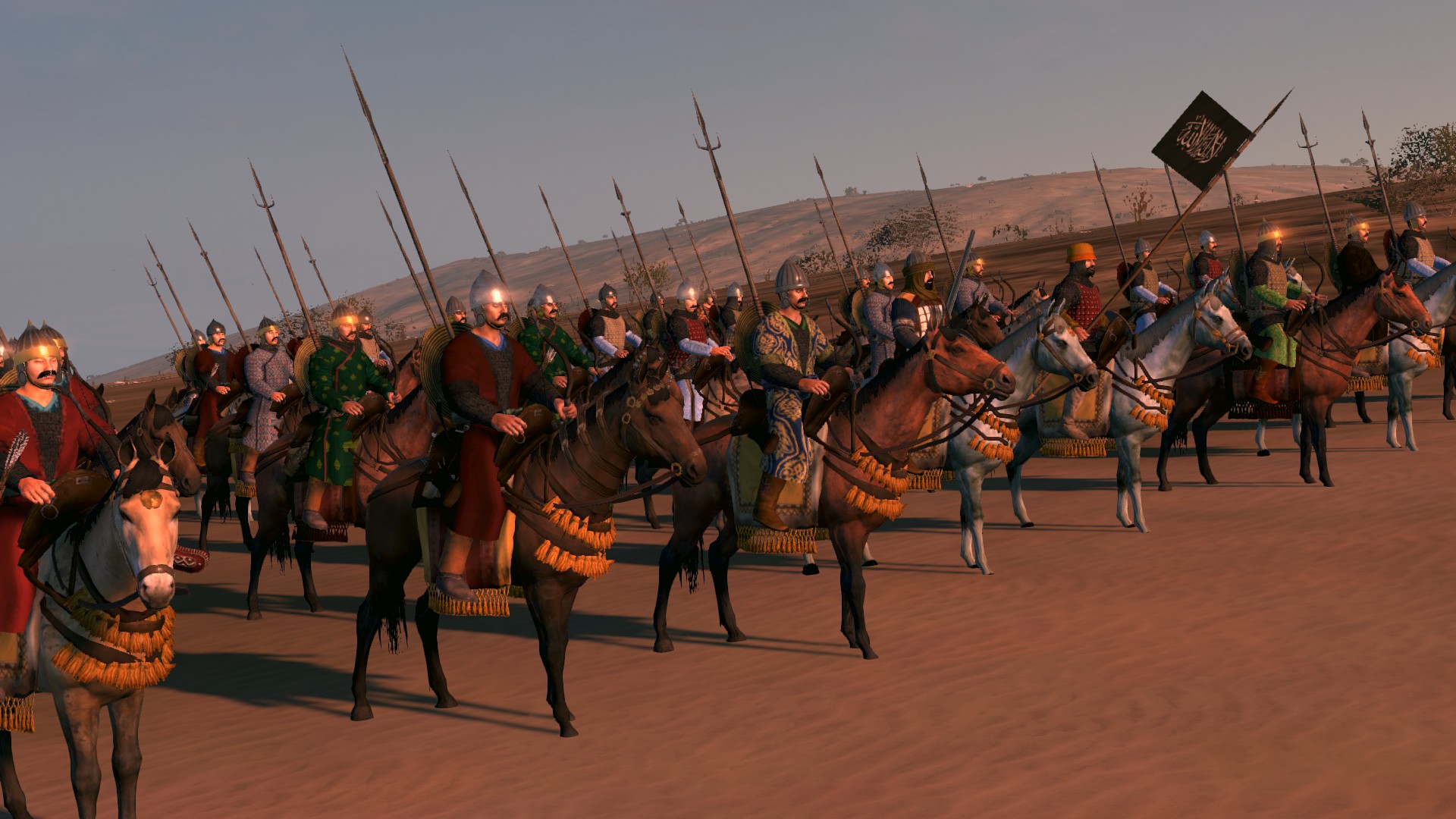
Mamalik al-Umara
In the Mamluk Sultanate, it was required by law for 2/3rds of an Amir's Iqta revenue has to be for the recruitment and maintenance of his retinue, and that must include a number of both Mamluk and non-Mamluk horsemen. The number of Mamluk an Amir may have depended on his rank; the lowest is Amir of 5, followed by Amir of 10 and 20. Amir al-Tablkhanah or Amir with a Marching Band may have 40 to 80 Mamluks. The highest Amir was the Amir Mi'a Muqaddam Alf, or the Amir of 100 Mamluks and Commander of 1000 horsemen.
Tier 2
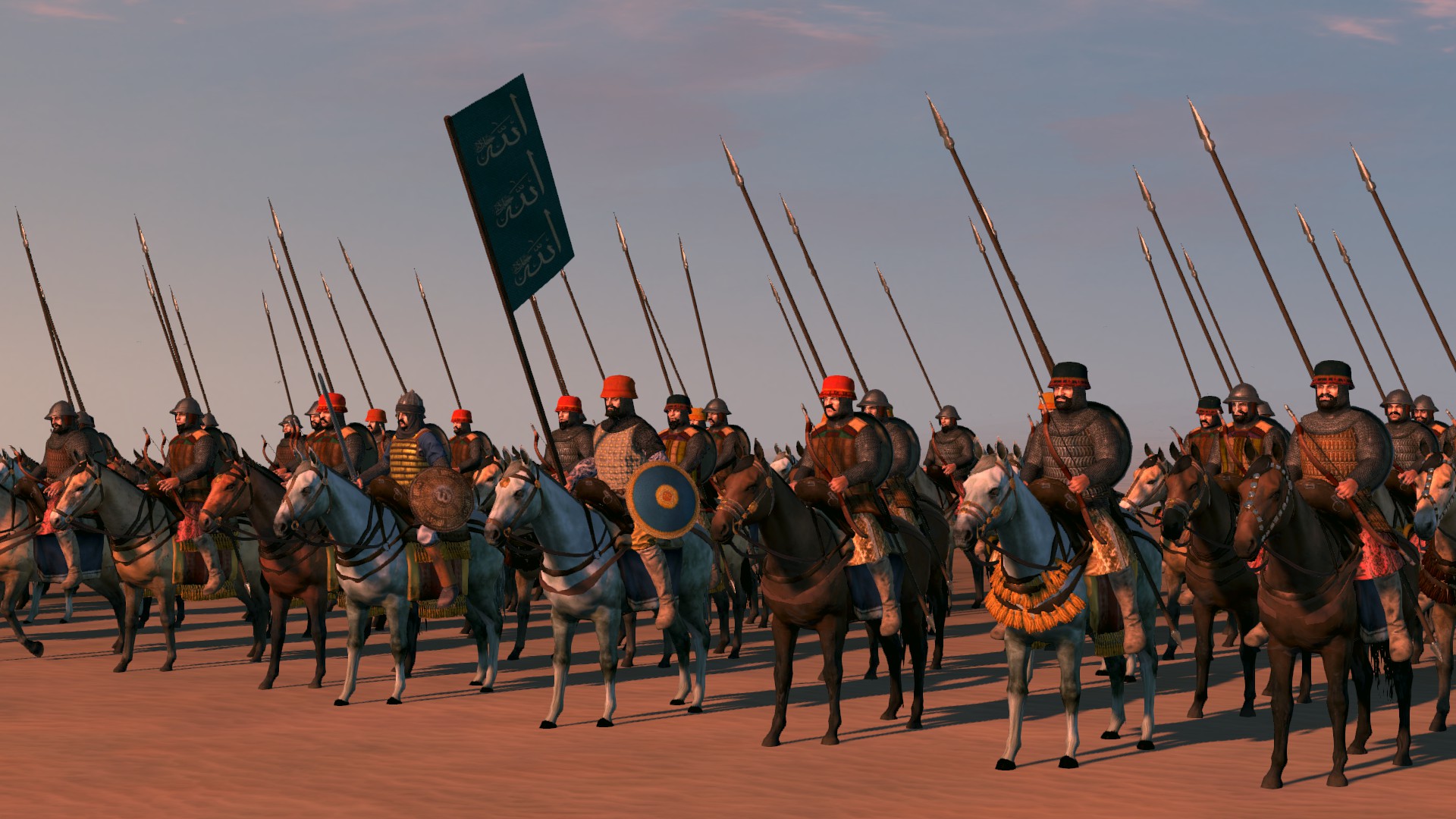
Tier 3
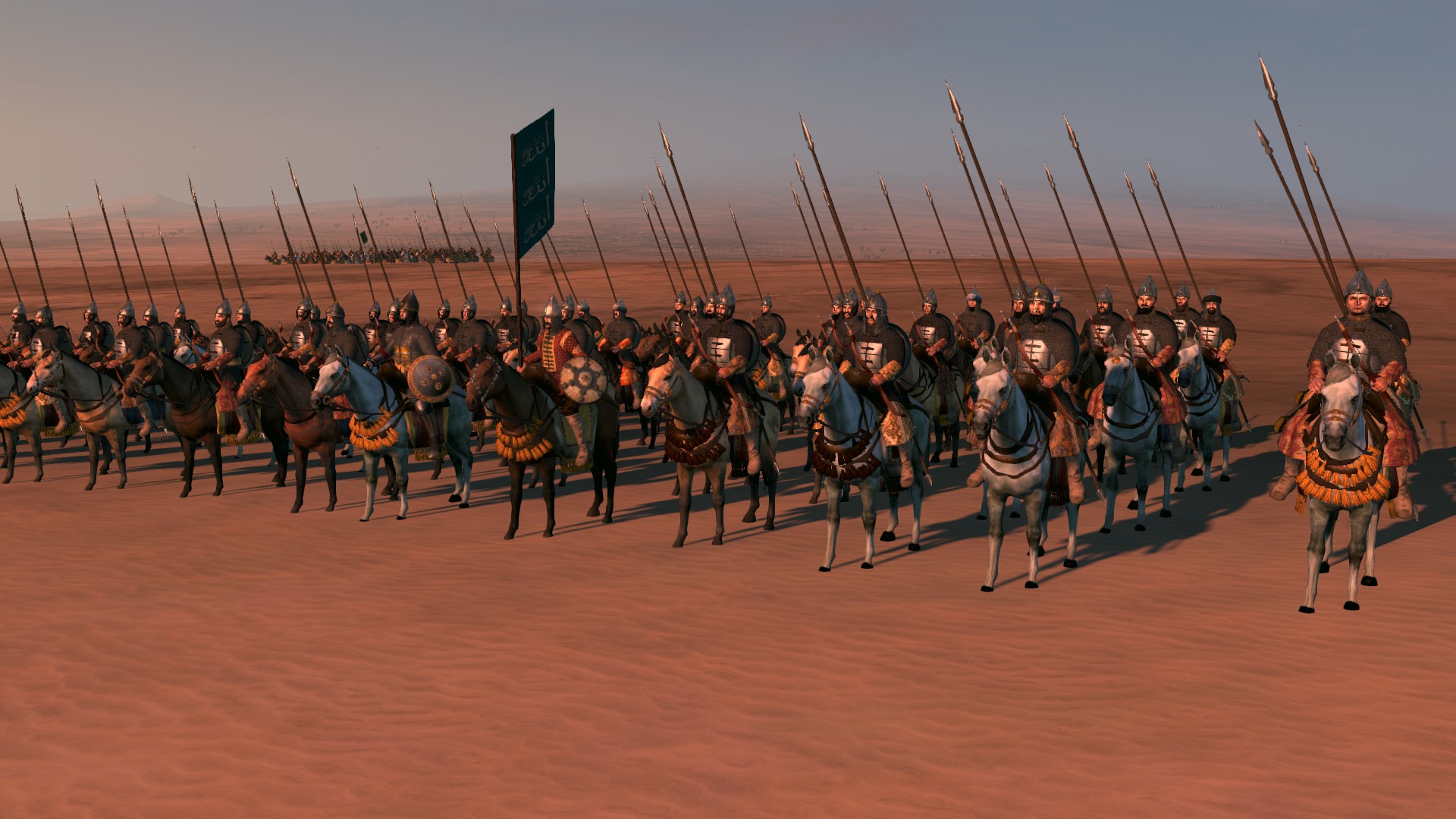
Akrad al-Halqa
Al-Akrad, the Kurdish units of the Late Ayyubid Army came from several sources. Either from mercenaries who offered their services, Tribal units, or refugees. In the time of Salahuddin al-Ayyubi, there were 4 tribes that functioned as separate units but grouped together in order of battle as a single block. Those were the Hakkariyya, Humaydiyya, Zarzariyya, and Mihraniyya. Salahuddin’s own Hadhbani tribe supplied a large number of Ayyubid Amirs, even though the tribe never mentioned forming a single unit. Within the Wafidiyya, there were two Kurdish groups, the Qaymariyya and Shahrazuriyya. Together with the Turkmen, Kurdish tribes were made military settlers by the Mamluks throughout Syria, Palestine, and Lebanon
Tier 1
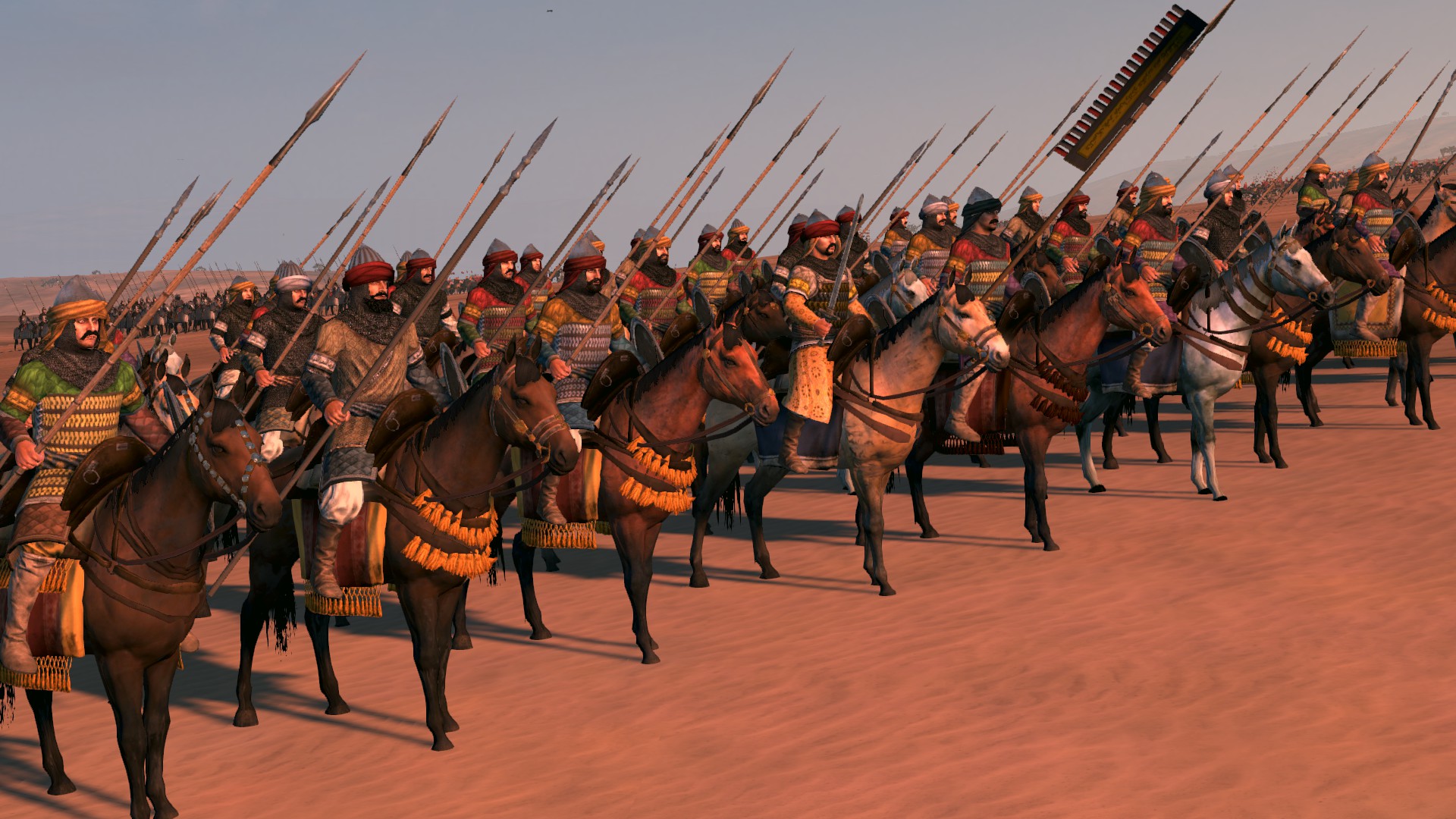
Awlad an-Nas
The Awlad an-Nas were the sons of Mamluks, free Muslims by birth, unlike their fathers. Therefore, they cannot join the prestigious ranks held by Mamluks. In other words, the freeborn is lower in position than those who were once slaves in the Mamluk Sultanate social pyramid. In the Army, they comprised the elites of the Ajnad al-Halqa. An Awlad an-Nas may rise to become an Amir if the Sultan's need it, for instance, to counterbalance the influence of some opposing Mamluk factions.
Tier 2
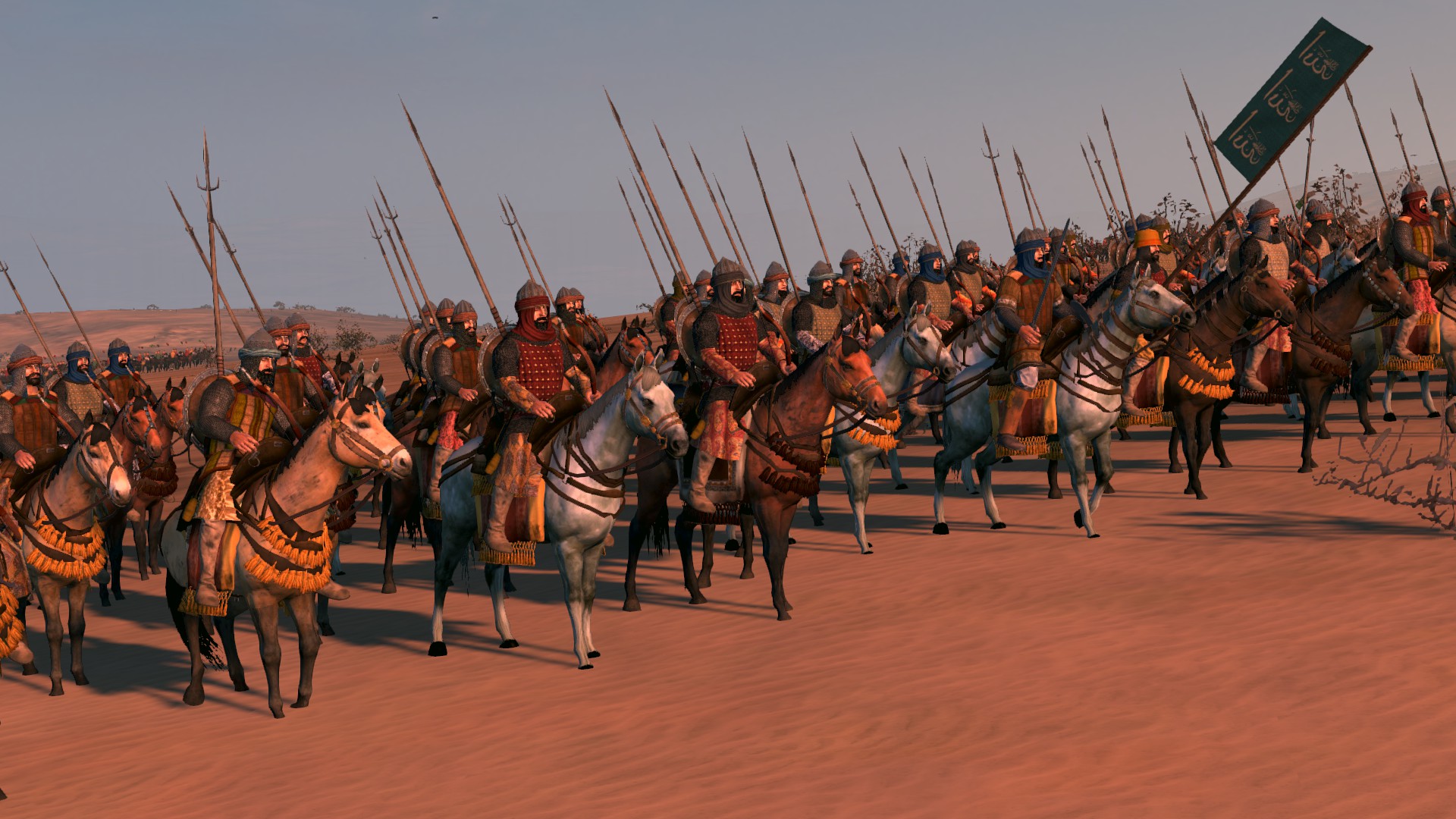
Tier 3
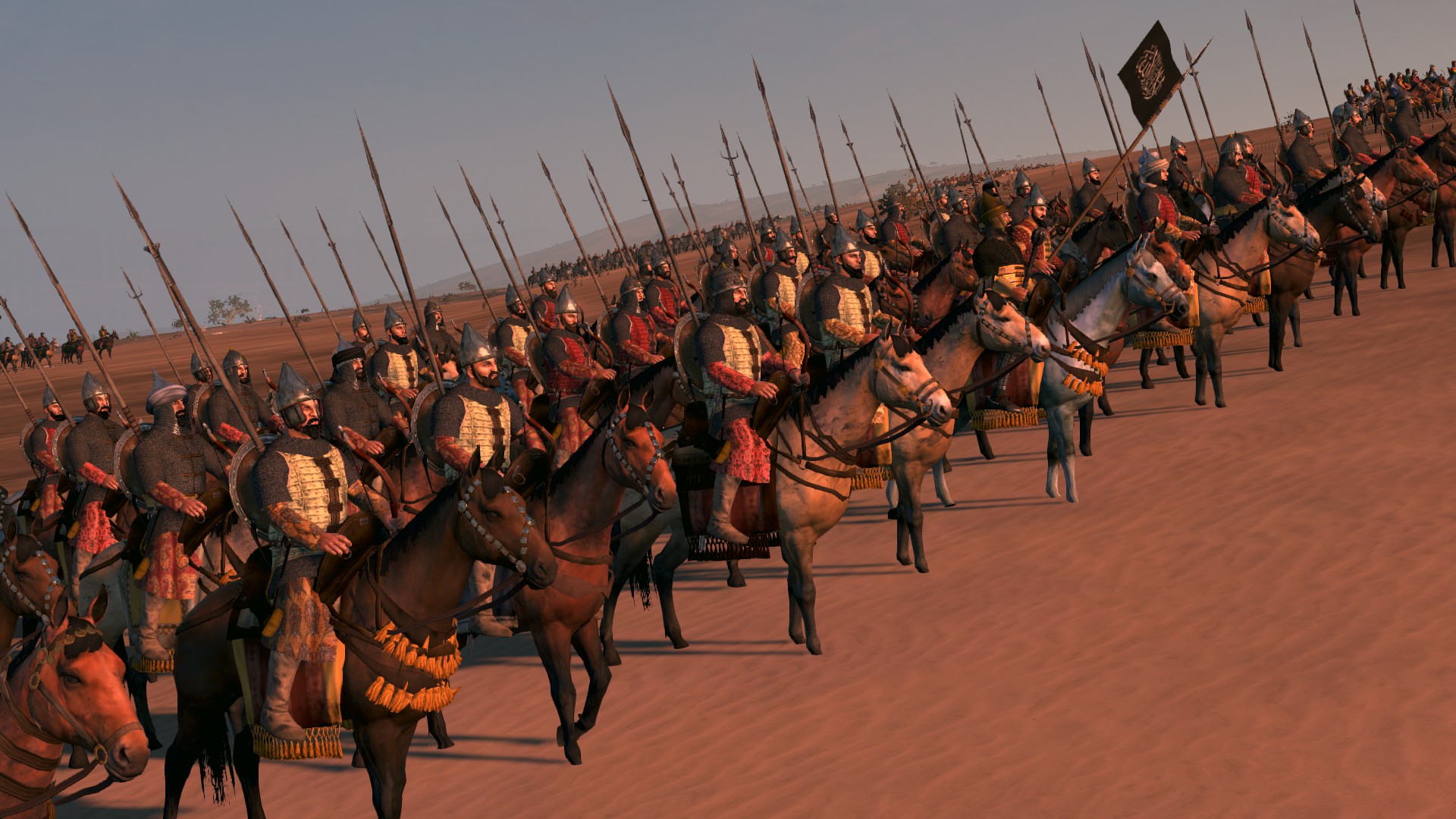
Qaraghulam
The mainstay of the Ayyubid army was Kurdish and Turkish horse archers, and The Qaraghulam were Ghulam Turkish Horse Archers of the Sultan's central army - in 1181 during the rule of Salahuddin al-Ayyubi, he had 1153 Qaraghulam. Note that the "Qara" or black in the name does not denote Black Africans, since Salahuddin has disbanded the old Fatimid army, and mounted archery is the fighting style of the Turks. Most likely, Qara refers to the Turks from the North, denoted by Black in the traditional Turkish Colour-Cardinal Directions association.
Tier 1

Fursan al-Halqa
Ajnad al-Halqa were the non-mamluk cavalry force of the Mamluk Sultanate, recruited from native Egyptians and sons of Mamluk. Halqa means Ring or Circle, composed of free small landholders serving the central administration. Once the elites of the Ayyubid army, they fell into mere sidekicks of the Mamluks and garrison guards.
Tier 2
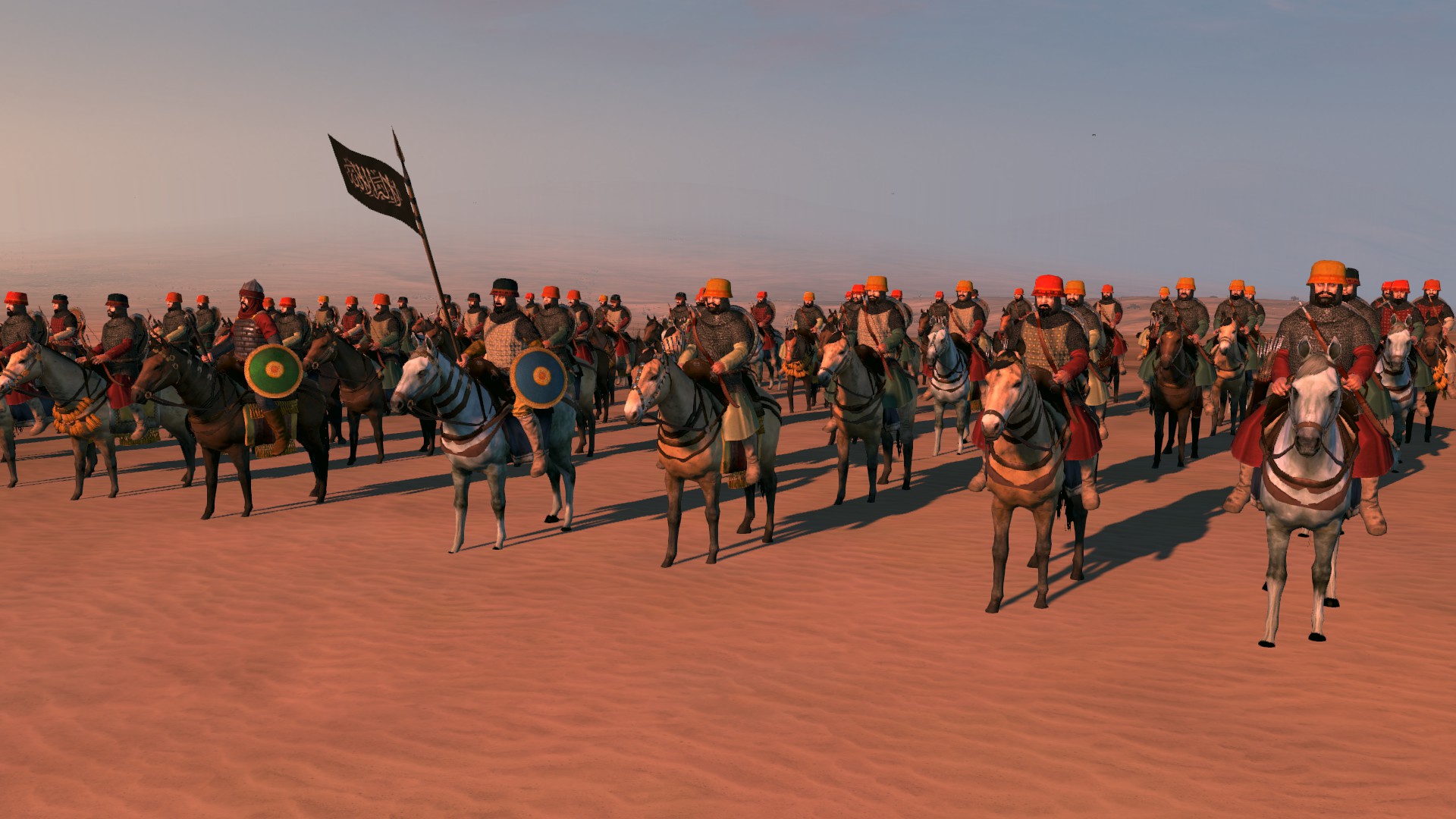
Tier 3
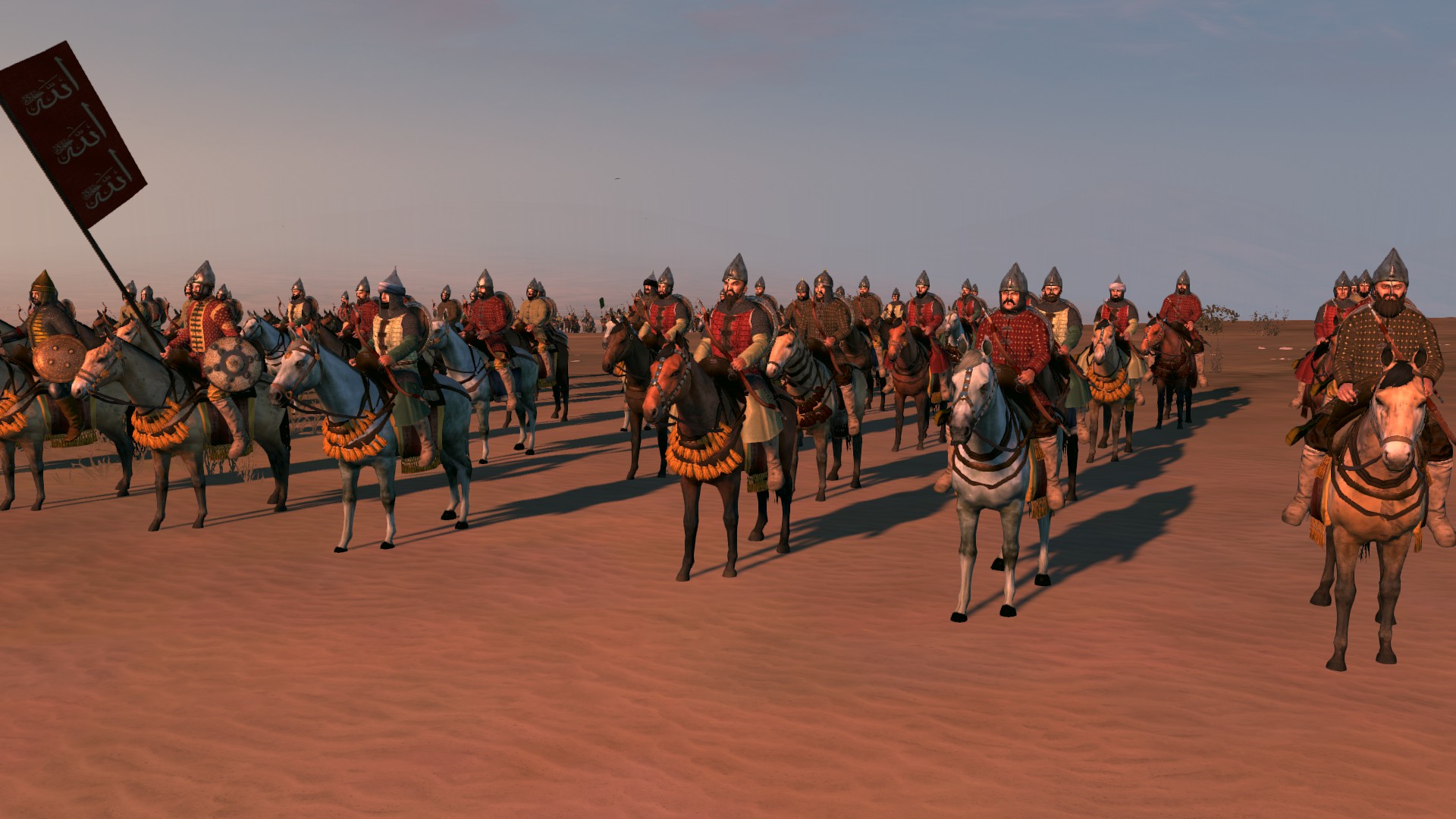
Rammah al-Jund
The Jund was a standing army comprised of raised militia and paid soldiers either by salary, or more commonly by land grants forming military colonies. Originally in the Ummayad era, it specifically means military colonies, districts, and barracks; plus the regiments it housed who were capable of long expeditions. Over time, the term comes to describe the army as a whole.
Tier 1
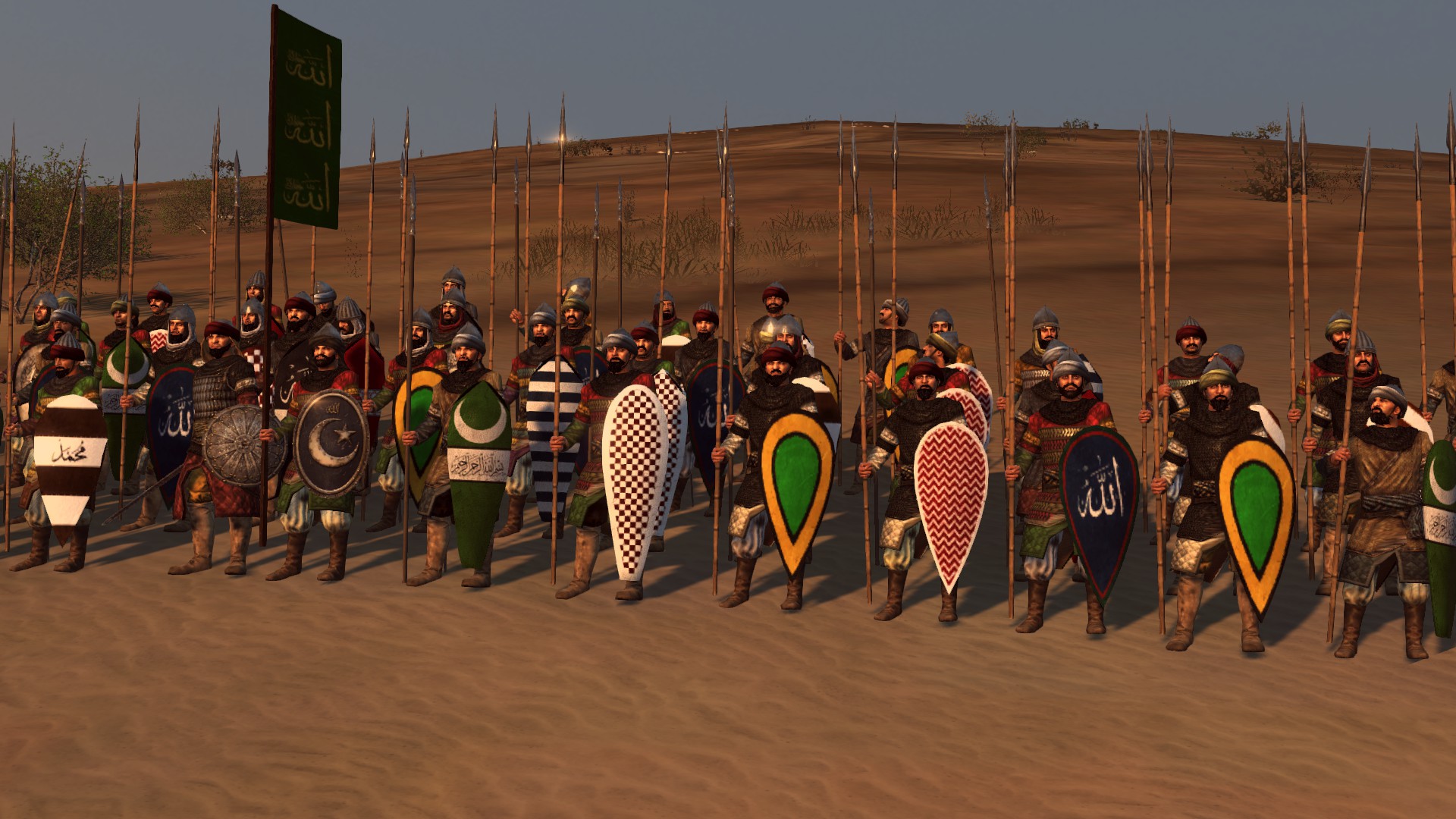
Rammah al-Halqa
The constant deterioration of the Halqa reached a point starting in the late 14th century, due to the fief redistributions, lands assigned to the Halqa dwindles to the point that some of them cannot afford horses anymore, therefore must serve alongside the Mamluks as infantry.
Mamluk manuals states that the infantry are to hold the line if the army were caught unprepared, until the cavalry can mount up and organize themselves. As attested by Al-Maqrizi report of a 1354 battle, the front line kneels in shieldwall, spears held from the their chest, archers stood right behind ready to shoot at the enemies' face, as cavalry stood in safety.
Tier 2
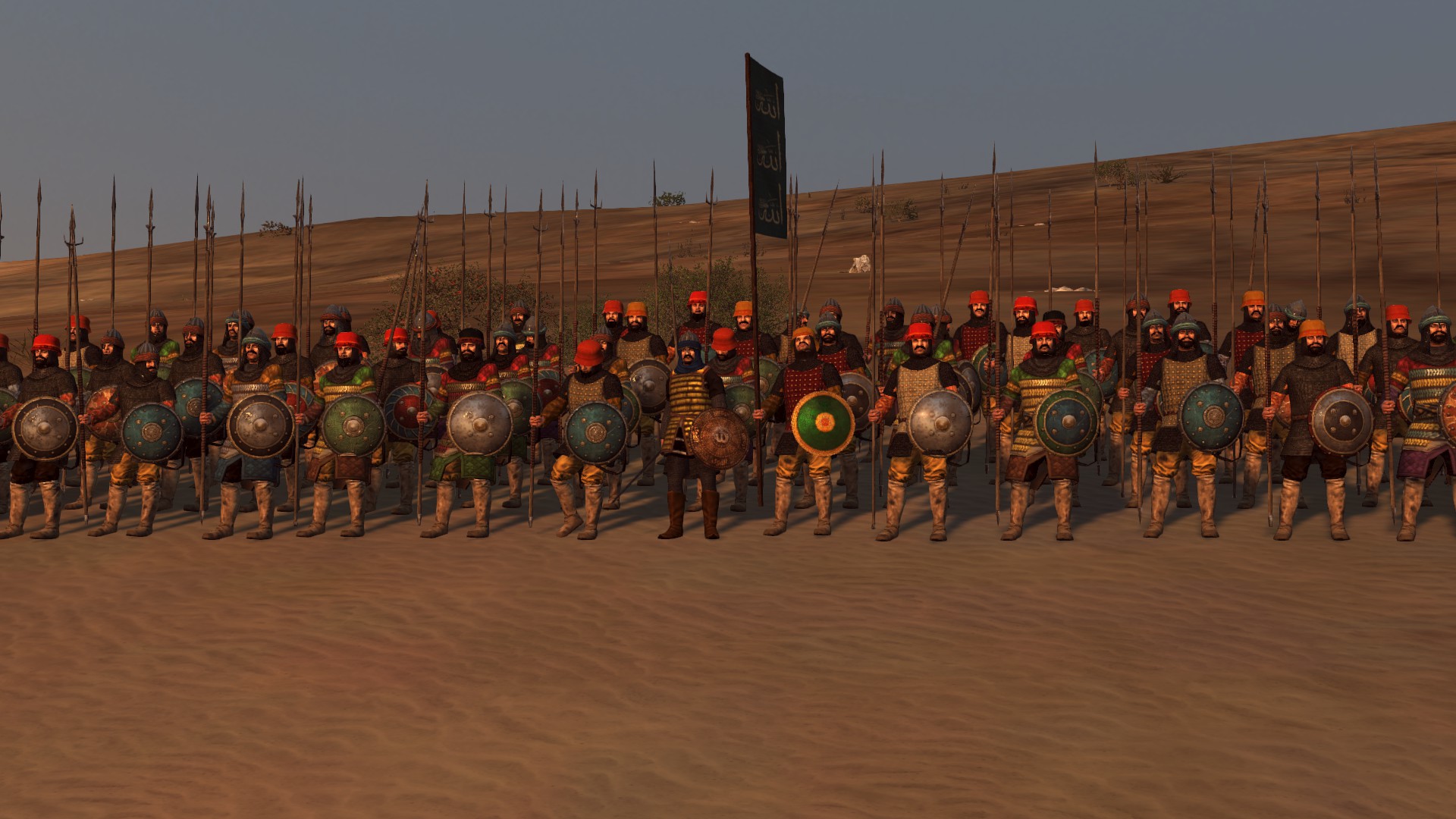
Tier 3

Mushat al-Jund
Tier 1
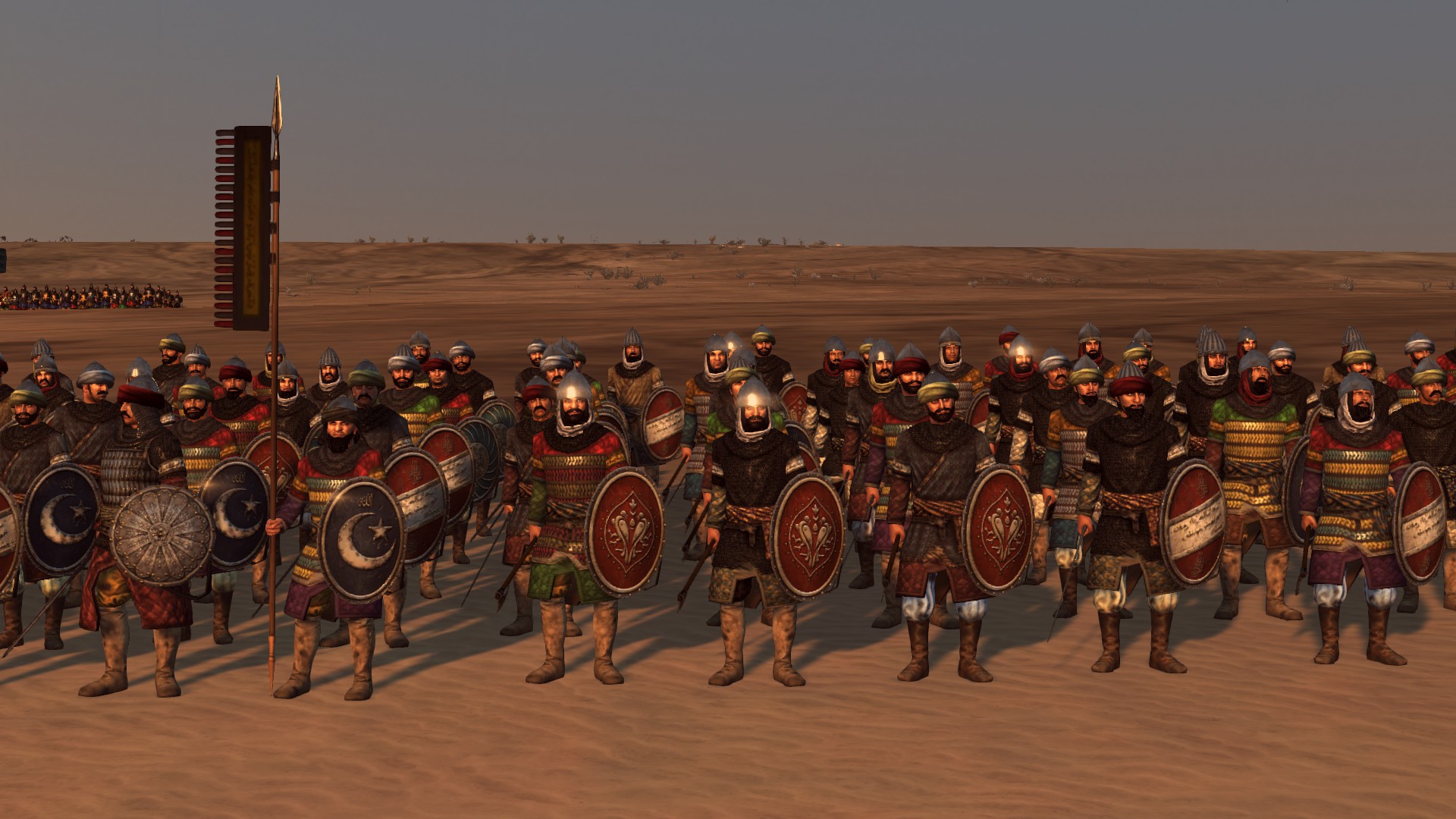
Mushat al-Halqa
Tier 2
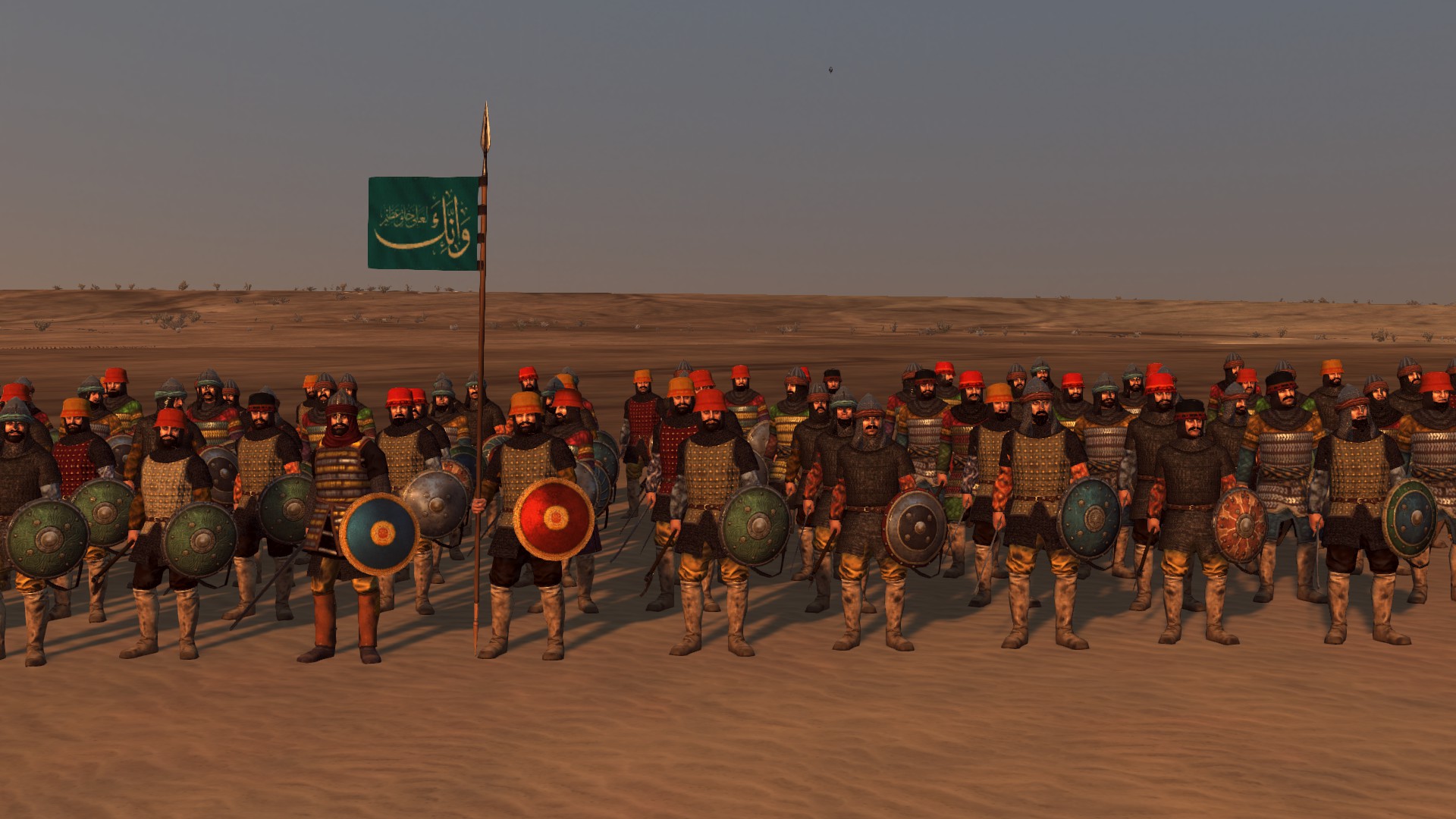
Tier 3

Rumat al-Jund
Tier 1
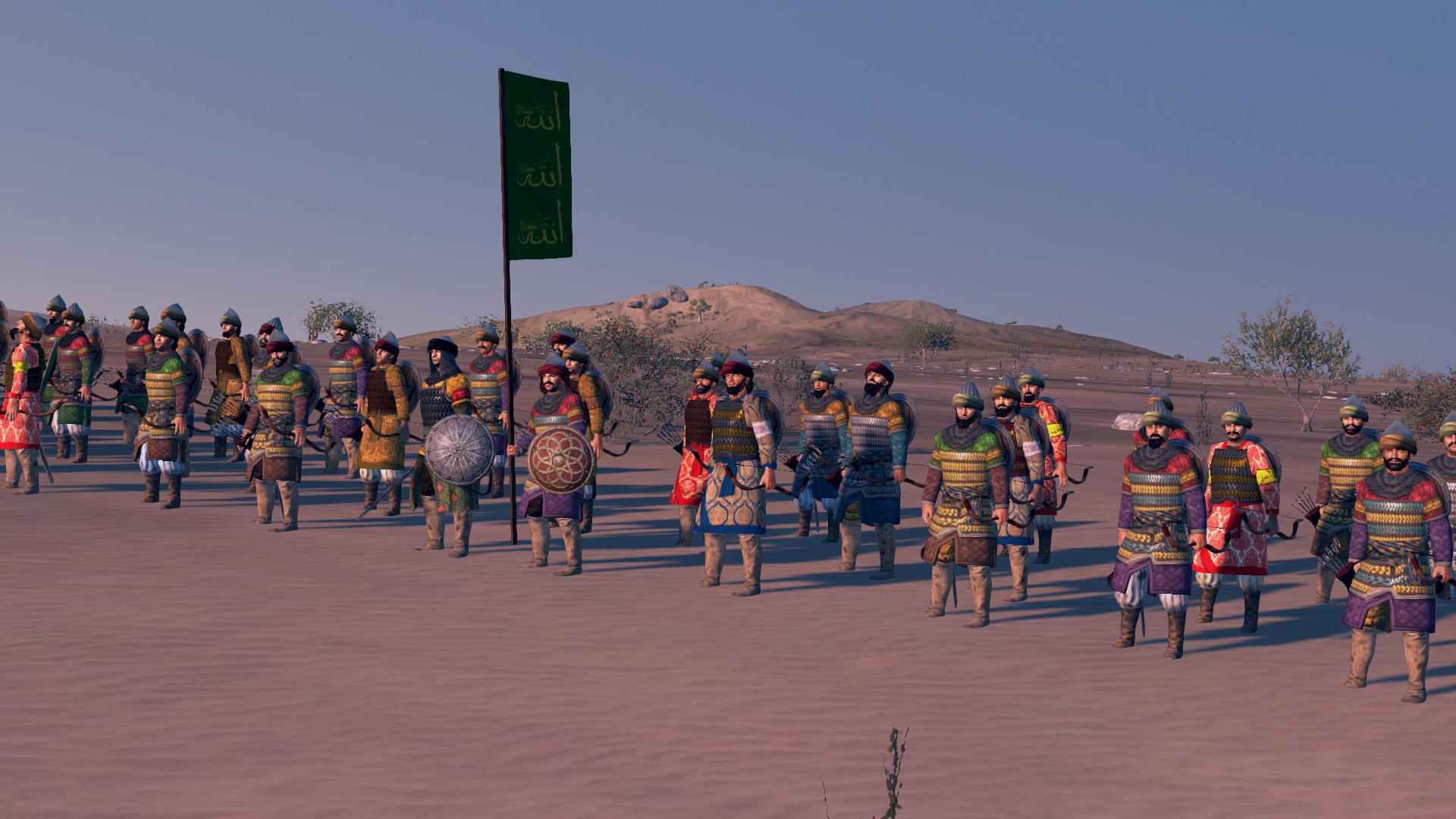
Rumat al-Halqa
Tier 2
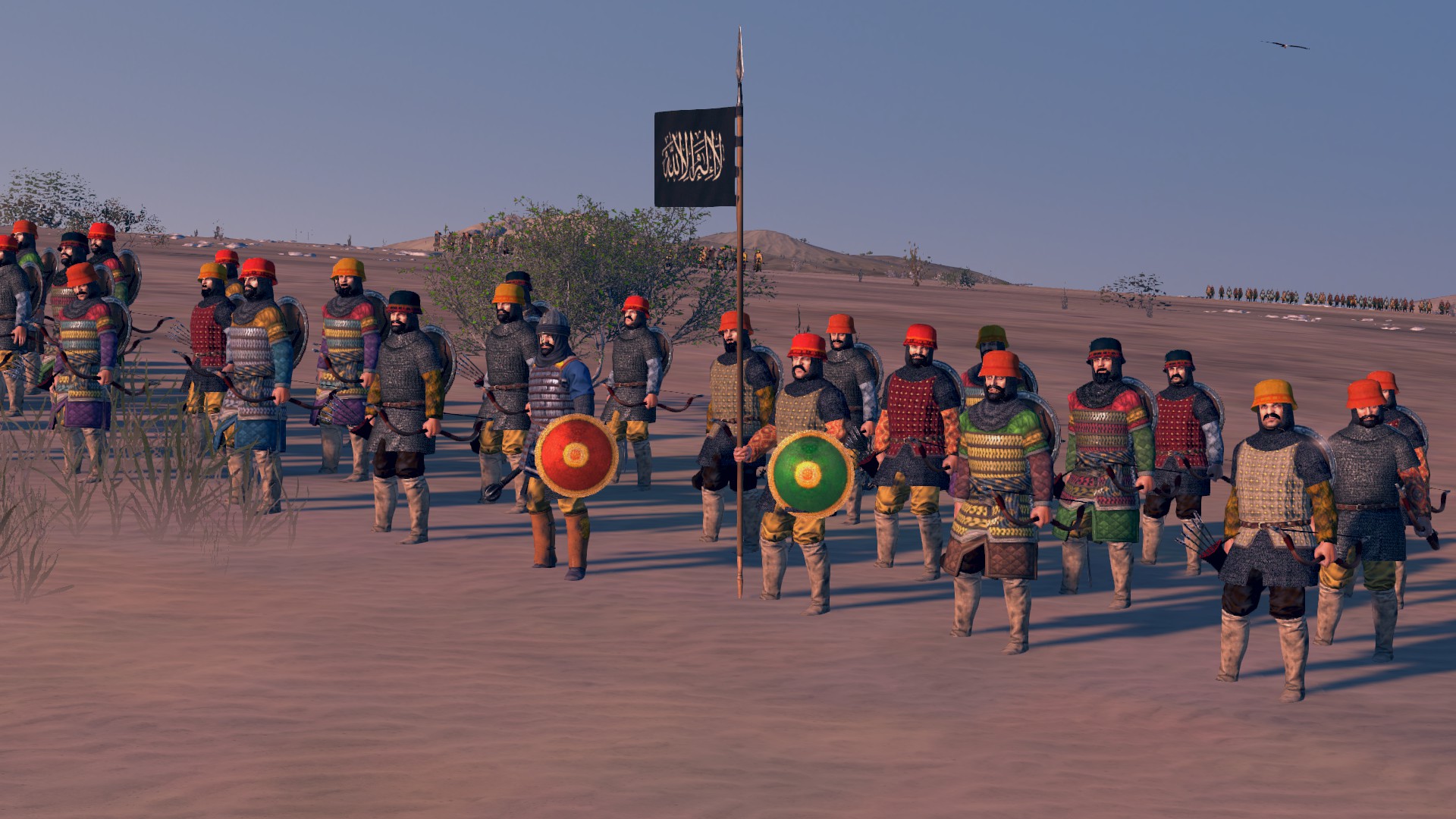
Tier 3
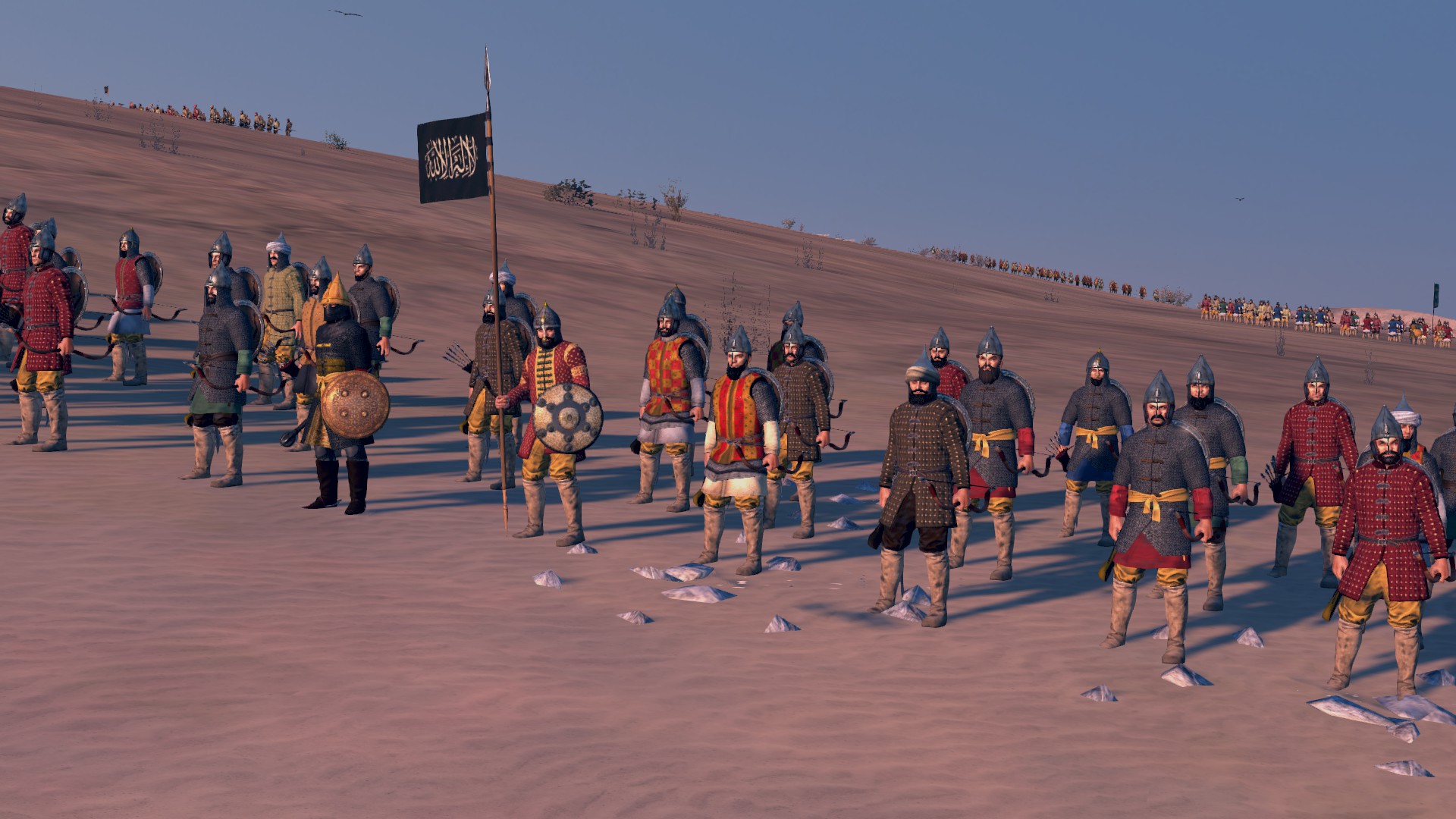
Jarkhiyyah
Even though the Composite Bow is the Mamluk's main ranged weaponry, Crossbow was also used by the Mamluk Army. As an illustrative example, a Mamluk archery manual from 1386 contains a section about shooting Crossbow from horseback. The crossbow is a Qaws ar-Riqab (stirrup crossbow), used with jabbadh (belt) and khattaf (double hook)
Tier 1
Tier 2
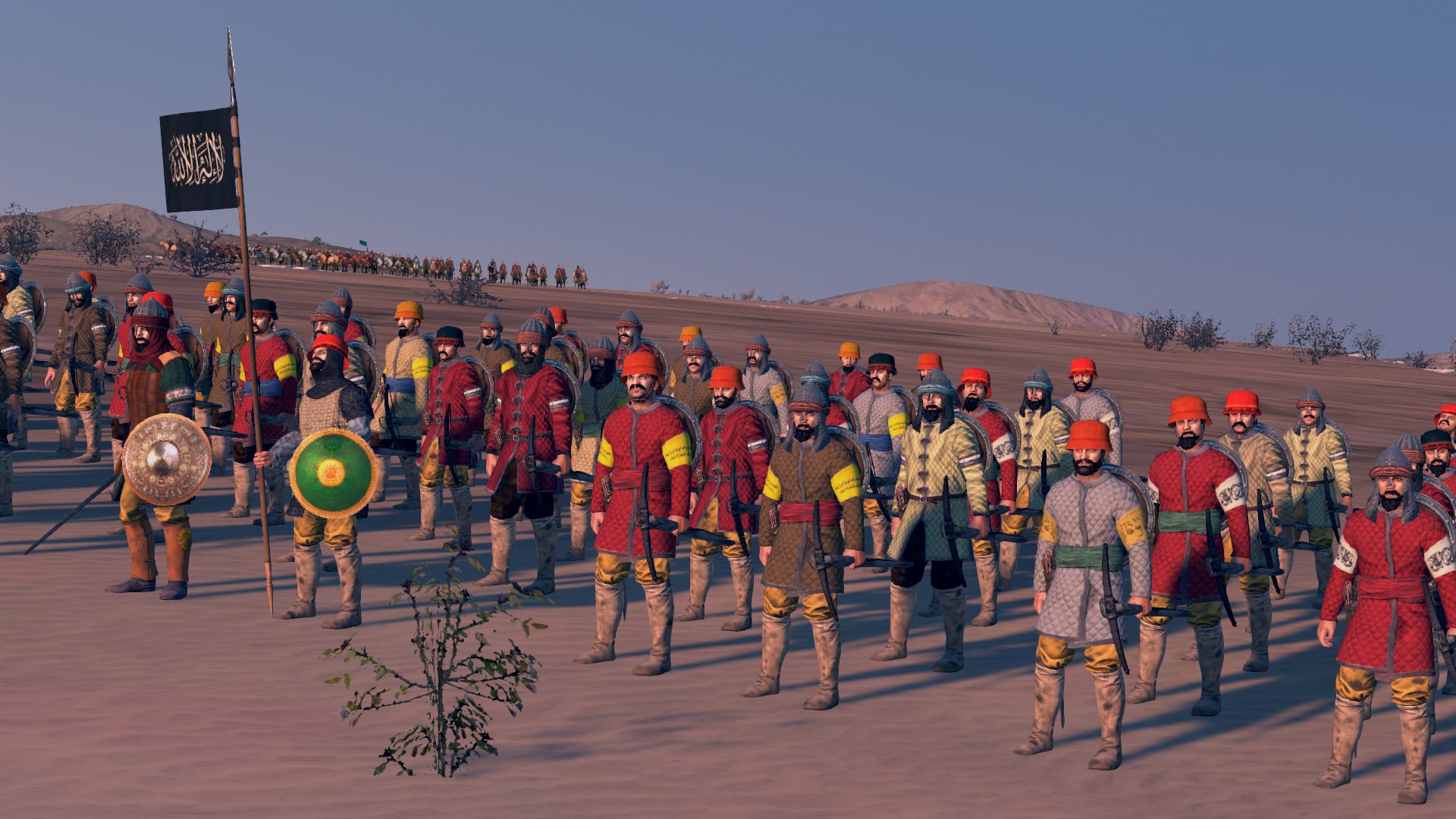
Tier 3
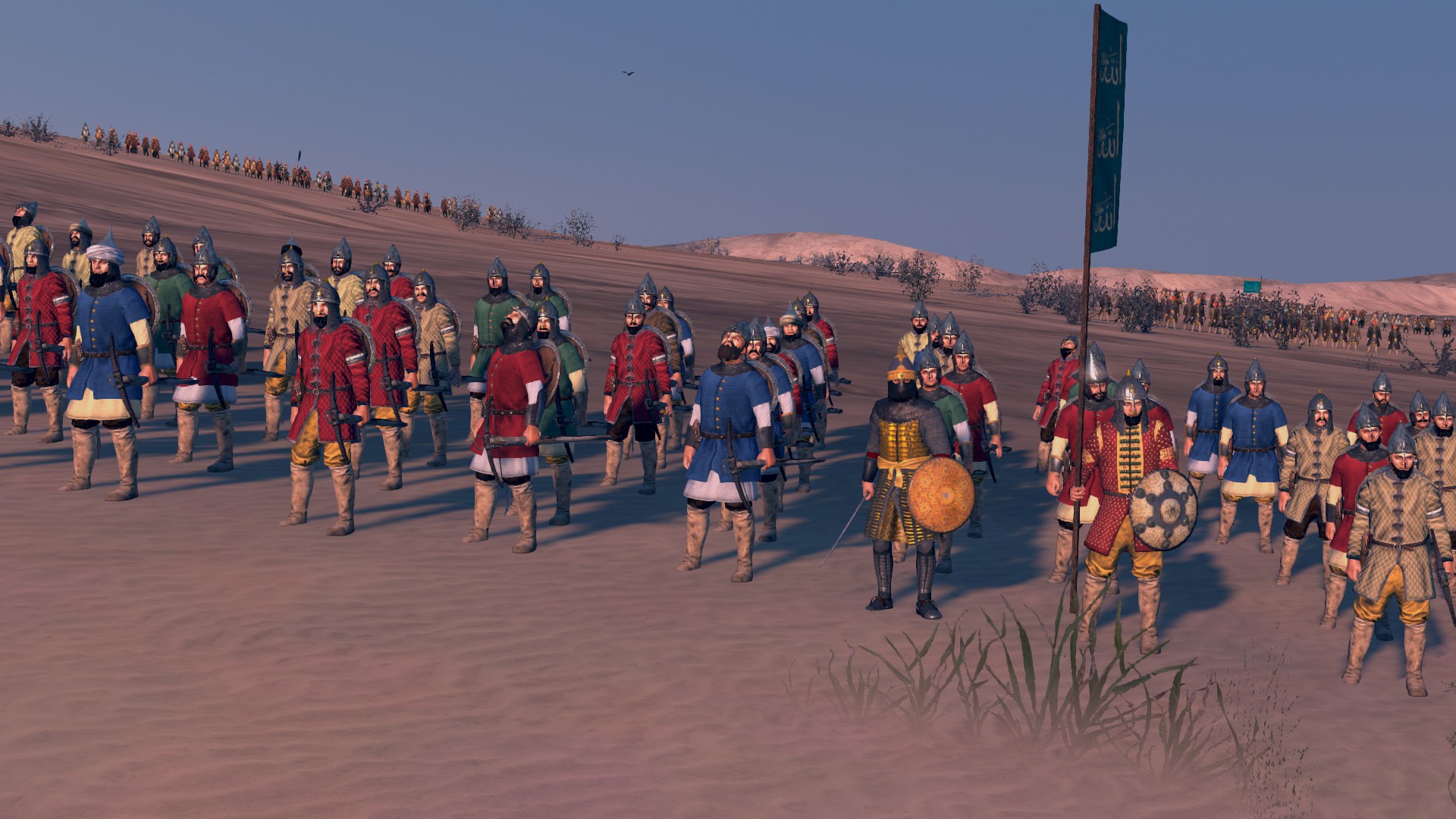
Jarkhiyyah al-Khayl
Tier 1
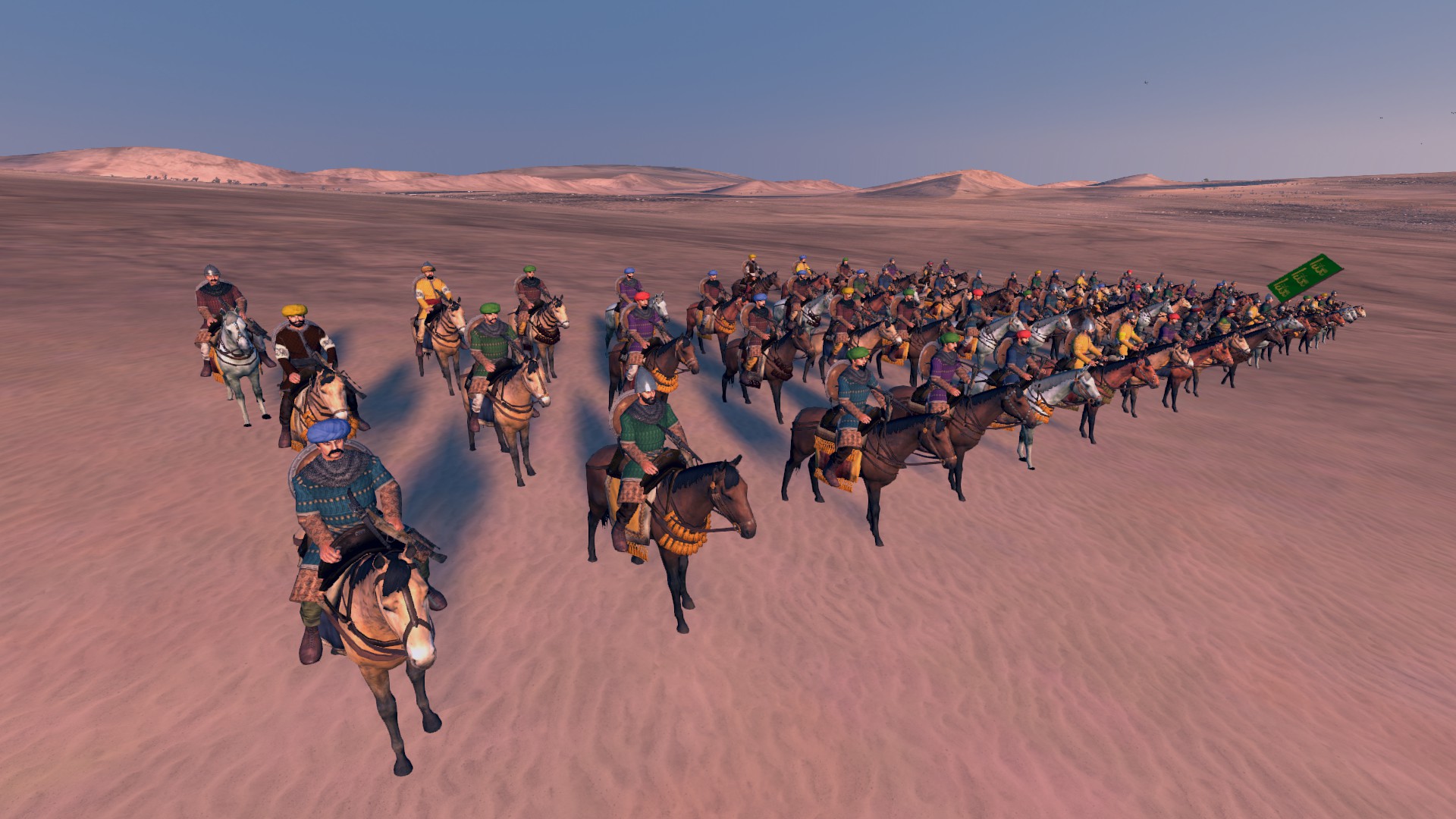
Tier 2
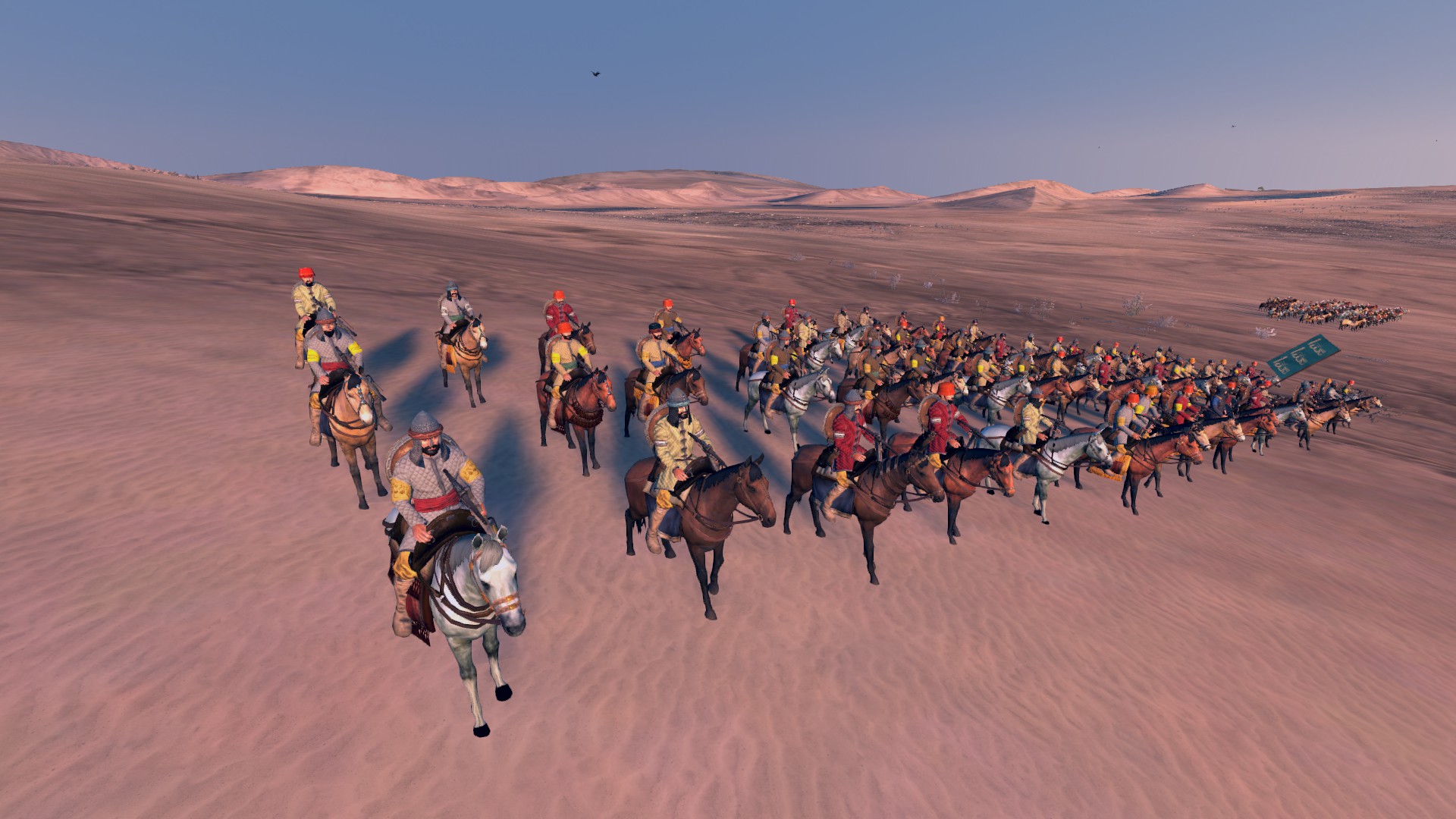
Tier 3
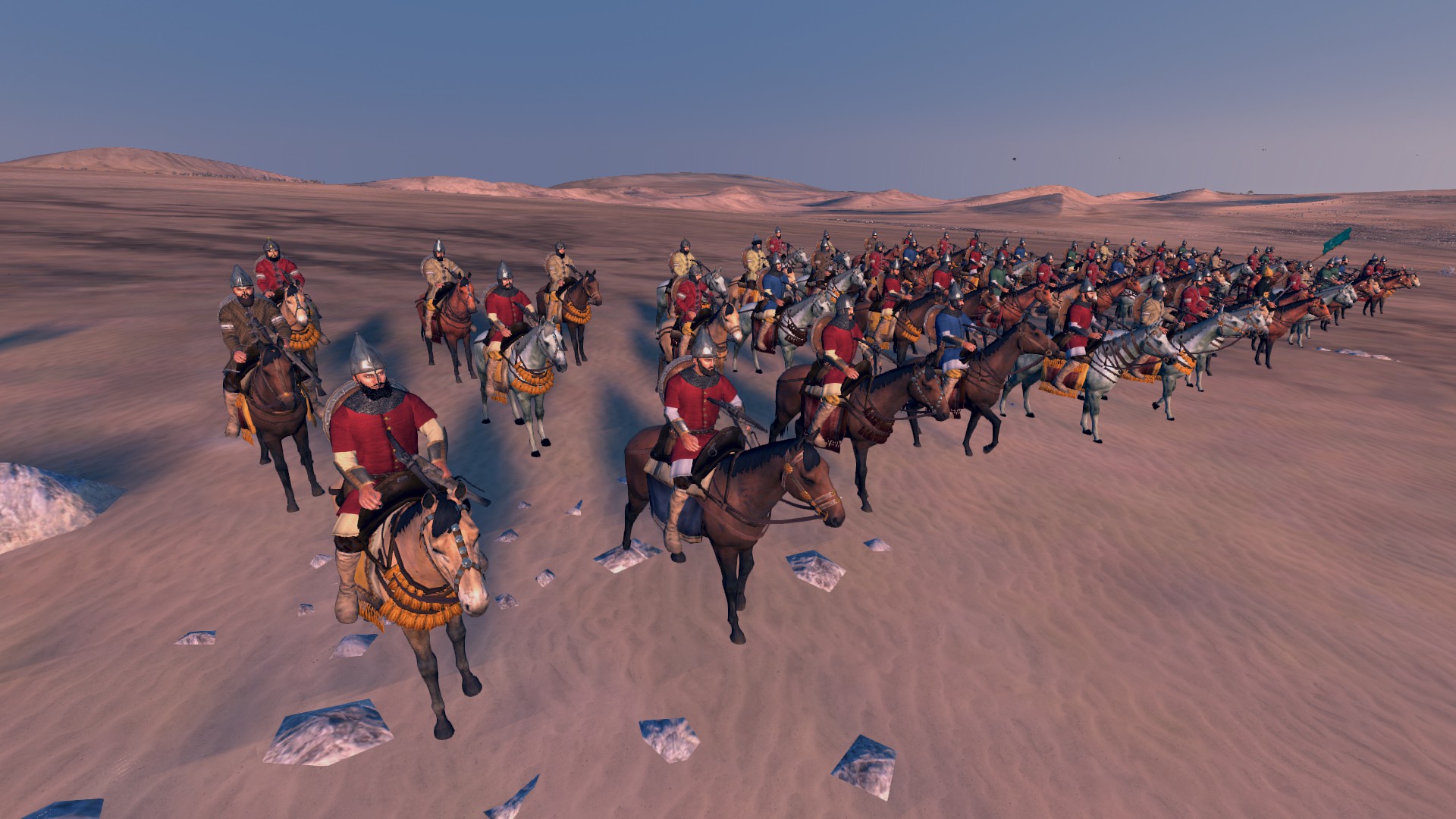
Specialist Units
Madfi'iyyah
Tier 2
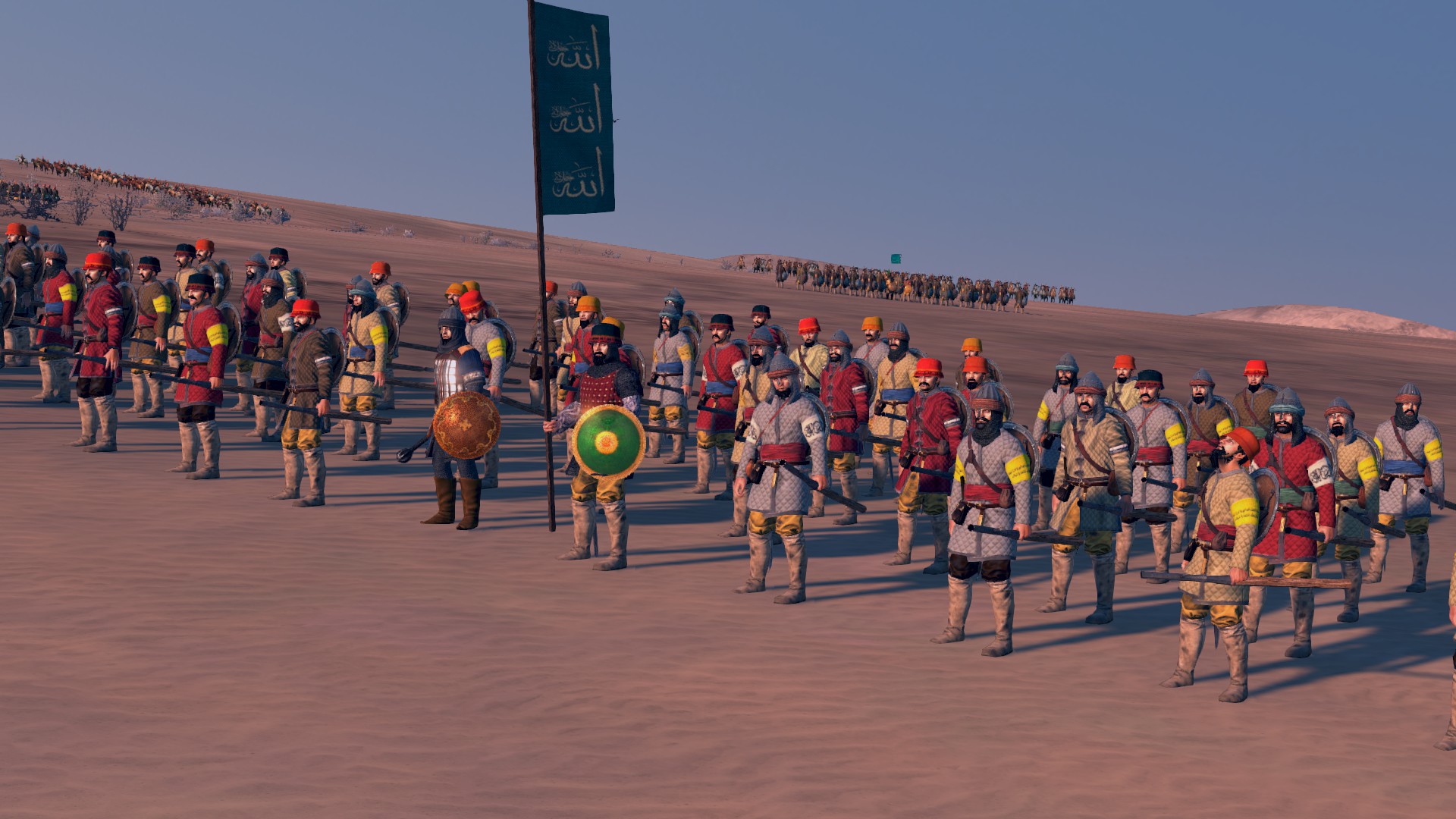
Bunduqiyyah
The first Arquebus unit of the Mamluk Sultanate was comprised of Awlad an-Nas, whose monthly pay in the year of 1490 was 1000 Dirham or less, a meagre pay. The Tabaqa al-Khamisa, "The fifth barracks" the arquebus unit raised later in 1510 were called so because they have separate payday so they won't mingle with the higher status Mamluk getting their pay in the previous 4 paydays. Sultan An-Nasir once made an Arquebus unit of Black Abid, which ended up with the unit slaughtered, and the Sultan intimidated by his own Royal Mamluks in 1498
Tier 3
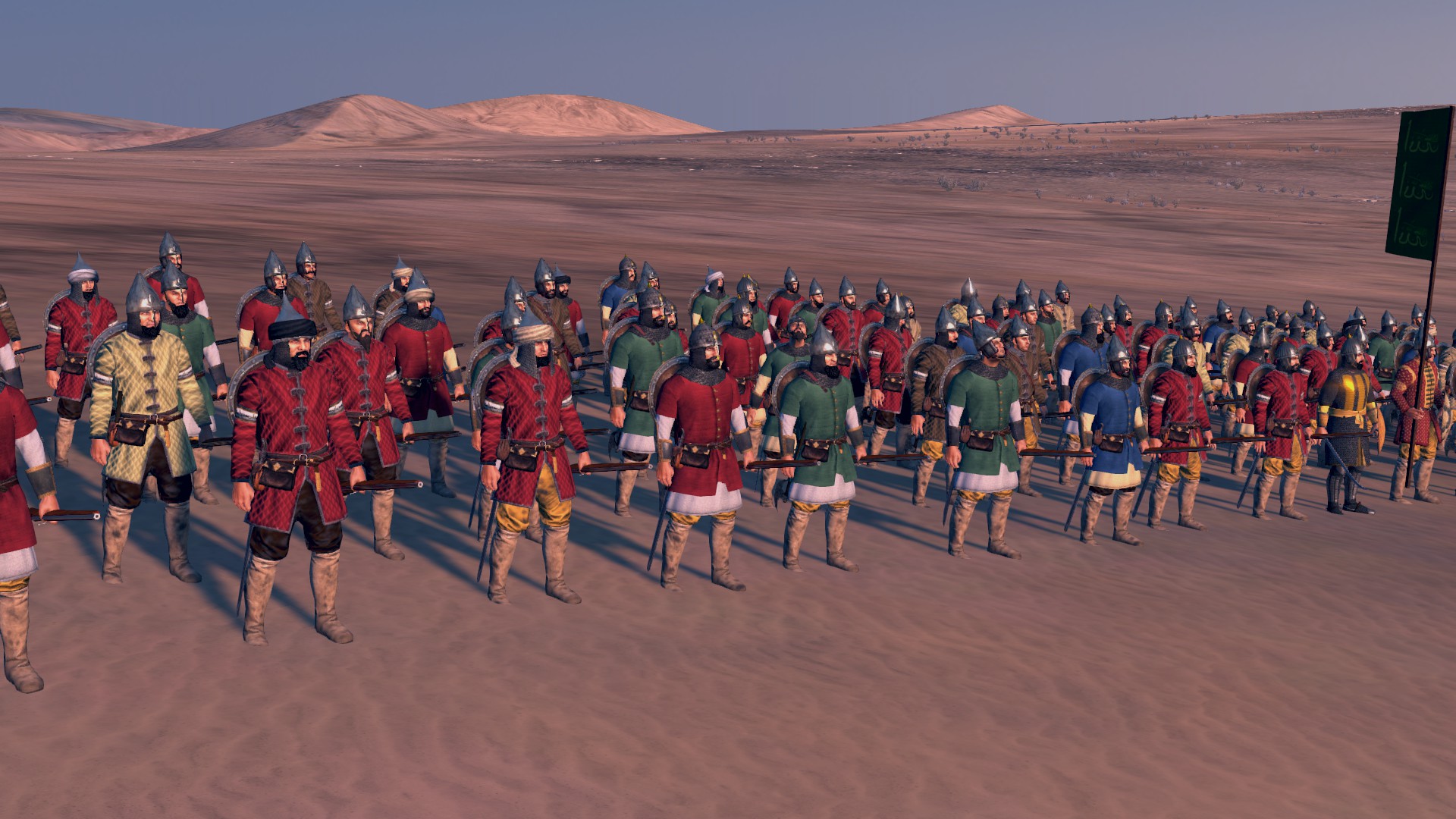
Naffatun
Petroleum Mixtures, called Naft in medieval Arab parlance, were used throughout the Middle East as Incendiary weapon. Special units who specialized in this were called the Naffatun, who wears the Libas an-Naffatun, a protective fire-resistant suit to protect themselves from their own weapon.
Tier 1
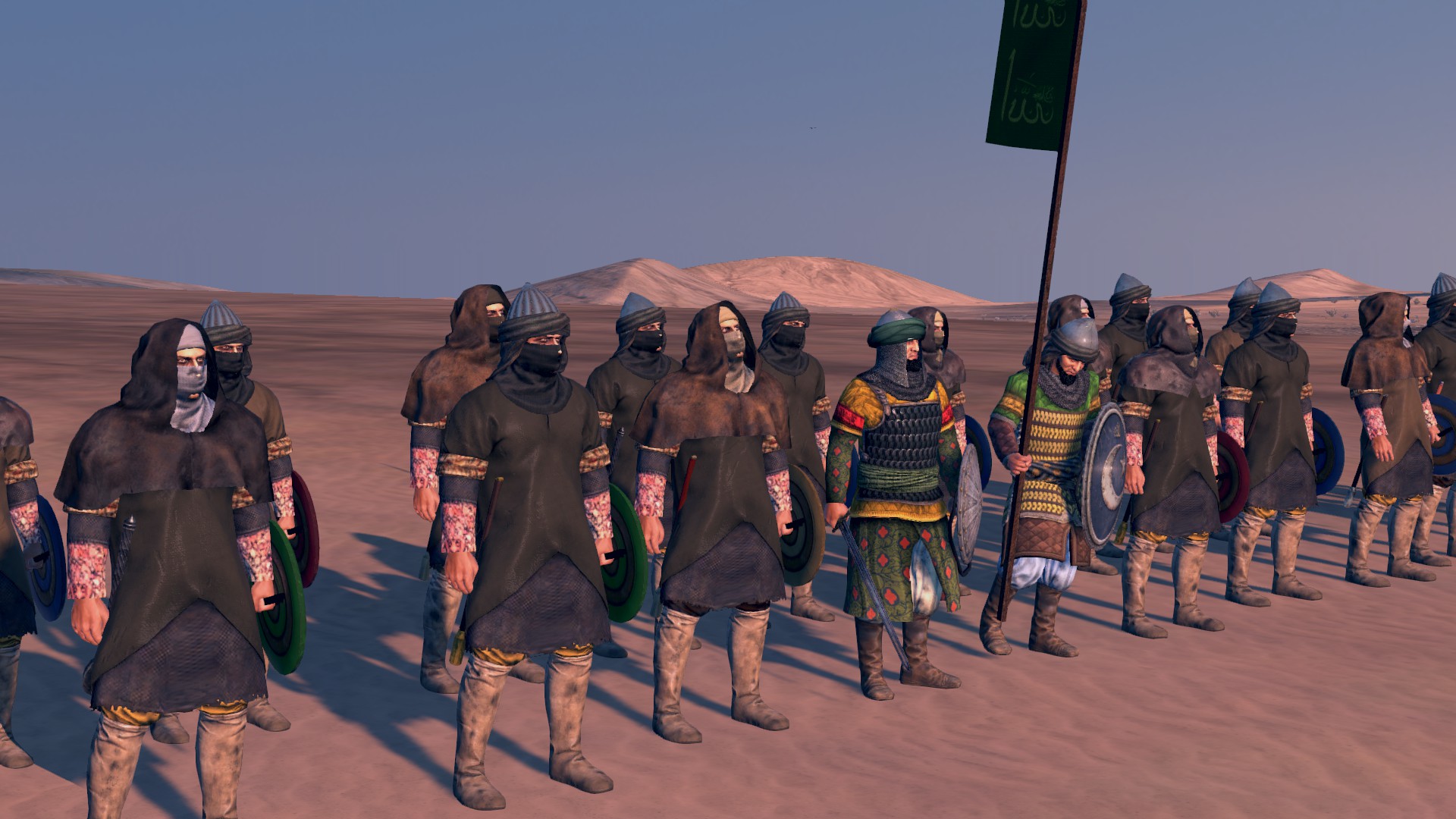
Tier 2
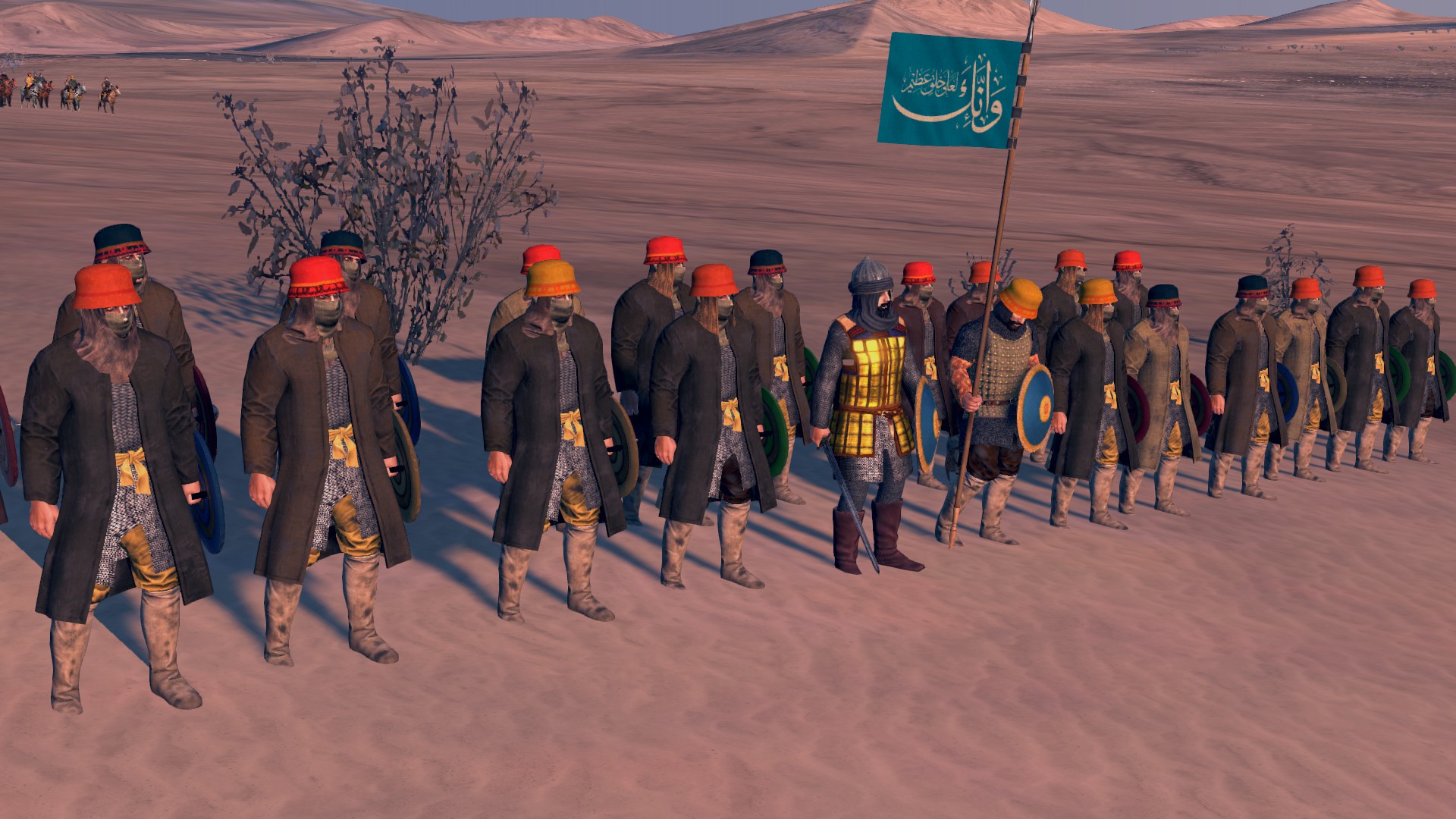
Tier 3
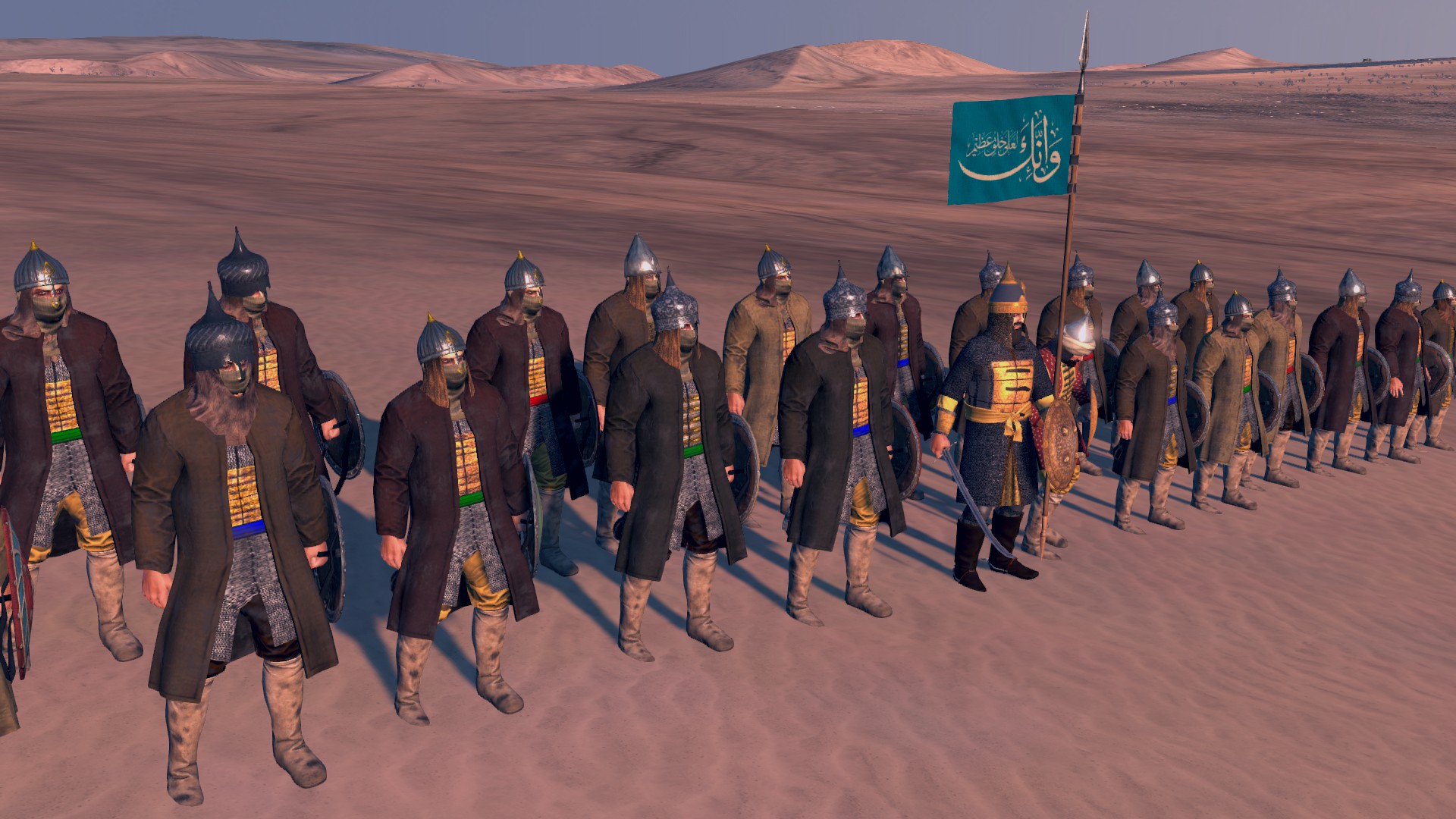
Sudanese Archers
The Fatimid Era Black Sudanese Army was crushed by Salahuddin al-Ayyubi in a revolt in 1169, and the unit disbanded. The Sudanese in Ayyubid service at Arsuf 1191 and Damietta 1221 therefore must be a new unit. The Ayyubid Sudanese Army however was much smaller, and continue to dwindle so much that in the time of the Bahriyyah Mamluk’s ascension to power the Sudanese unit has disappeared.
Tier 1
Irregular Units
Ahdath
The Ahdath, literally "young men", is a kind of urban militia that plays a considerable role in the cities of Syria and Upper Mesopotamia from the 10th to the 12th centuries, and is particularly well known at Aleppo and Damascus. Officially, its role is that of police, charged with public order, fire-fighting, etc., and also, in time of need, with military defence in the reinforcement of the regular troops.
Tier 1
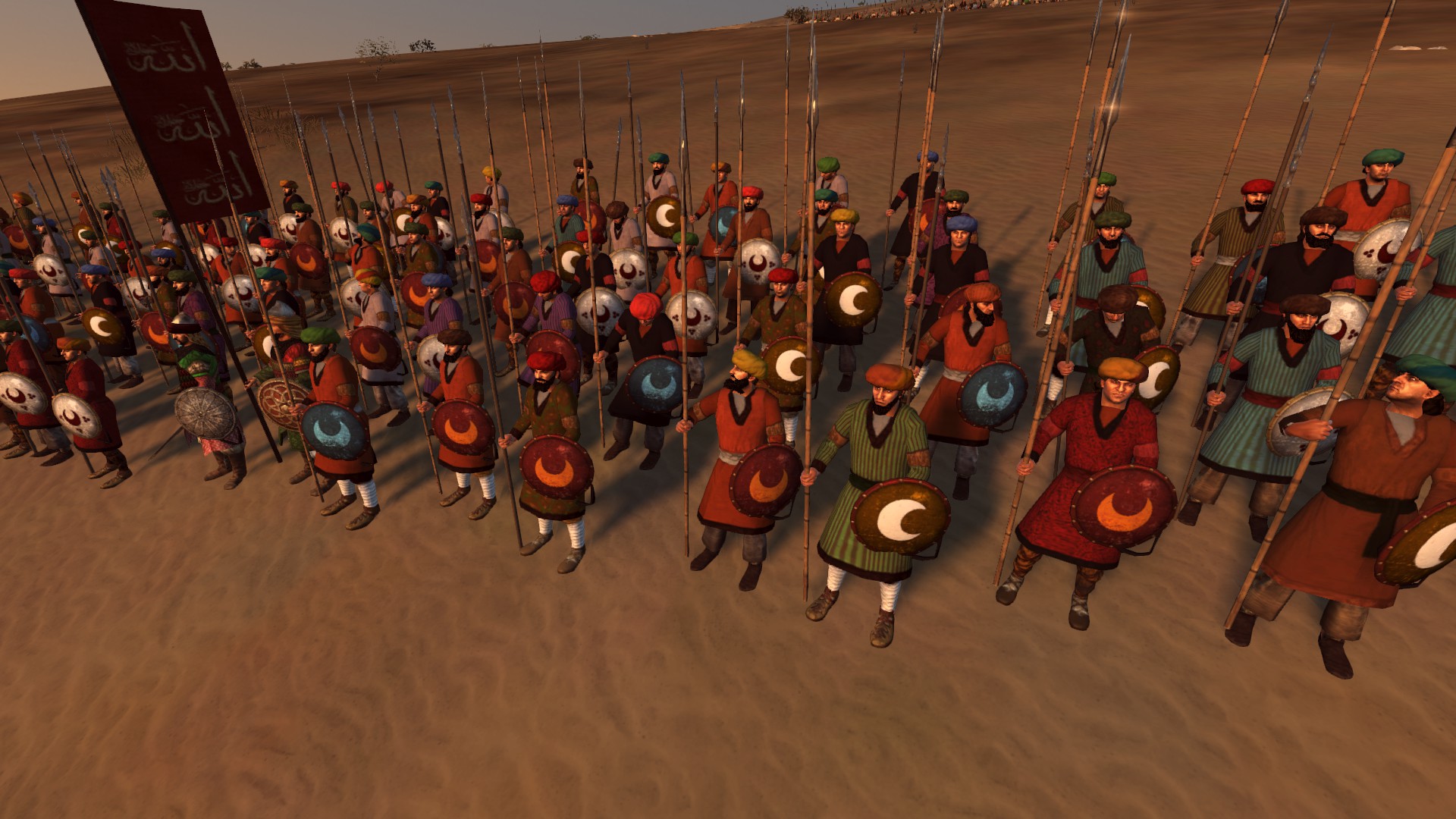
Harafisha
Harfush, plural Harafisha, literally means Rabble. In Mamluk era, The harafish represent the lowest element in the strata of Mamluk society, forming a guild-like organization in the urban centres of Cairo and Damascus. In the context of Mamluk military, however, the Ayyubid decentralized organization and Mamluks’ disdain for infantry led them to call what they see as amorphous masses of their infantry this way, even though there may be professionals or trained specialists in it.
Tier 2
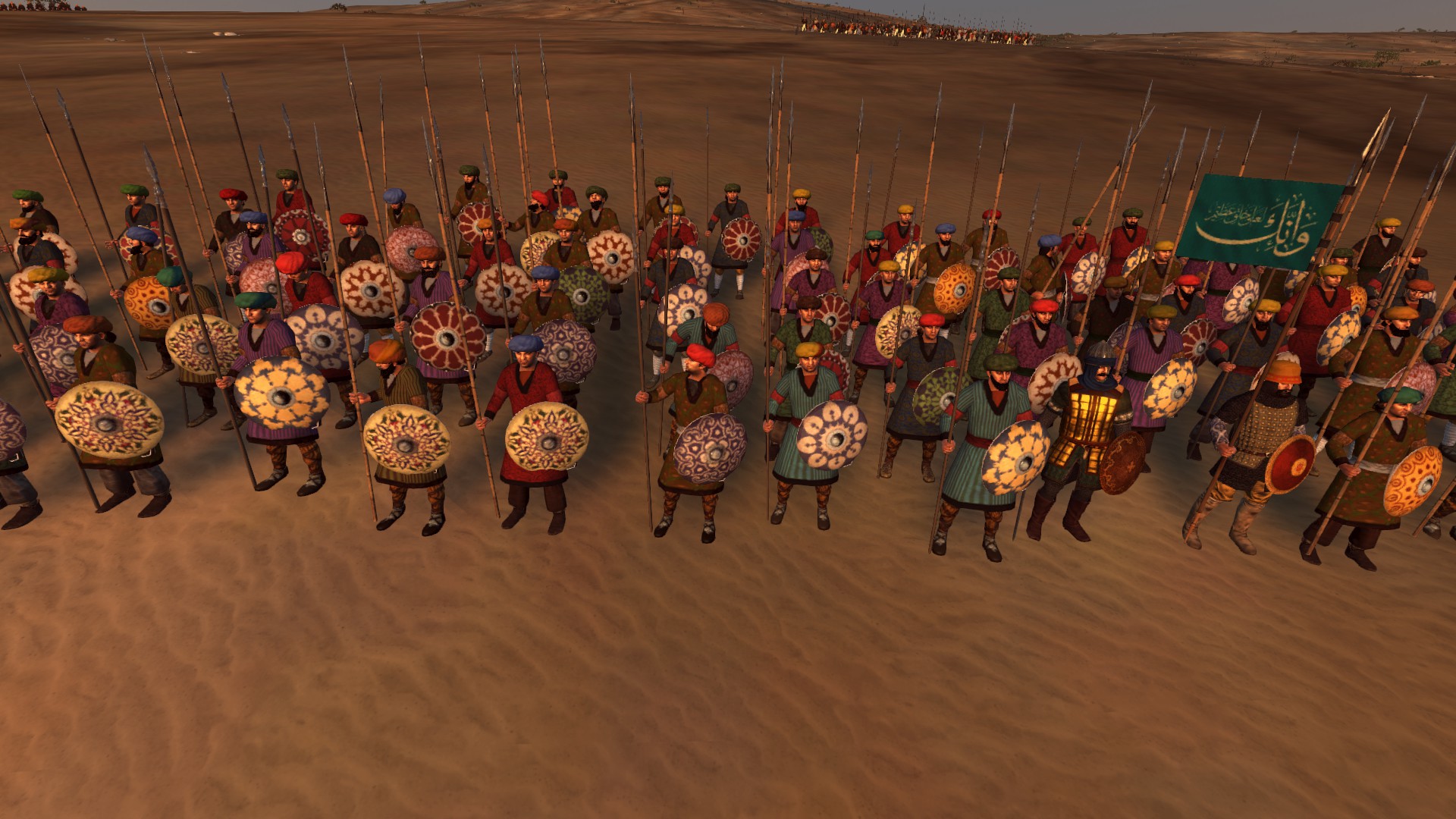
Tier 3

Rumat al-Ahdath
Tier 1
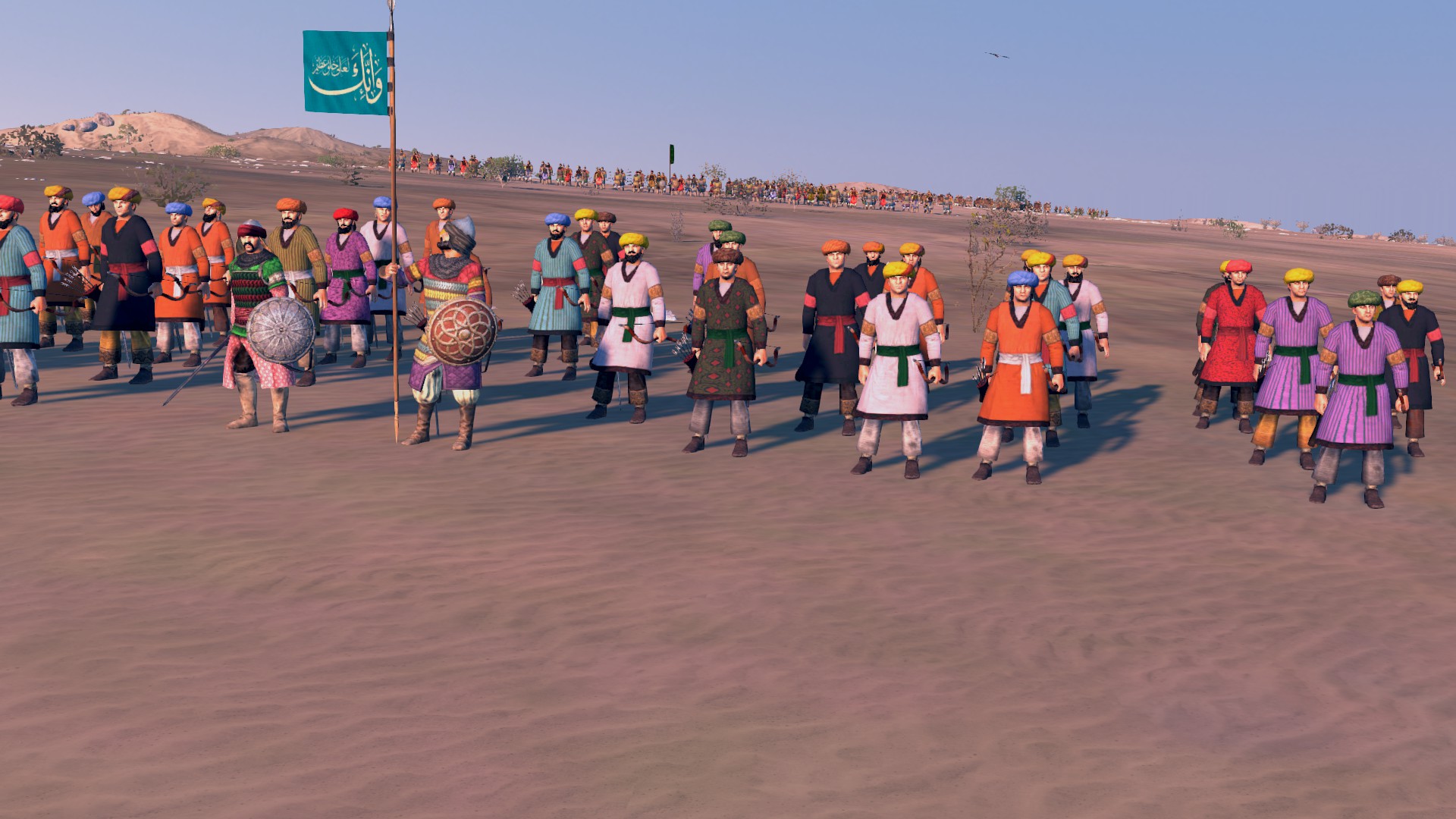
Rumat al-Harafisha
Tier 2
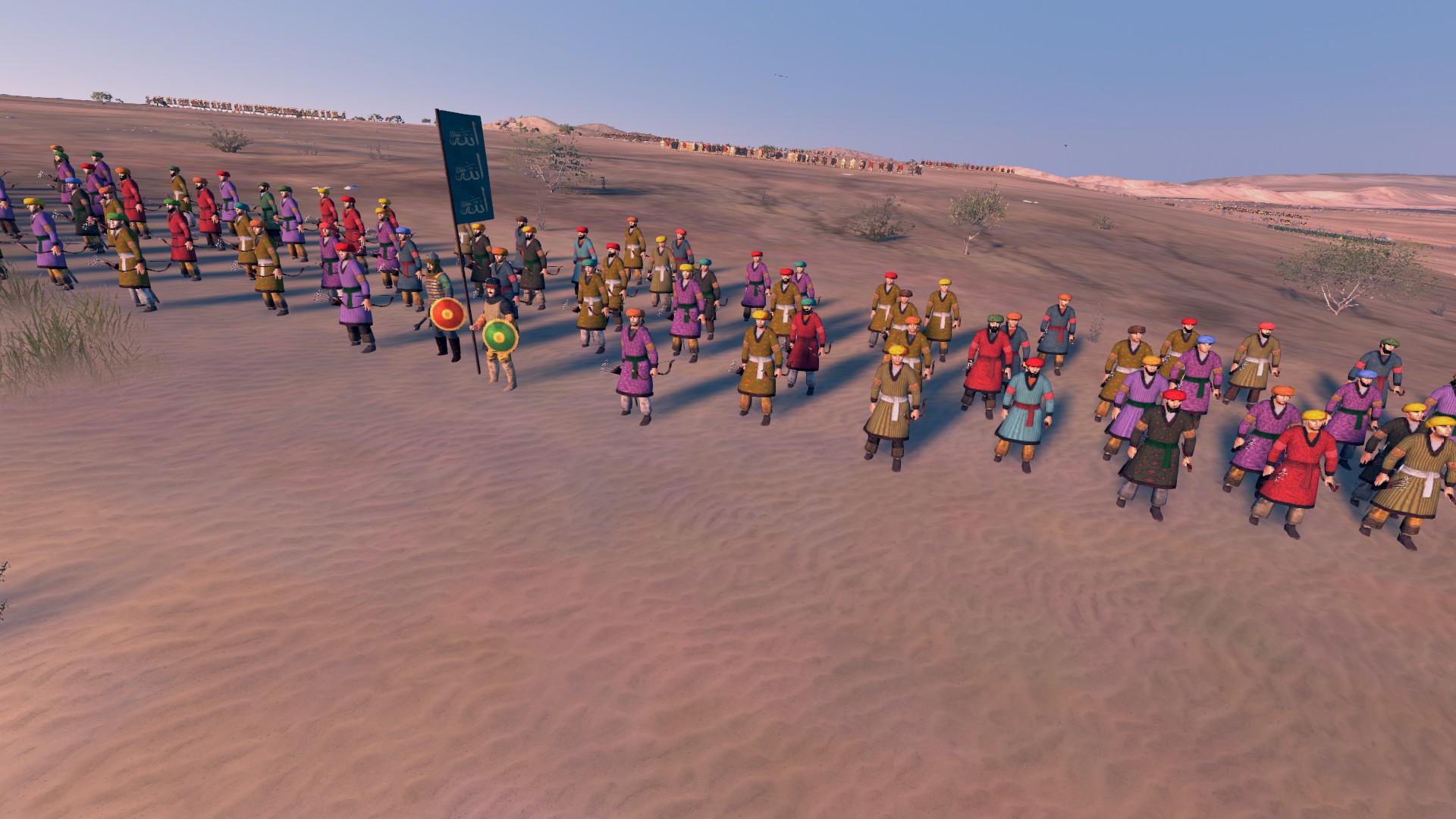
Tier 3
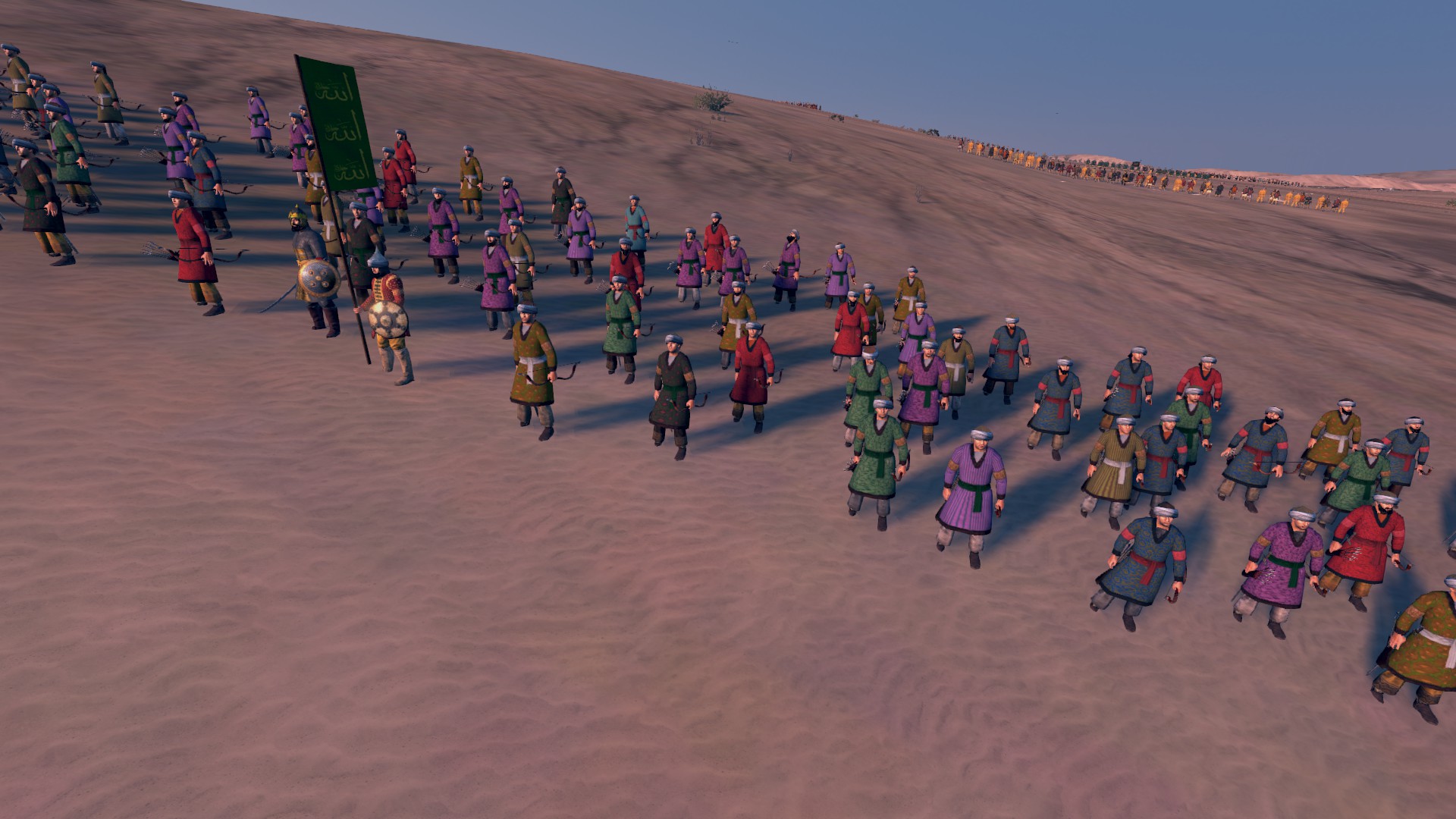
Mutatawwi'a al-Balad
The Infantry was never counted as a part of an Ayyubid or Mamluk army proper. Mamluk infantry units were irregulars recruited ad-hoc in times of military campaigns, Principally they were utilized for garrisoning fortresses, sieges, amphibious assaults, and occasionally accompanying the Mamluk field army. Mutatawwi'a means "volunteers".
Tier 1
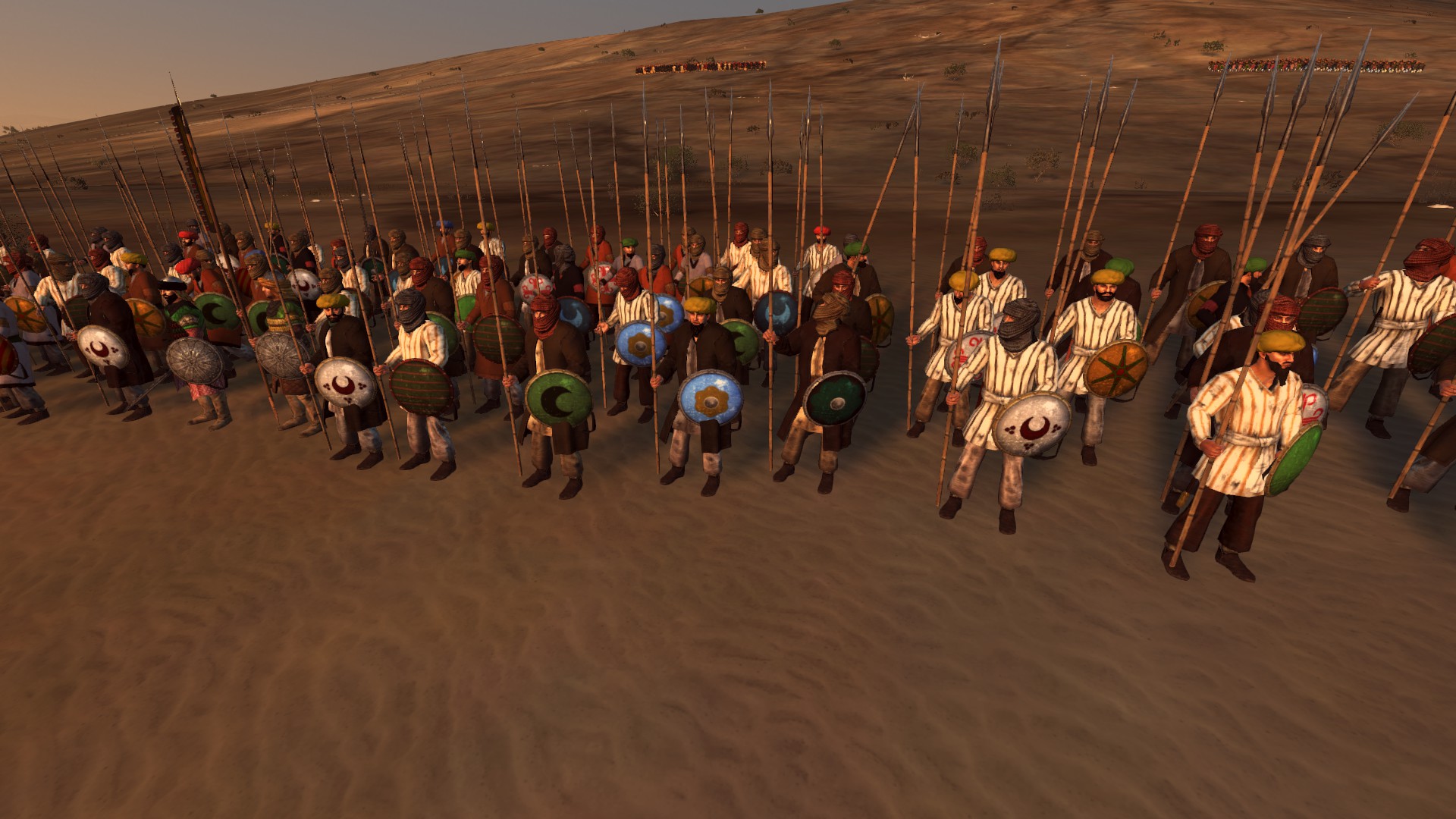
Tier 2
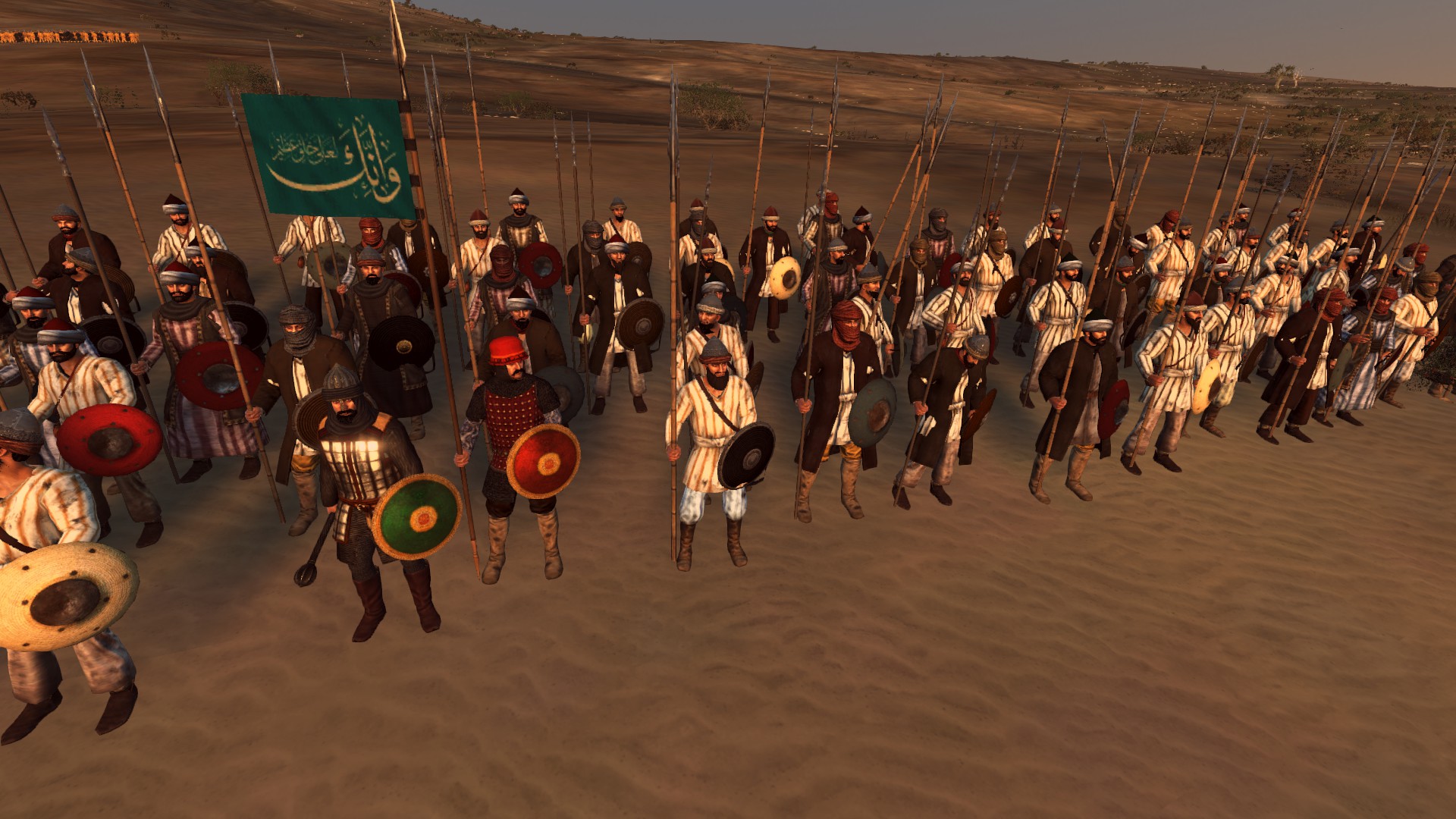
Tier 3
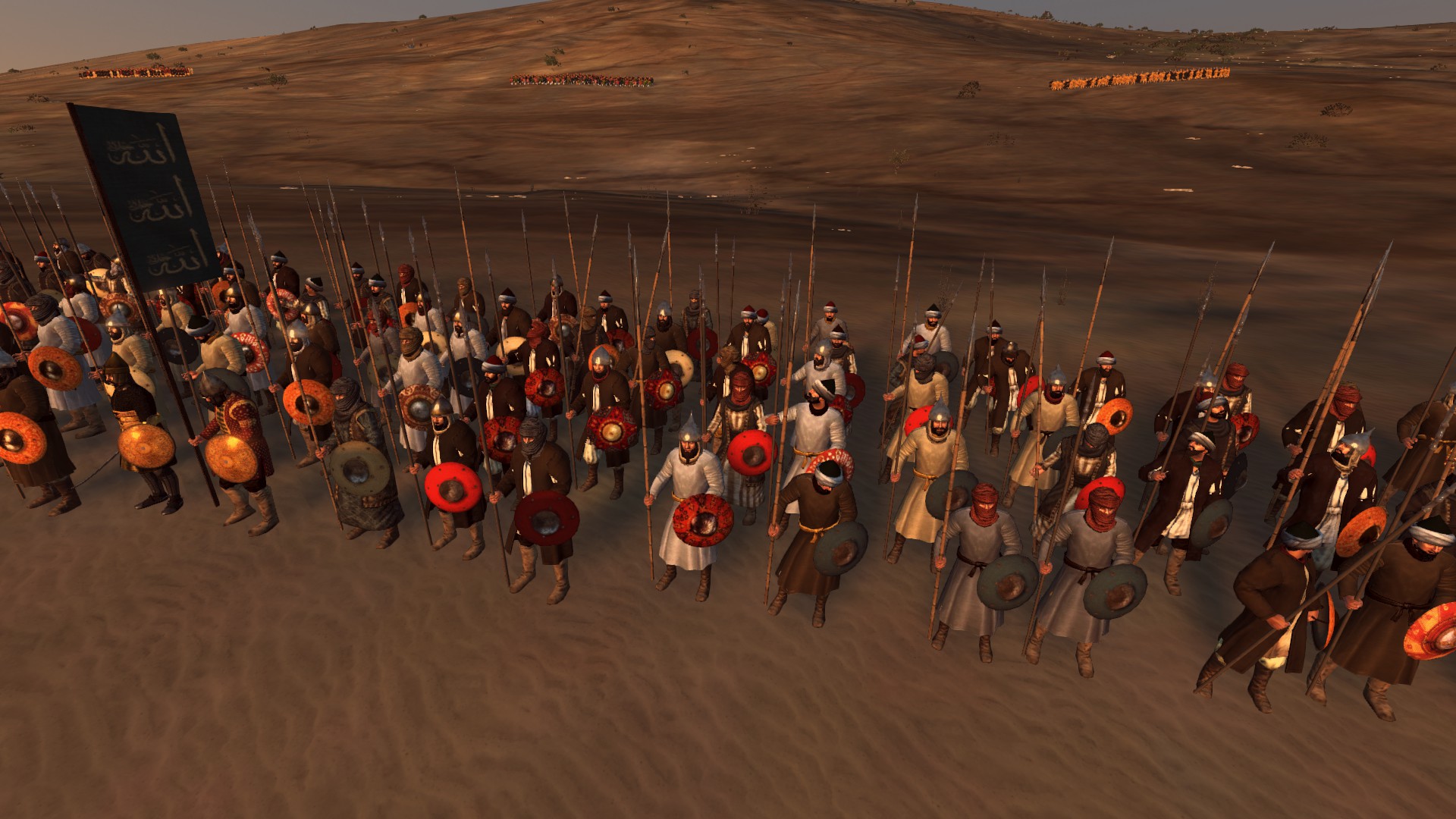
Rajilah al-Asha'ir
The Mamluks usually recruited their irregular infantry from Arab, Kurdish, Turkoman, and Druze tribes of the Levant. Asha'ir means "Tribal"
Tier 1
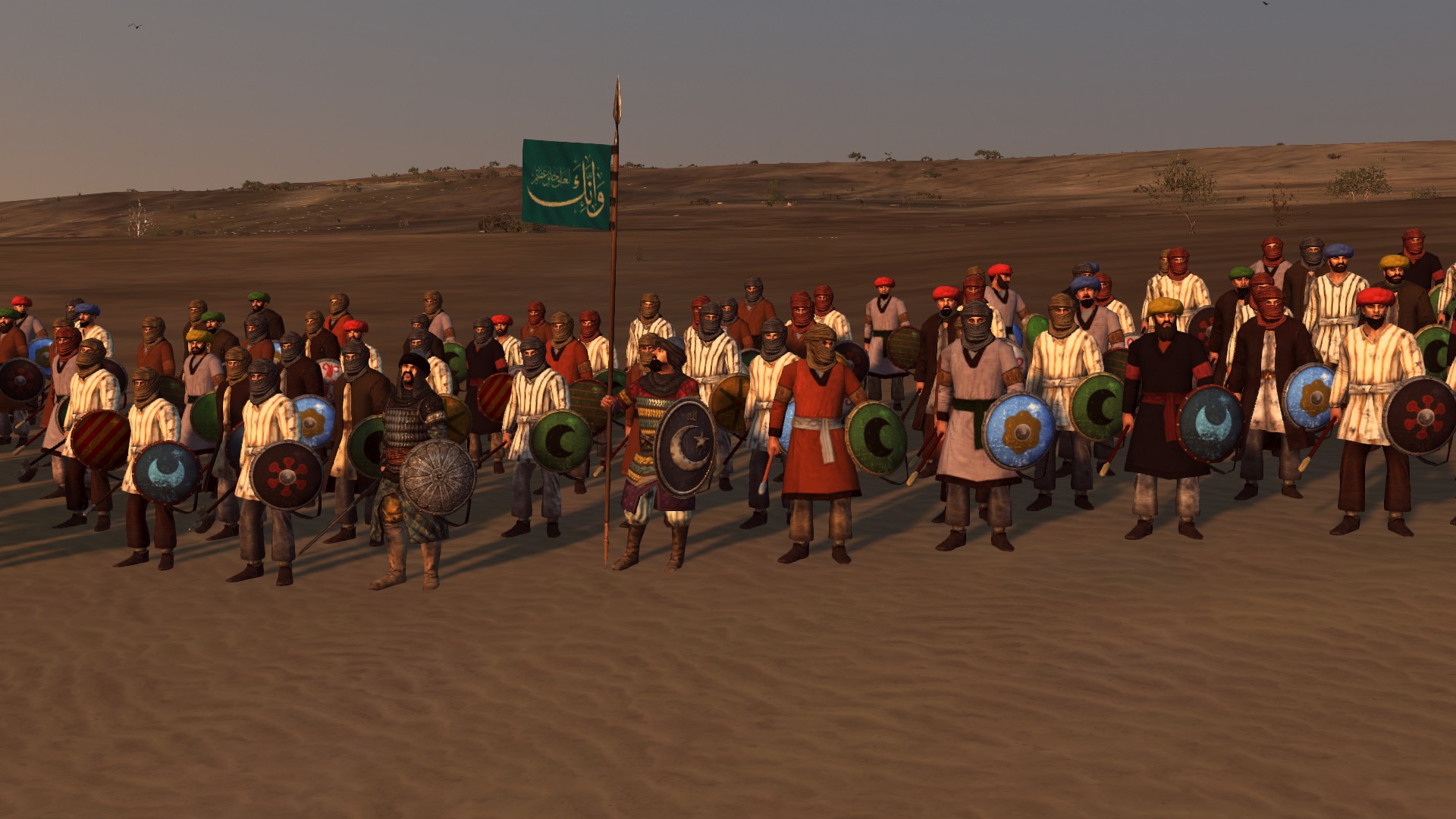
Tier 2
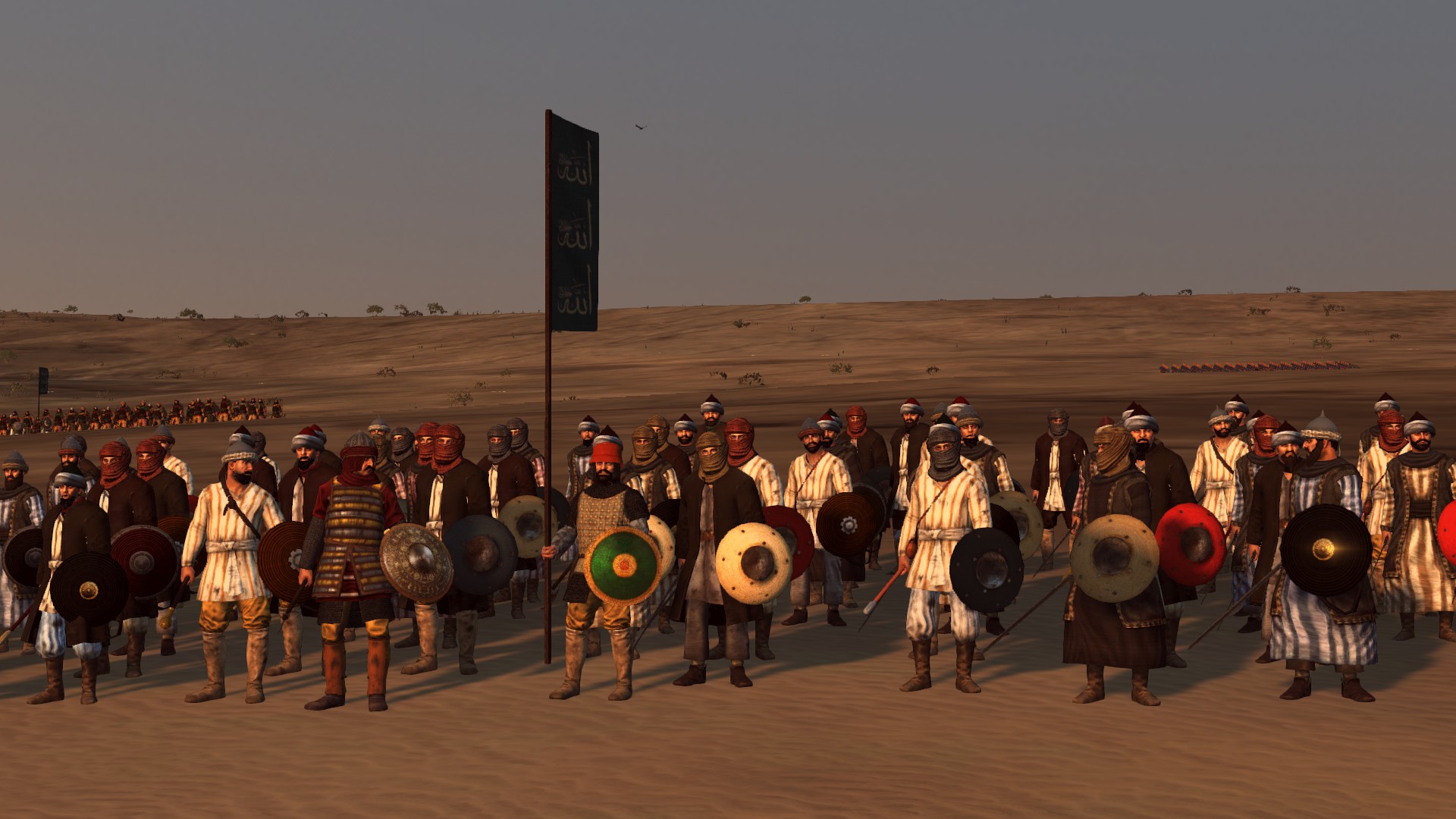
Tier 3
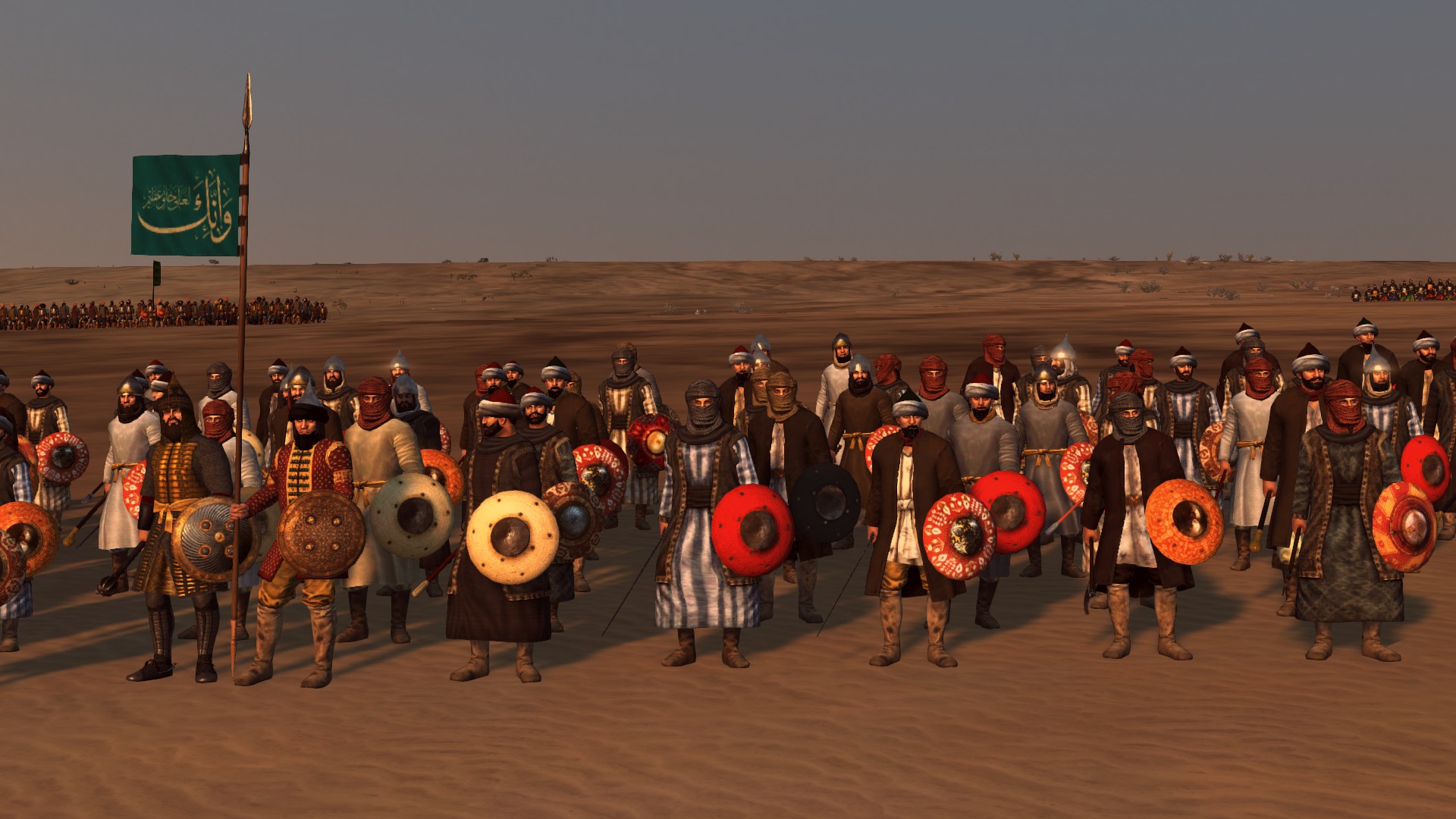
Rumat al-Asha'ir
Tier 1
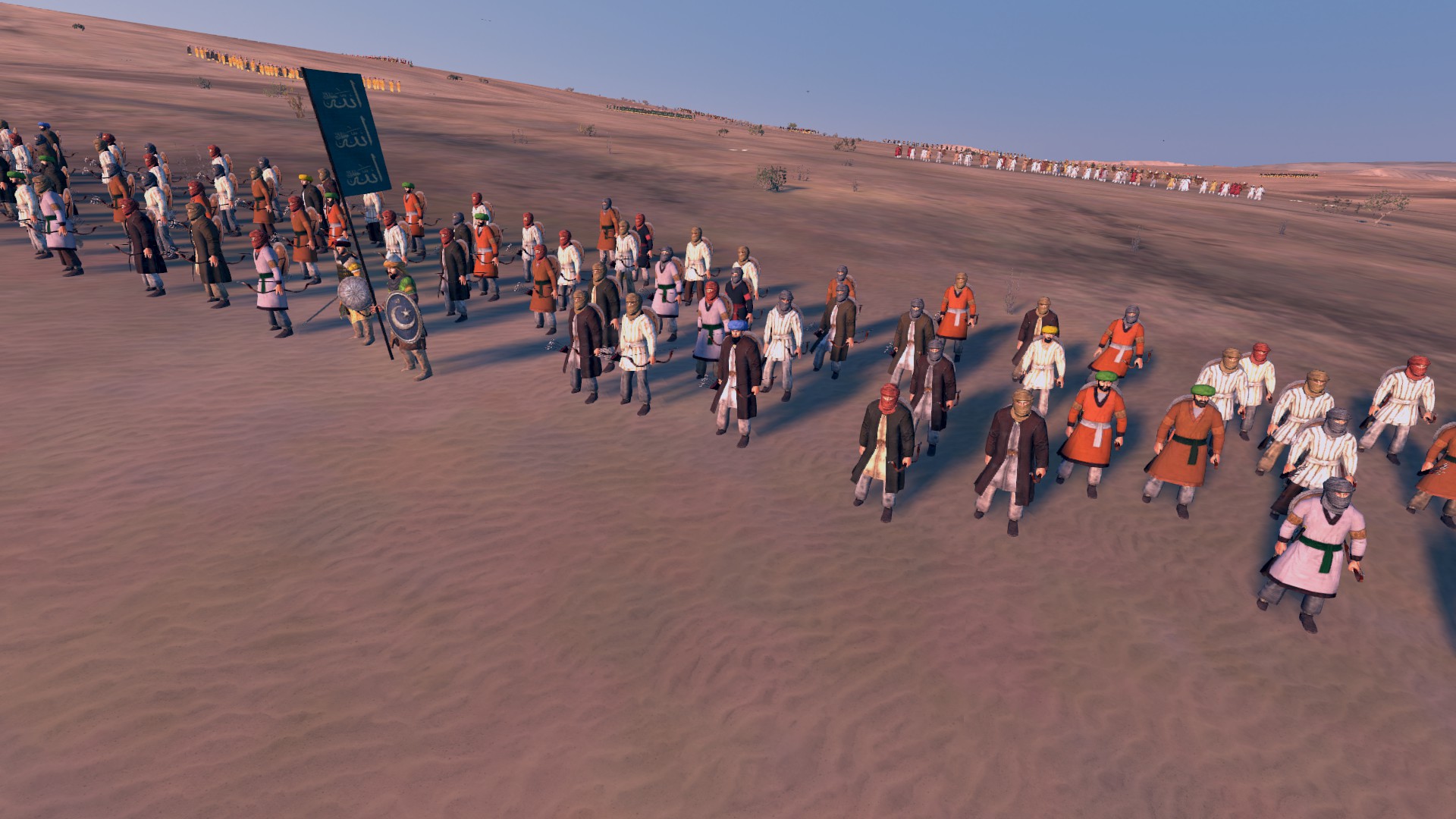
Tier 2
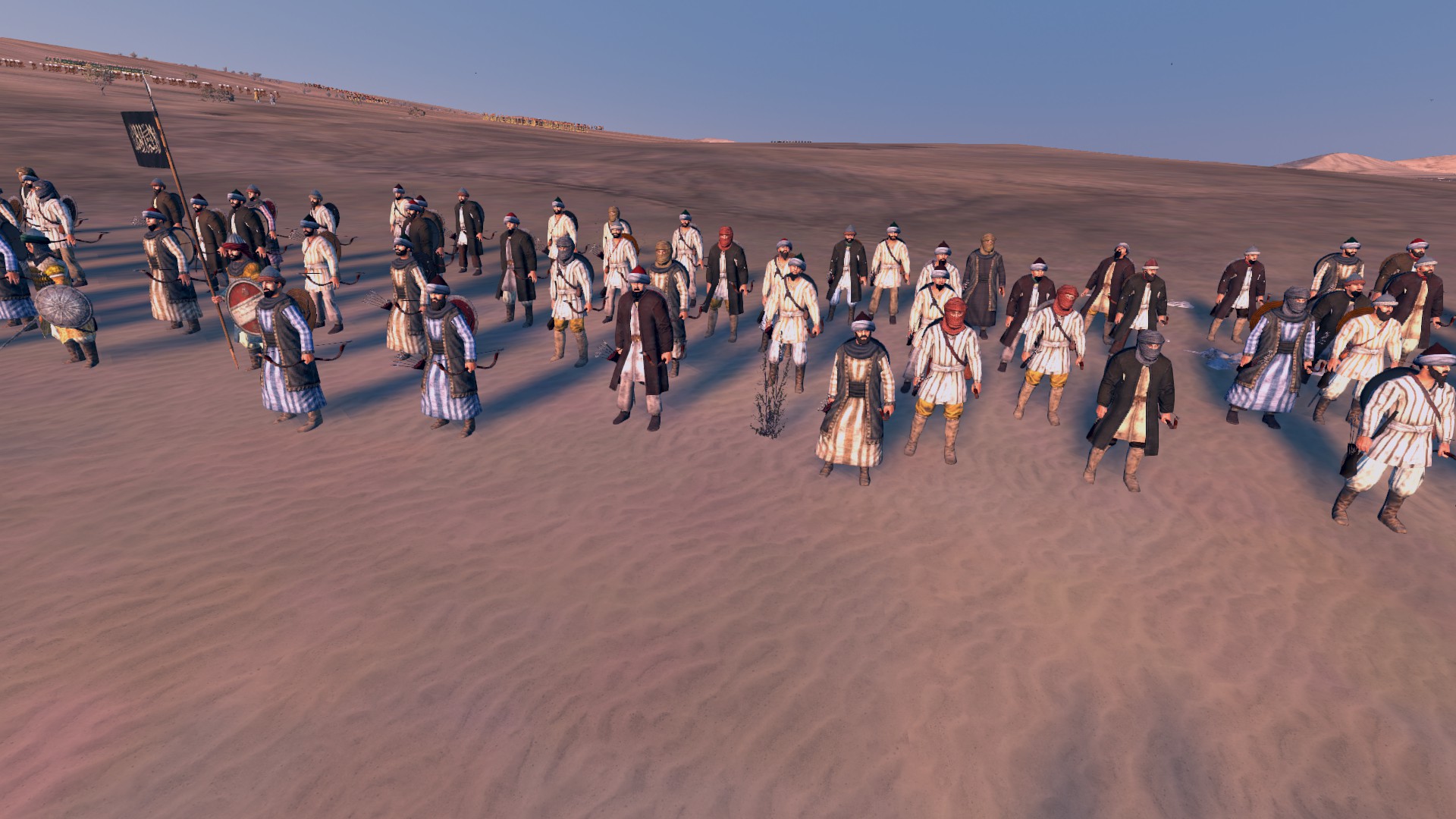
Tier 3
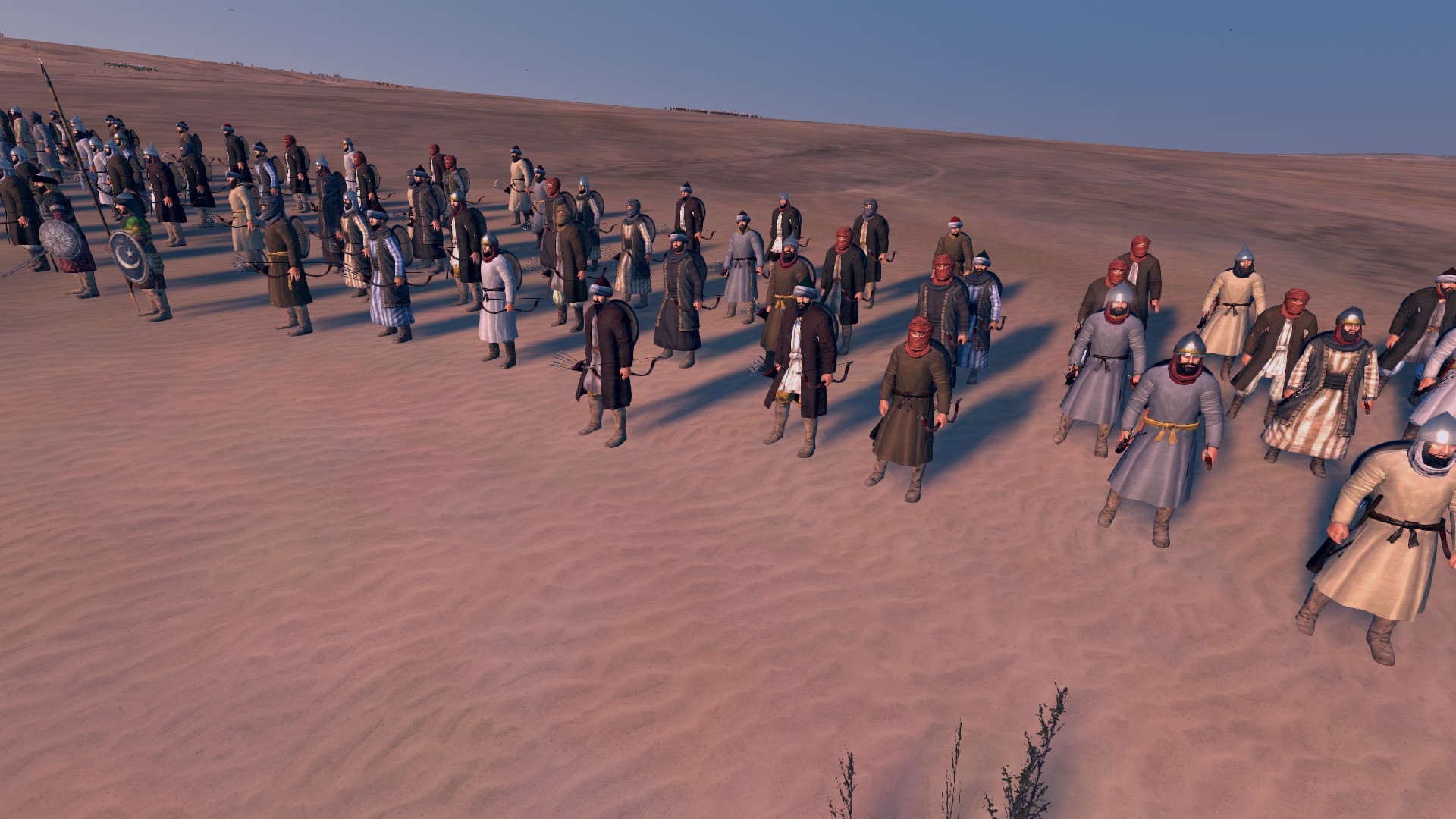
Turkman at-Ta'a
At-Turkman at-Ta'a means "Obedient Turkmen", Turkmen loyal to the central authority. Turkmen were the most favoured of Mamluk Sultanate's auxiliaries. Together with the Kurds, they were settled to guard Syria, Lebanon, and Palestine from threats. Some Turkmen tribes were given the honour and task of running the Barid postal network and supplying the Sultanate with warhorses. Each region fielded different composition of auxiliaries in the raised armies, with Syrian armies utilizing most of the Turkmen.
Tier 1
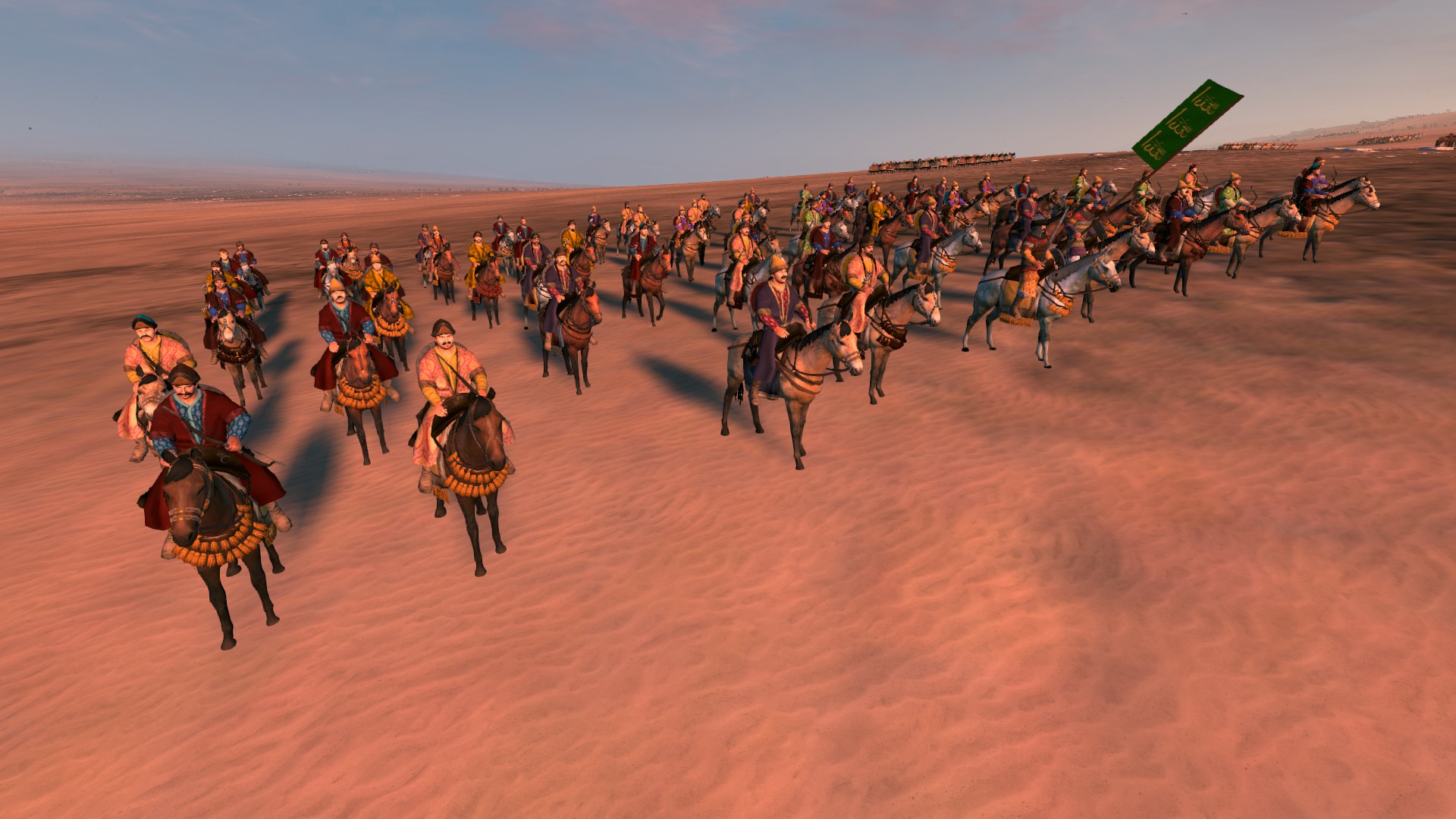
Tier 2
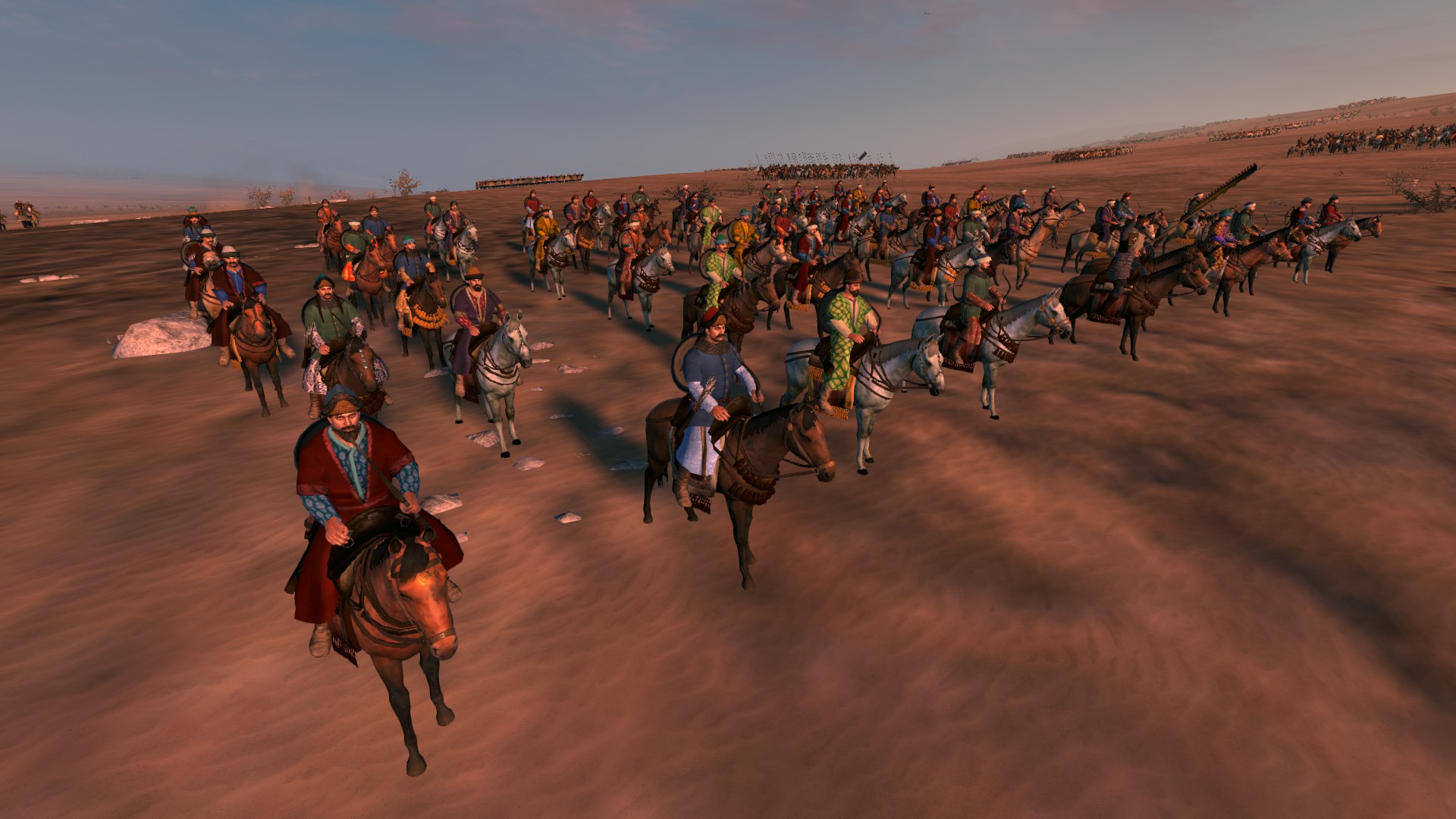
Tier 3
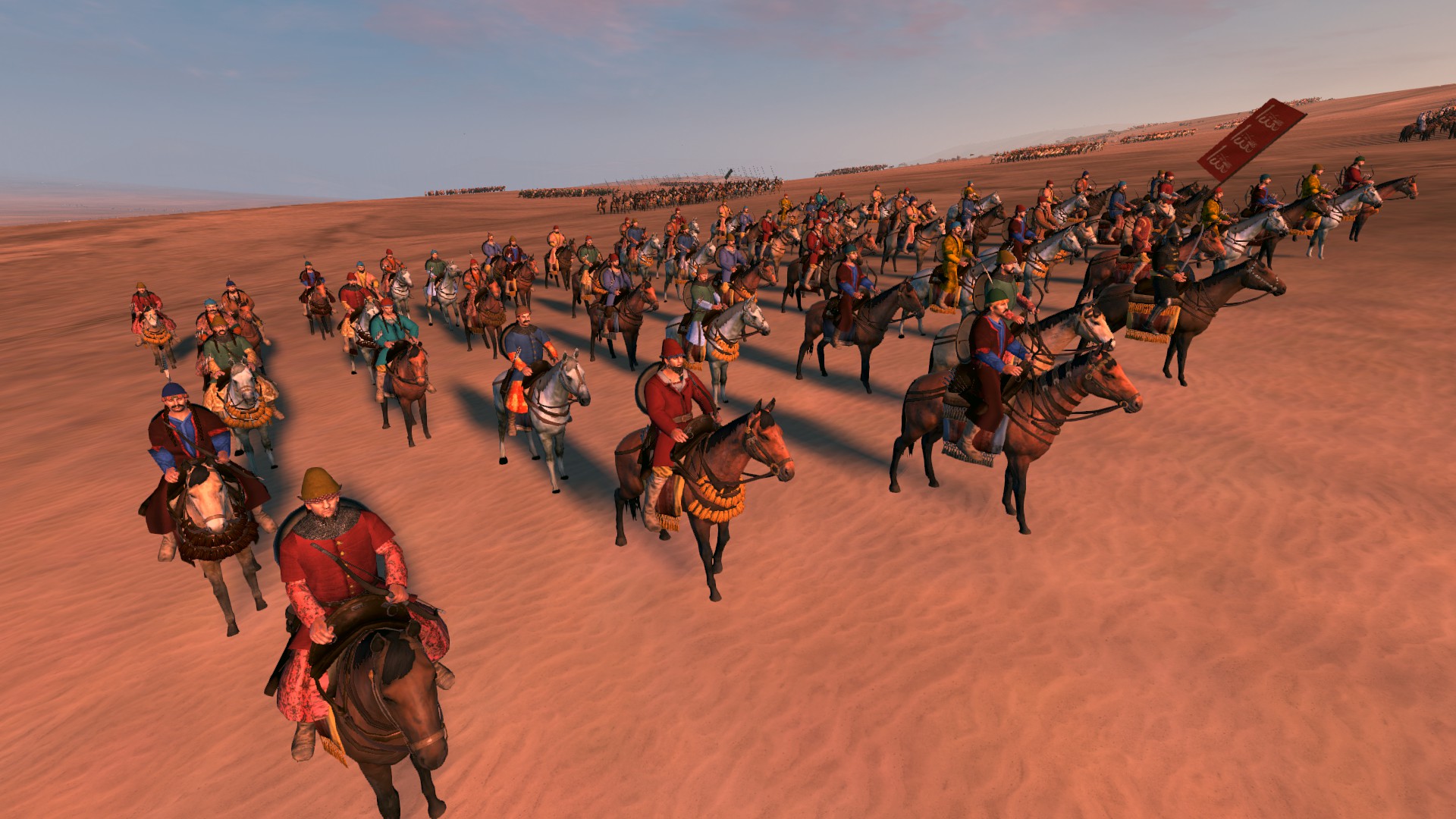
'Urban at-Ta'a
'Urban at-Ta'a, literally "Obedient Arabs" were Bedouin Nomads loyal to the central authority, serving as light cavalry, scouts, raiders, and screening force. Some Arab tribes were tasked with supplying horses to the Barid postal service, and guarding roads south to Sudan.
Mamluk-Bedouin Arab relation are not a smooth one, as the tribes tend to be unruly and disobedient. The Mamluks did not refrain from employing the harshest and cruellest measures in order to suppress the revolting 'Urban.
Tier 1
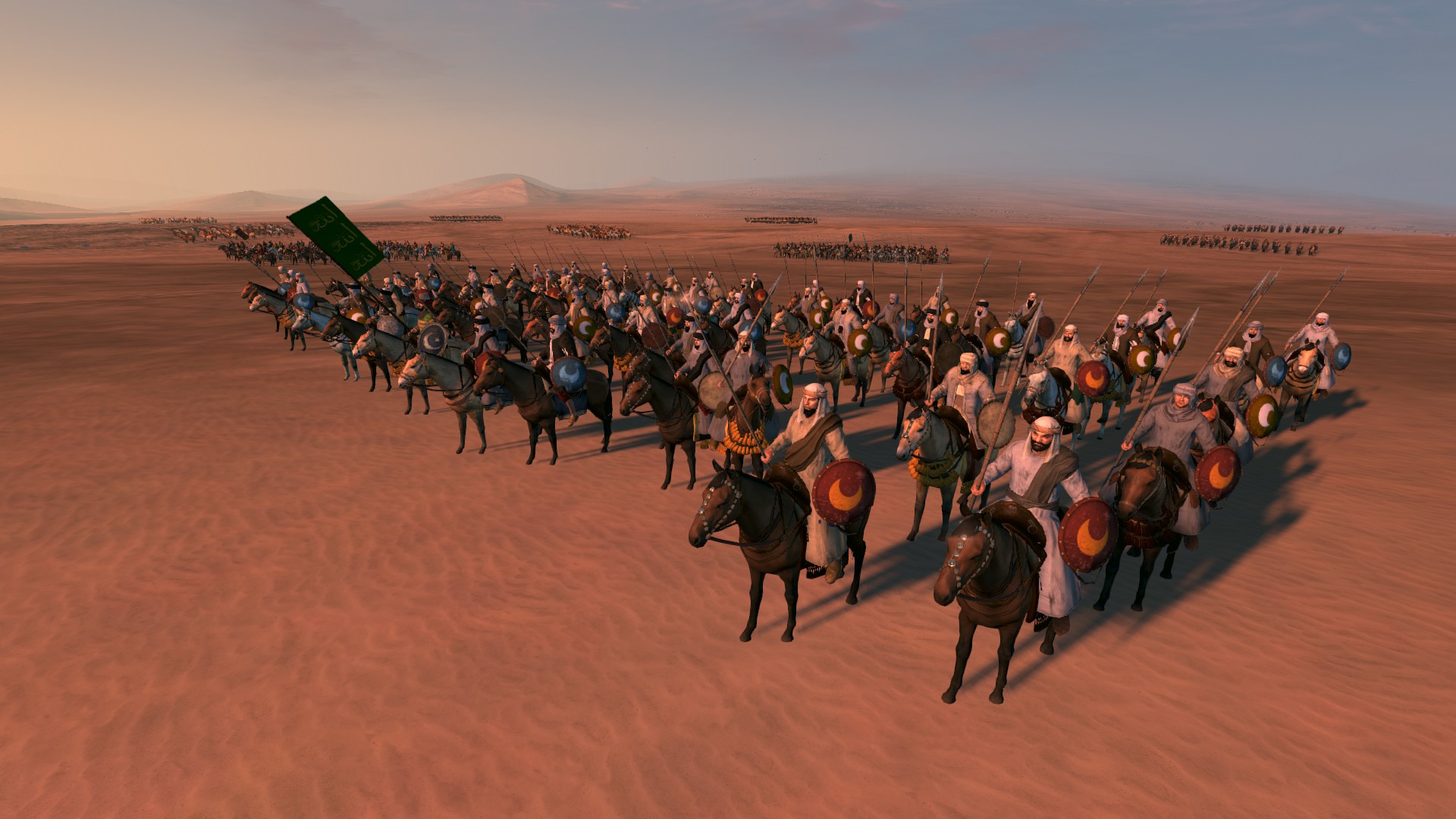
Tier 2
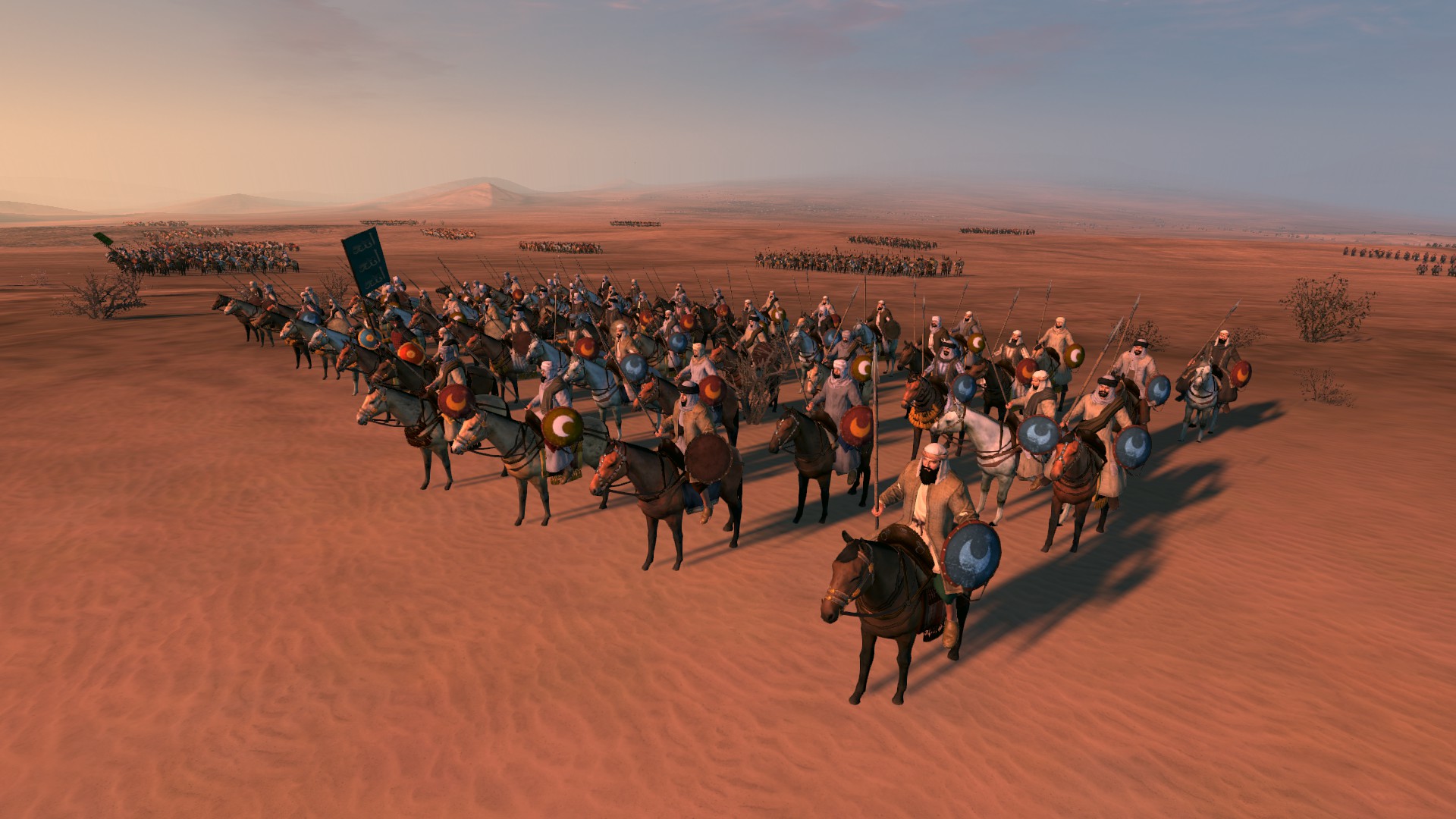
Tier 3
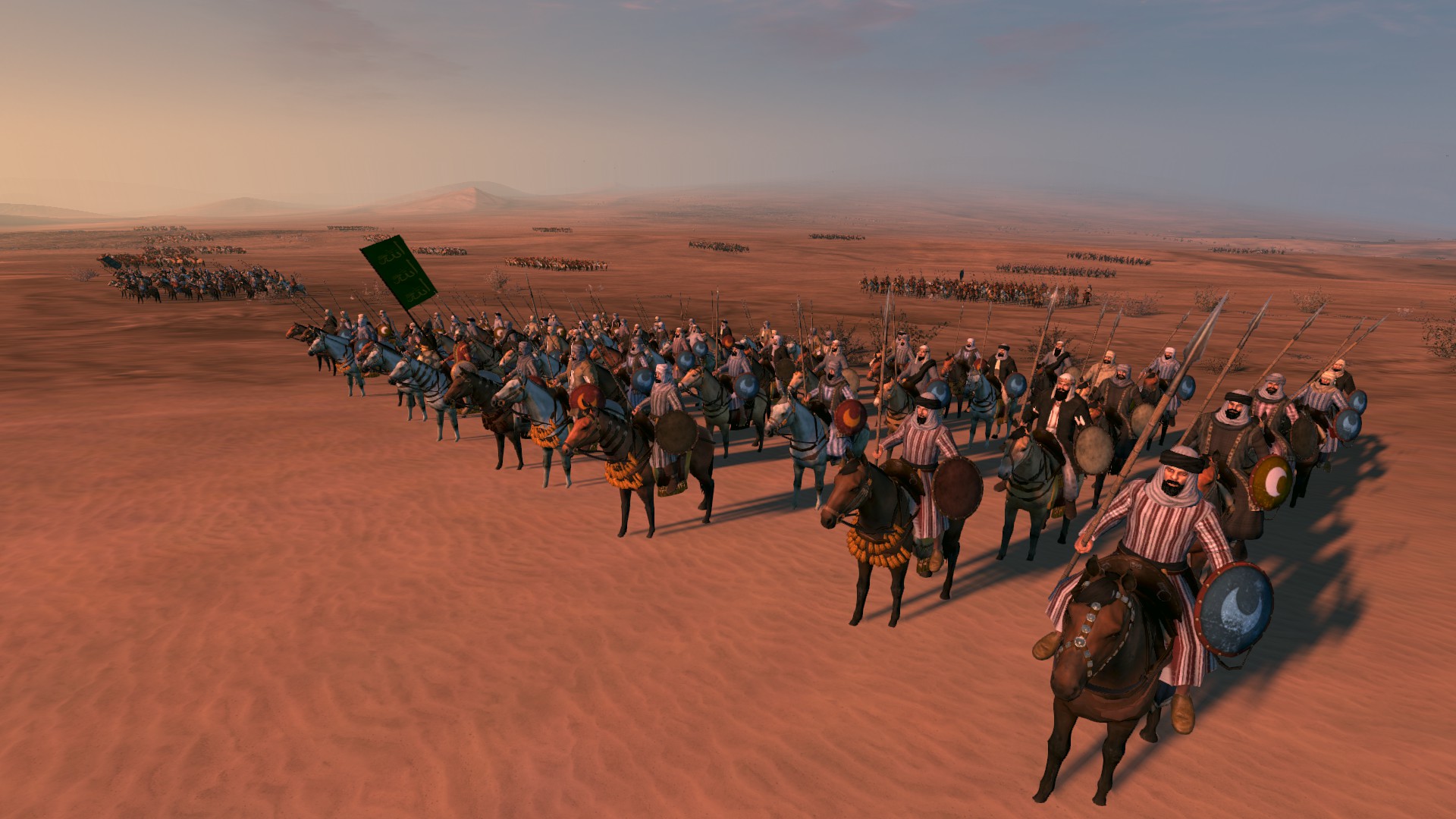
Jamal al-'Urban at-Ta'a
Tier 1
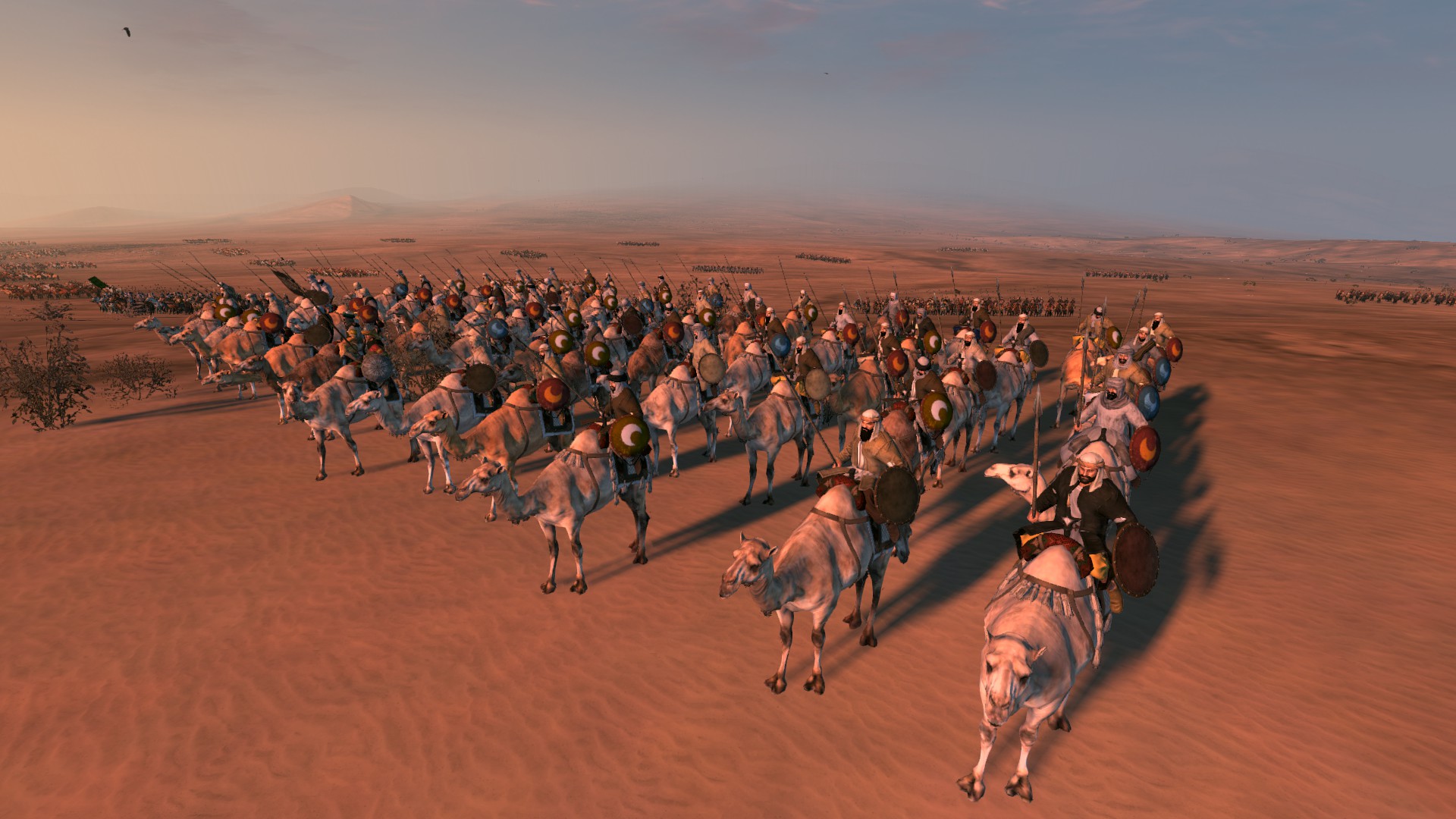
Tier 2
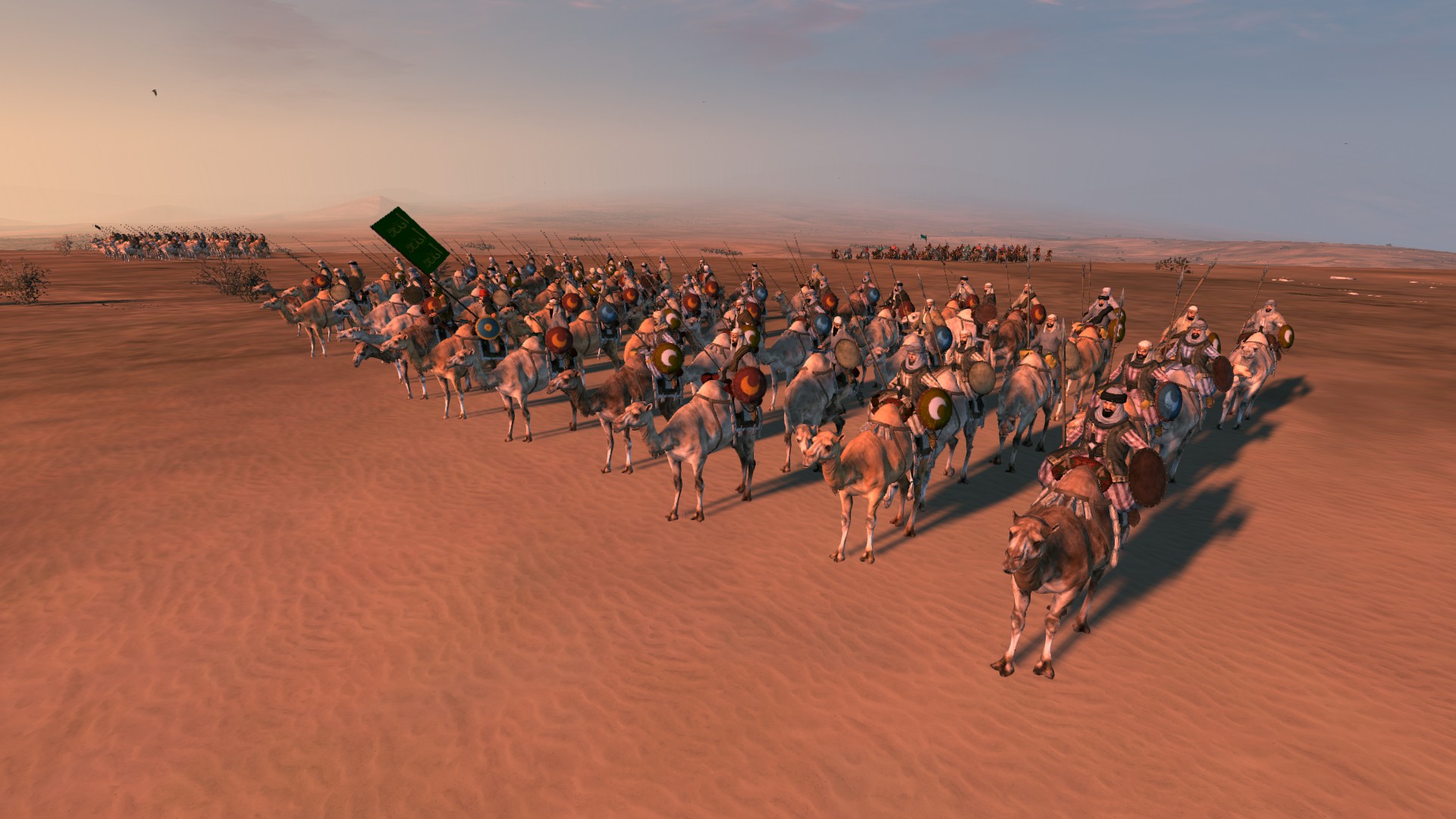
Tier 3
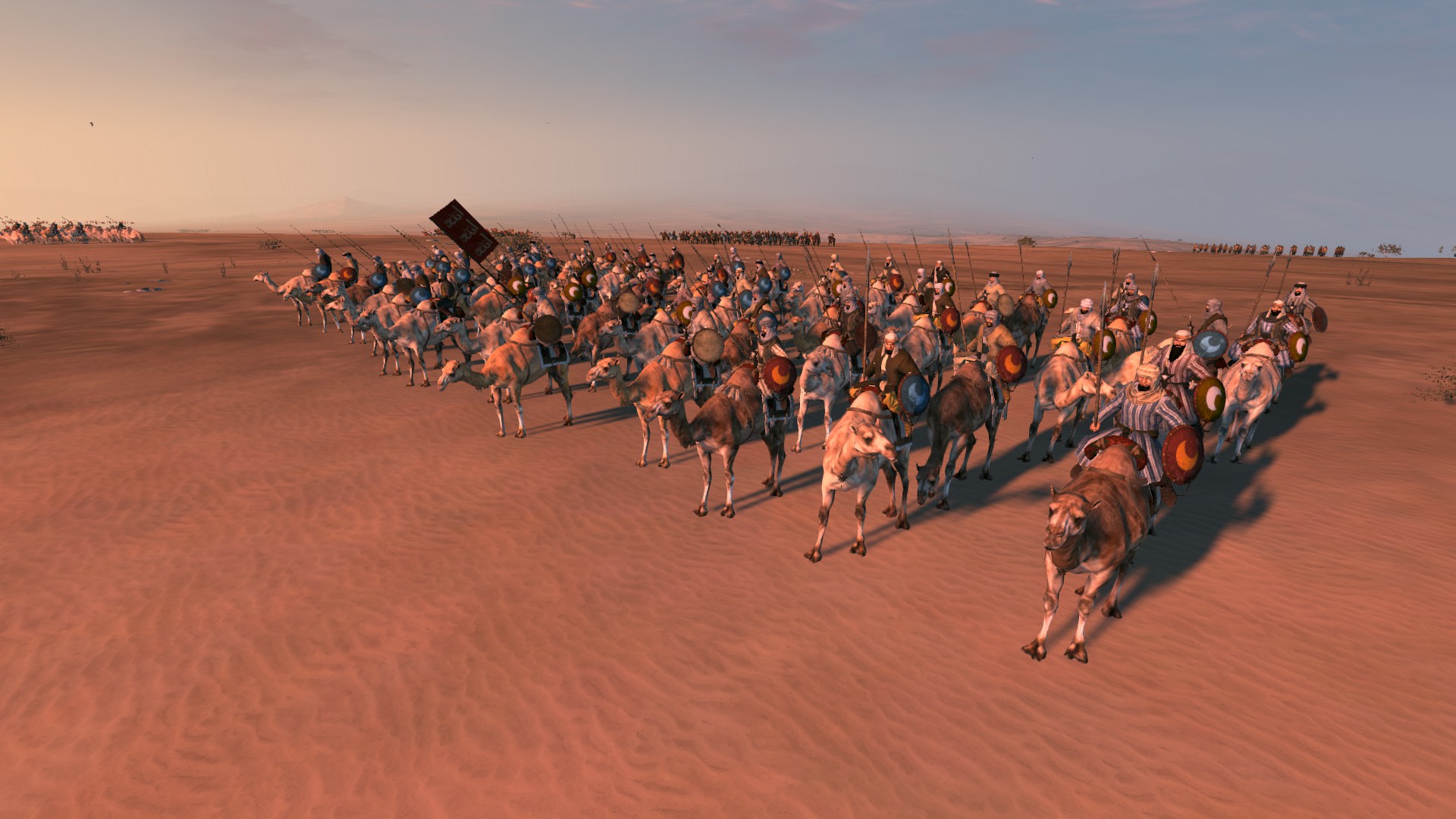
Credits and Special Thanks
Dontfearme22 as the developer and modeller of Abbasid Unit Roster, which in itself draws many cues and inspiration from Ayyubid and Mamluk for the depiction of its speculative Tier 2 and Tier 3.
Ltd. as the original developer of the old Ayyubid unit roster.
Zsimmortal for models and textures
Hessam Tameskani for models and textures
The creators of Crusaders Way to Expiation OSP Model. M&B Warband OSP Pack application to Total War mod is the humble start of MK1212, years before I joined the MK1212 team; and those assets are still in heavy use.
Phazer and Ole, as the creators of RME and The Asset Editor, tools which are instrumental in current TW modding.
And any other creators that helped in the creation of this factional unit roster.
Sources
"The Encyclopaedia of Islam", A-B, Vol. 1 (Brill, 1986)
"The Encyclopaedia of Islam", C-G, Vol. 2 (Brill, 1993)
"The Encyclopaedia of Islam", Mif-Naz, Vol. 7 (Brill, 1993)
Albrecht Fuess, Sultans with Horns: The Political Significance of Headgear in the Mamluk Empire. Mamluk Studies Review Vol.XII-2 (2008)
Darakshan Anjum, "State and Civilization Under the Syro-Egyptian Ayyubids (1171-1250). Aligarh Muslim University (2002)
David Ayalon, "Gunpowder and Firearms in The Mamluk Kingdom: A Challenge to Mediaeval Society" (Vallentine Mitchell & Co., London: 1956)
David Ayalon, Studies on the Structure of the Mamluk Army I, Bulletin of the School of Oriental and African Studies, University of London, Vol.15, No. 2 (1953)
David Ayalon, Studies on the Structure of the Mamluk Army II, Bulletin of the School of Oriental and African Studies, University of London, Vol.15, No. 3 (1953)
David Ayalon, The Auxiliary Forces of the Mamluk Sultanate, Der Islam, Vol. 65, No. 1
David Nicolle, "Campaign 161: The Third Crusade 1191" (Osprey Publishing, 2006)
David Nicolle, The Iconography of a Military Elite: Military Figures on an Early Thirteenth-Century Candlestick (Part II), Mamluk Studies Review Vol.XIX (2016)
Ian Heath, "Armies of the Middle Ages, Volume 2: The Ottoman Empire, The Eastern Europe, and the Near East 1300-1500" (Wargames Research Group, 1984)
Ian Heath, "Armies and Enemies of the Crusade 1096-1291" (Wargames Research, 1978)
Nakamachi Nobutaka, The Rank and Status of Military Refugees in the Mamluk Army: A Reconsideration of the Wafidiyah, Mamluk Studies Review X-1 (2006)
R. Stephen Humphreys, The Emergence of the Mamluk Army I, Studia Islamica, 1977, No. 45 (1977)
Reuven Amitai-Preiss, "Mongols and Mamluks The Mamluk-Īlkhānid War, 1260-1281" (Cambridge University Press: 1995)
William Leaf, Developments in the System of Armorial Insignia During the Ayyūbid and Mamluk Periods, Palestine Exploration Quarterly, 115:1(1983) 61-74,

Medieval Kingdoms Total War: Empire of Trebizond
News 5 commentsThe Empire of Trebizond was the last Rhomaioi remnant state to fell to the Turks

Medieval Kingdoms Total War: Empire of Nicaea
News 4 commentsNicaea, the Rhomaioi remnant state which recaptured Constantinople and restored the Empire. It was under the Palaiologians the walls of the city was defended...

Medieval Kingdoms Total War: Despotate of Epirus
News 6 commentsThe Westernmost of the Roman factions overhauled by Banskie

Medieval Kingdoms Total War: Albanian League of Lezhe
News 16 commentsAfter all these times, a year already, a new faction preview? Enjoy this unplayable faction, made by Banskie

Medieval Kingdoms Total War: December 2019 UI Sounds
Patch 46 commentsThis pack is a movie pack, so it won't register in the mod manager. It is self-activating, don't worry.






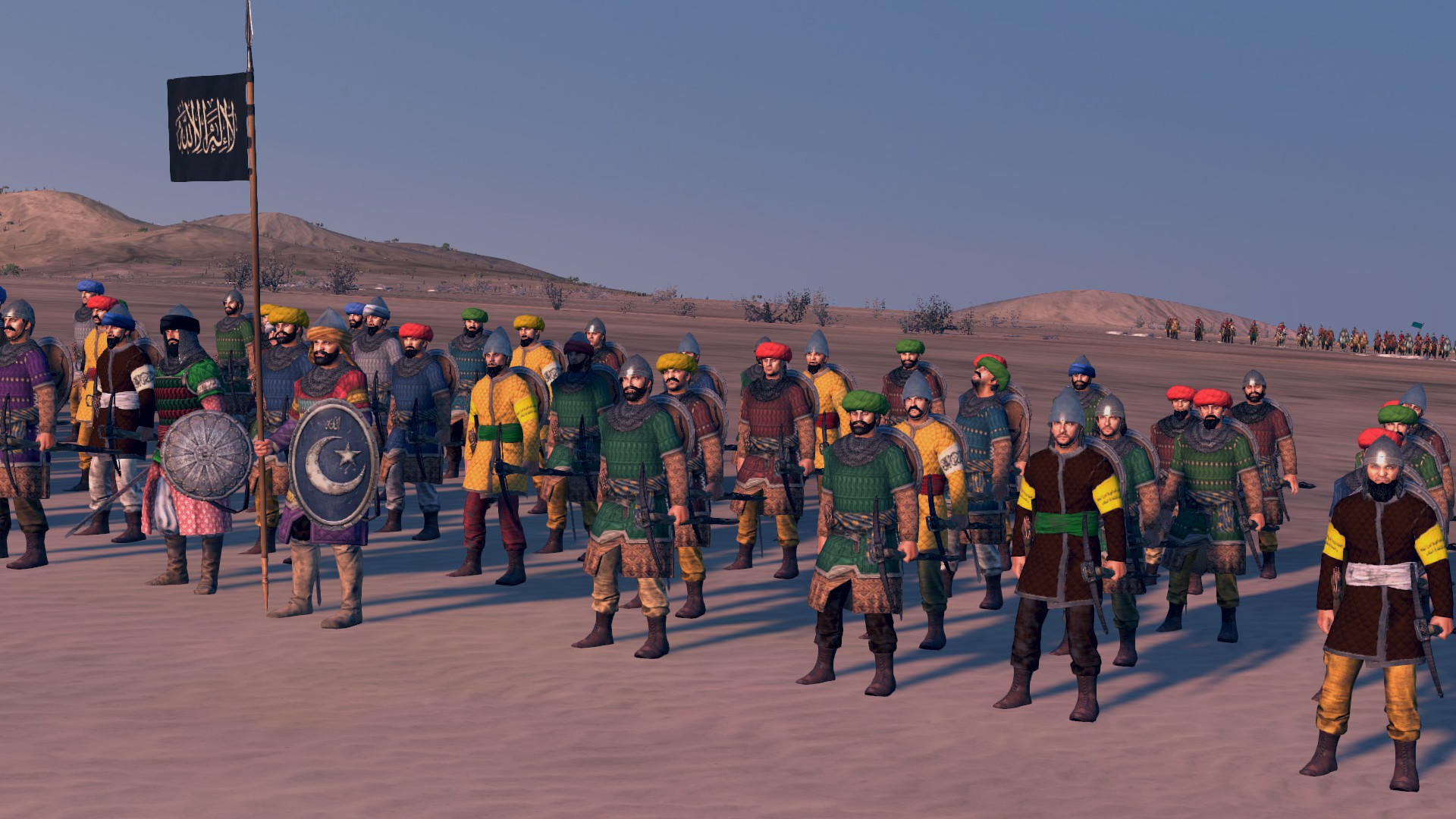









Y'all dead?
they update it on steam
how to download this?
Oh yea by the way the one who posted that problem was me
Hello guys . ,
where are the files to download , please?
Can you put the mod here so I can download it please?
will Kingdom Of Sweden get a bigger roster anytime soon?
Unfortunately they must wait for a dev to complete them
Hi
Love this mod.
Need help - my generals are still stuck on Early look despite being in Late period/tech tree. Any suggestions?
Thanks
That is not a problem on your side. Attila wasn't made with tech progression for Agent model in mind
Is there a way to fix this? I just see on Youtube some kings and generals are of the Late Period. Or is this likely only because they are showing scenes from custom battles?